Já imaginou conhecer a história da Humanidade contada através de seus sapatos, jogar poker com vários de você, entrar num vestiário de um time de hóquei ou mergulhar no universo da ciência entre muitas outras aventuras? Tudo isso e muito mais você pode vivenciar agora, acompanhando o que passei em Um Mês pelos Museus de Toronto.
Nesse post vou te mostrar os principais e mais exóticos museus de Toronto, no Canadá. Vamos começar nosso tour?

1 – Bata Shoe Museum
Se você gosta de sapatos e de história, com certeza vai se encantar pelo Bata Shoe Museum, um museu inaugurado em 1995 e totalmente dedicado aos sapatos. A fundadora desse museu foi Sonja Bata, que era apaixonada por sapatos e pela pesquisa de como eles refletem os costumes e estilos de uma sociedade.

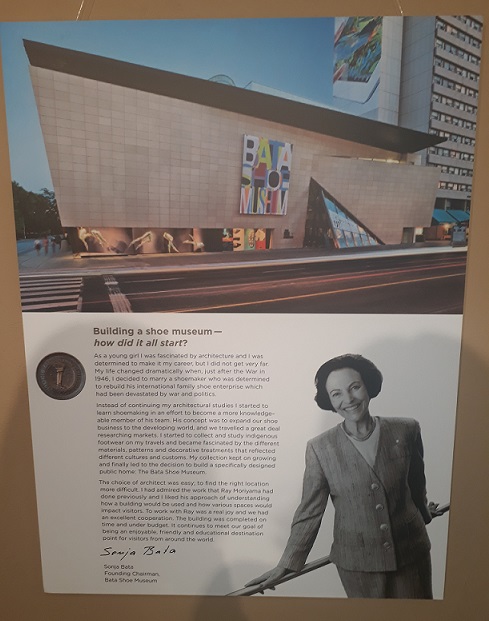
O Bata Shoe Museum tem em exposição mais de 1.000 peças entre calçados e outros acessórios, mas o acervo total chega a 13.000 objetos que contam mais de 4500 anos de história. Por falar em história vamos começar nossa visita pelo subsolo, onde está a exposição “All About Shoes” ou “Tudo sobre Sapatos” que nos mostra como eram os calçados desde a Pré-História, passando pelo Egito Antigo, Roma, Grécia, Índia, China entre outras civilizações.

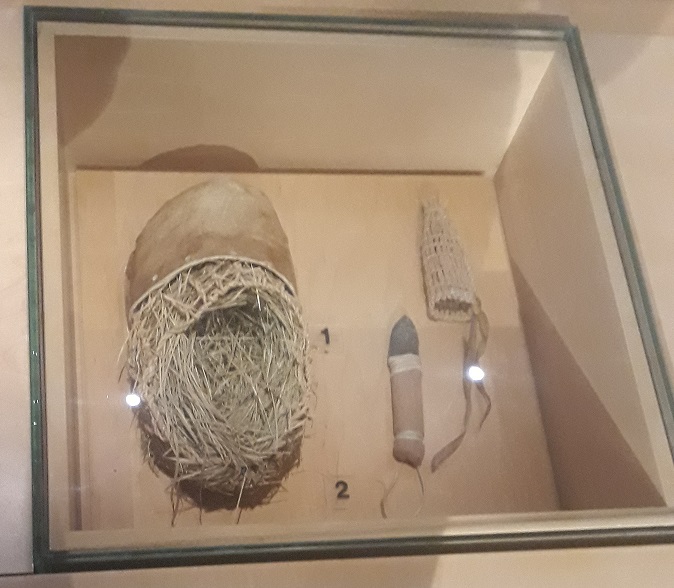
Pré-História 
Egípcio

Gregos e Romanos 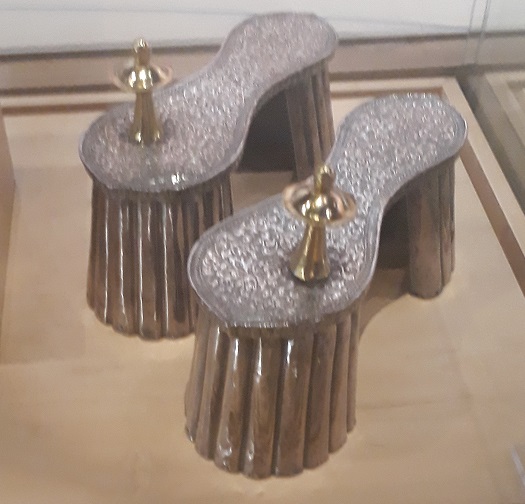
Indianos

É também nesse andar que encontramos os sapatos da Renascença e os que fizeram sucesso nas Décadas de 1920 a 1990.
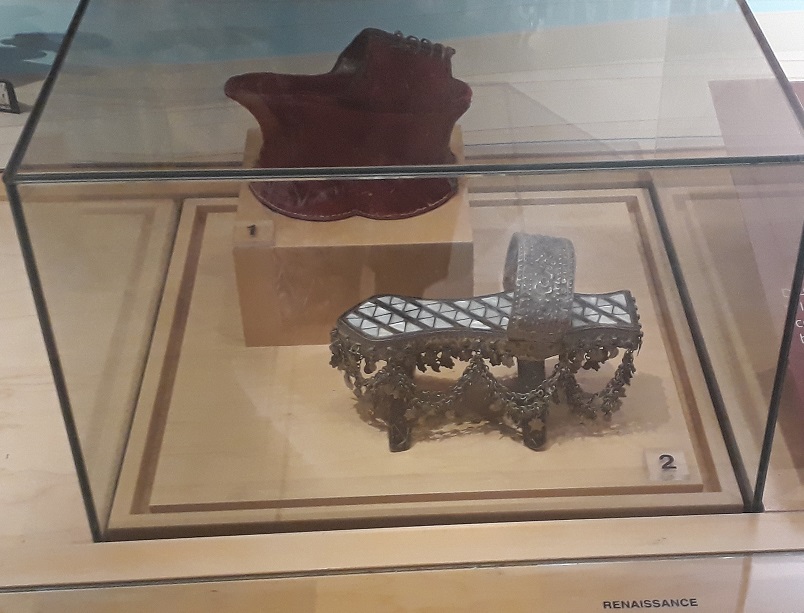

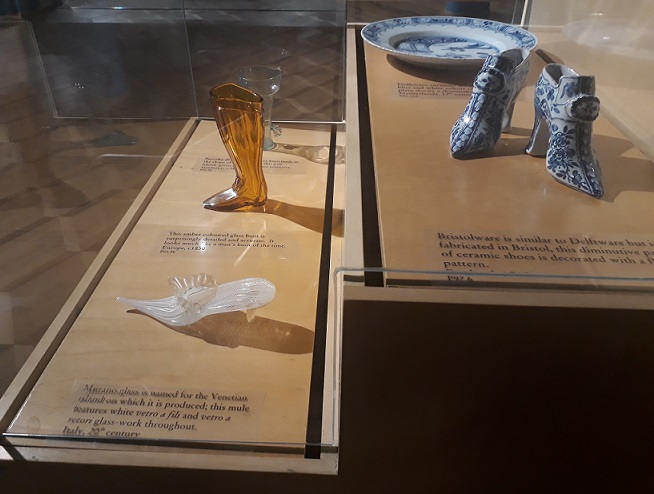
A exposição continua na escada, onde encontramos sapatos de cristal e porcelana, além de uma linda cerâmica trabalhada em homenagem à São Crispim, protetor dos sapateiros!

A Exposição “All About Shoes” continua no térreo, onde encontramos entre vários sapatos, as Botas de Elton John e também um “Qabâqib” da Síria, um tipo de calçado bem alto, ornamentado com prata e madrepérola utilizado para os “Hammans”, um tipo de banho turco.

Botas do Elton John 
Qabâqib
Seguimos agora para o segundo andar, onde fica a exposição “Art and Innovation” ou “Arte e Inovação”, que nos apresenta além de calçados, peças de vestuário dos moradores das regiões polares.
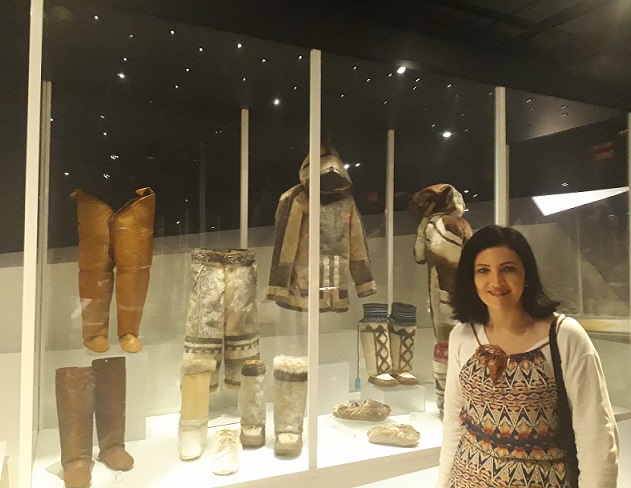
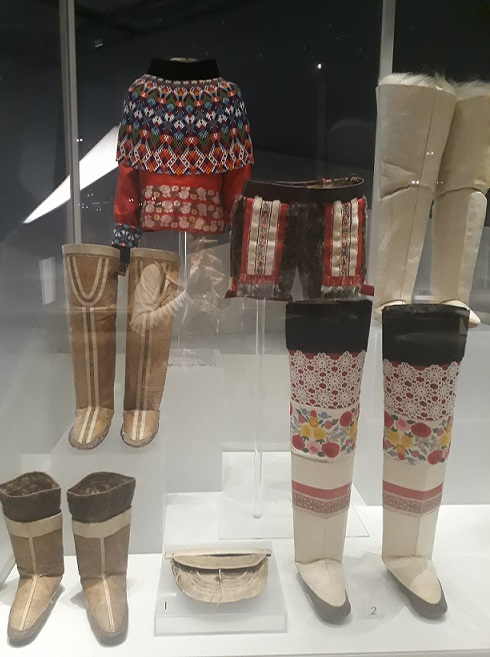
Também no segundo andar, encontramos a exposição “The Golden Standard” ou “O Padrão de Ouro”, onde estão os sapatos com detalhes dourados que mais fizeram sucesso pelo mundo, como o Tênis dourado com Asas do comercial da Adidas, que faz referência ao Deus Mensageiro Hermes da Mitologia Grega, o sapato italiano inspirado na Renascença de Giuseppe Zanotti, além de botas, calçados asiáticos e africanos, entre muitos outros.
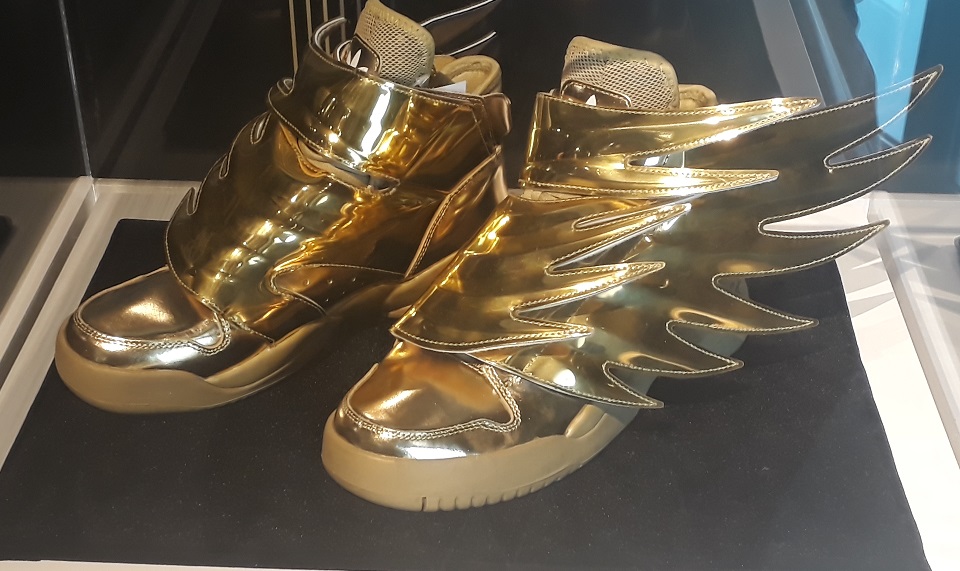
Tênis com Asas 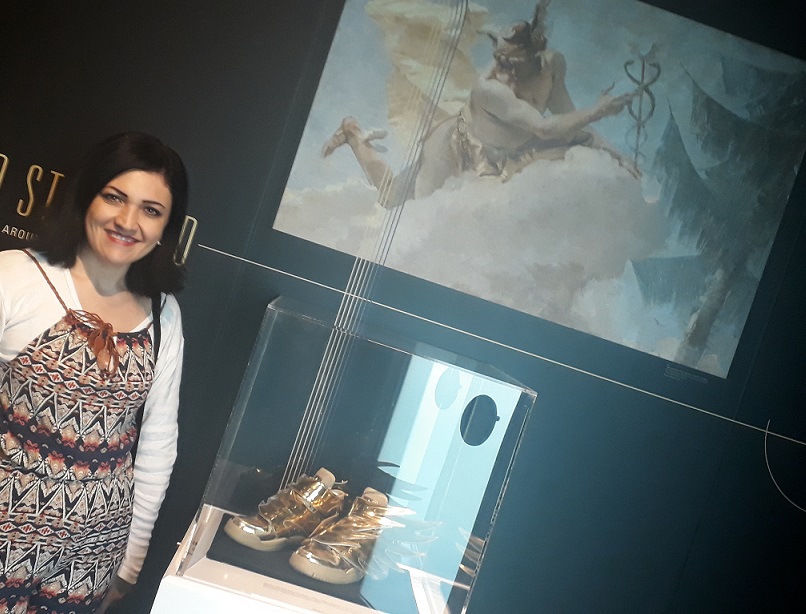
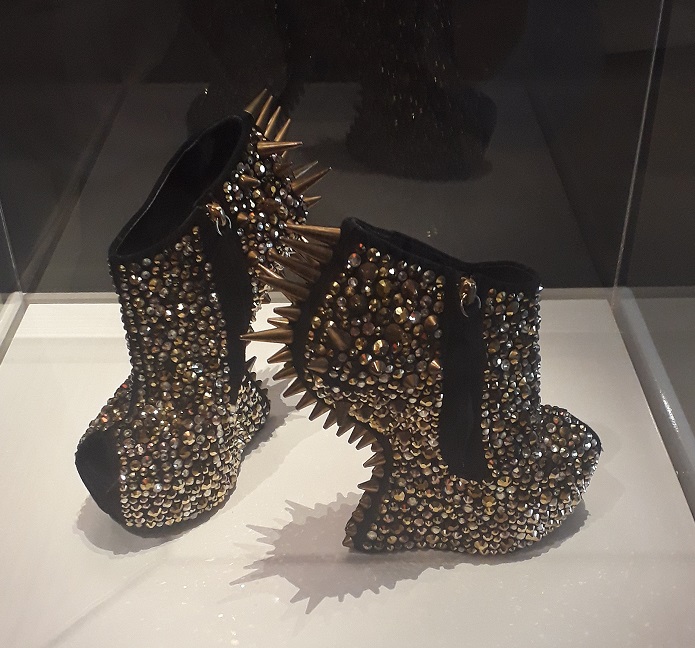
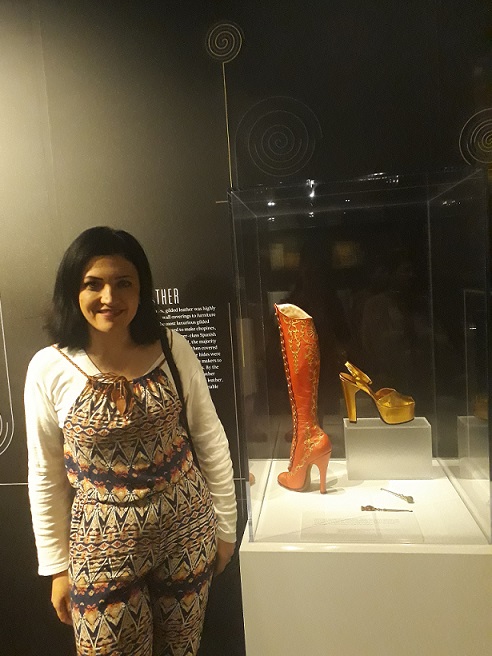
Poder das Botas 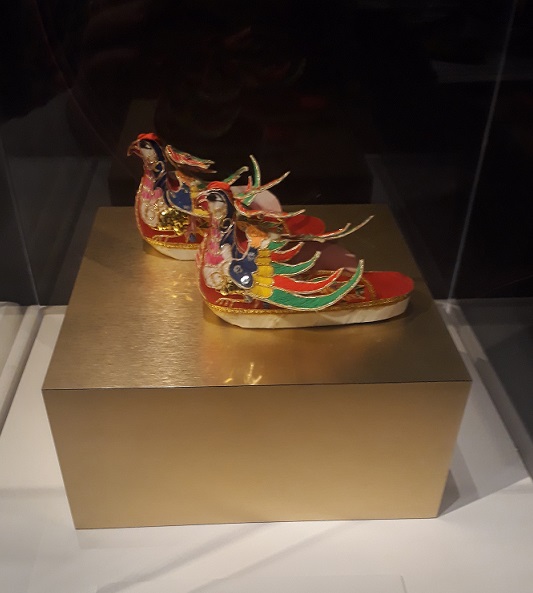
Sapato Asiático

E para finalizar nossa visita, vamos conhecer a exposição “Want” ou “Desejo”, que nos mostra os calçados da “Era da Depressão”, onde os desejos nascidos naquela época, com a falta de emprego e segurança, desenvolveram a criatividade e o design em várias formas artísticas, inclusive no universo da moda e dos calçados, onde temos como exemplo o sapato dourado: “All That Glitters”, além das clássicas plataformas, com um estilo diferenciado e uma ideia de como serão os sapatos do futuro.

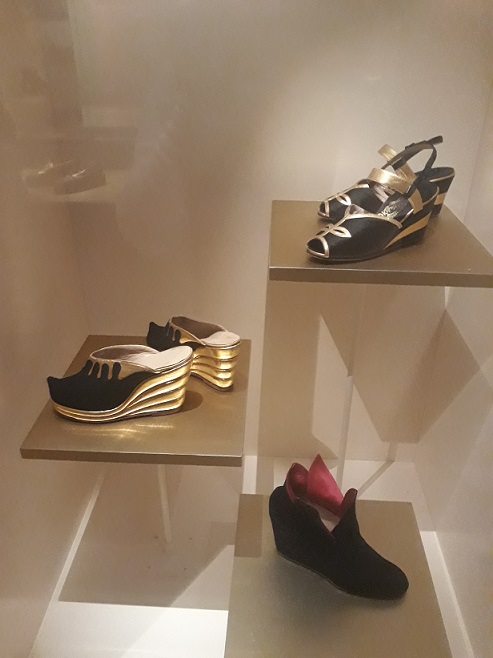
As Plataformas 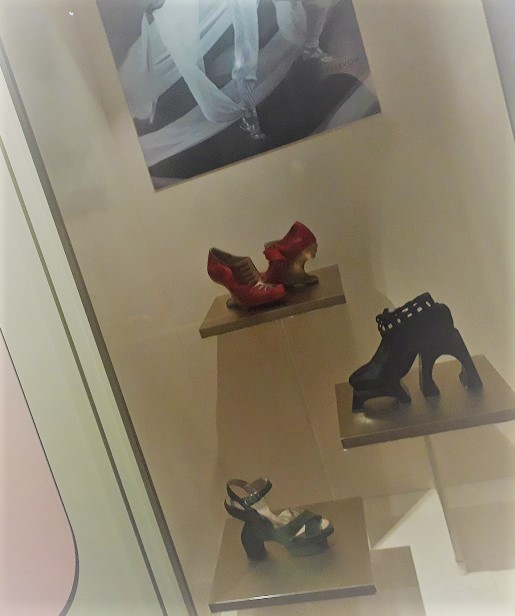
E os Sapatos do Futuro

O Bata Shoe Museum fica na 327 Bloor Street West (esquina com a St. George) e o ingresso adulto custa CAD$14 (mas há descontos para idosos, crianças, estudantes e combo família). Para saber mais informações, como horários e dias de funcionamento, é só dar uma conferida no site: http://batashoemuseum.ca/
2 – Ontario Science Centre
Se você gosta de ciência e tem curiosidade para saber como as coisas funcionam, vai adorar conhecer o Ontario Science Centre, que em 2019 comemorou 50 anos de existência, sempre buscando promover um diálogo entre tecnologia, ciência e a sociedade!!!
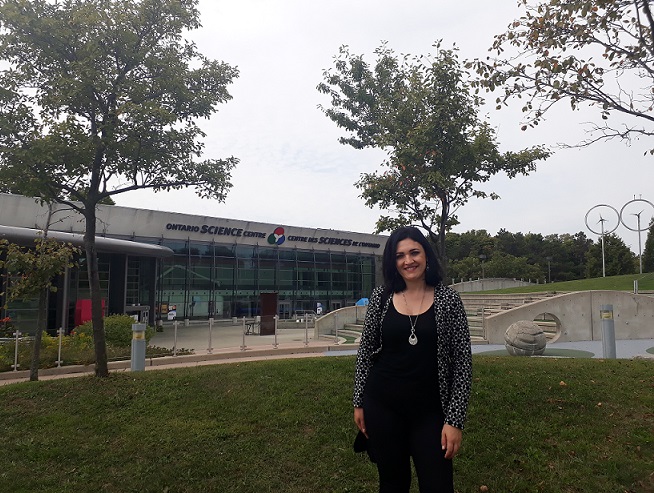

Para começar nossa visita vou te contar algo bem interessante sobre o Ontario Science Centre: o museu conta com seis níveis/andares, mas que vão aumentando conforme você vai descendo, isso mesmo, o “Level 6” fica no subsolo mais baixo, isso porque o museu foi construído numa espécie de ravina (barranco) e eles quiseram aproveitar essa estrutura para dar a ideia de ir adentrando ao universo da ciência.
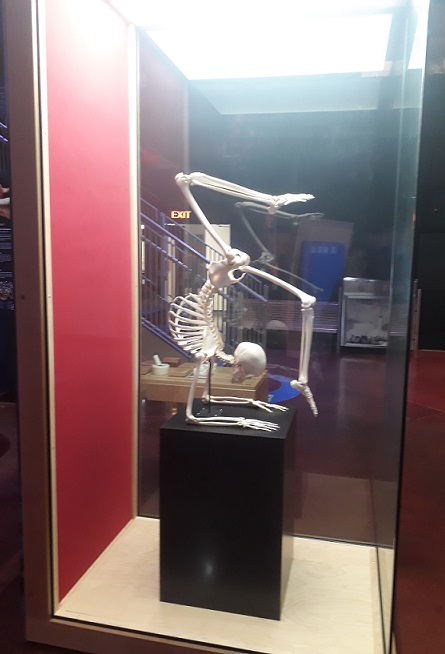
Aproveitando esse ensejo, começamos pelo nível mais profundo, o Level 6, onde tem uma ala dedicada ao corpo humano “The Astrazeneca Human Edge”, onde é possível aprender sobre vários órgãos e o funcionamento do nosso corpo de um jeito muito divertido. Meu sonho de consumo é fazer a postura dessa caveira nas aulas de yoga…rsrs
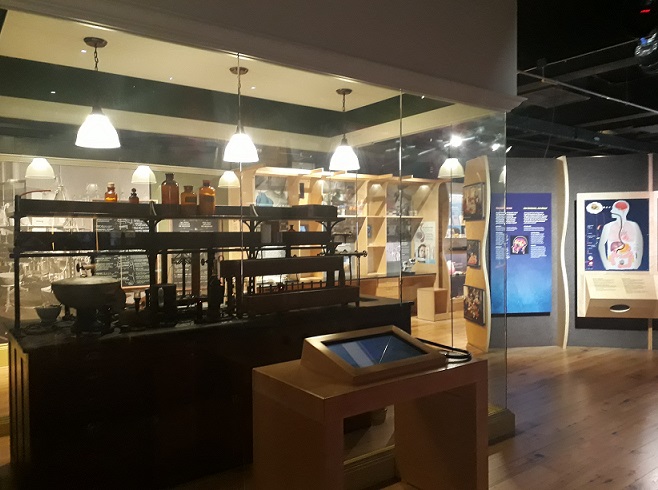

Pulmão 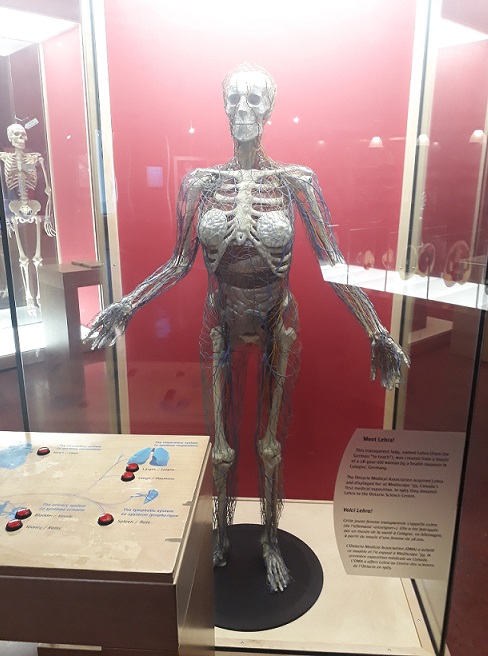
Nossas Veias
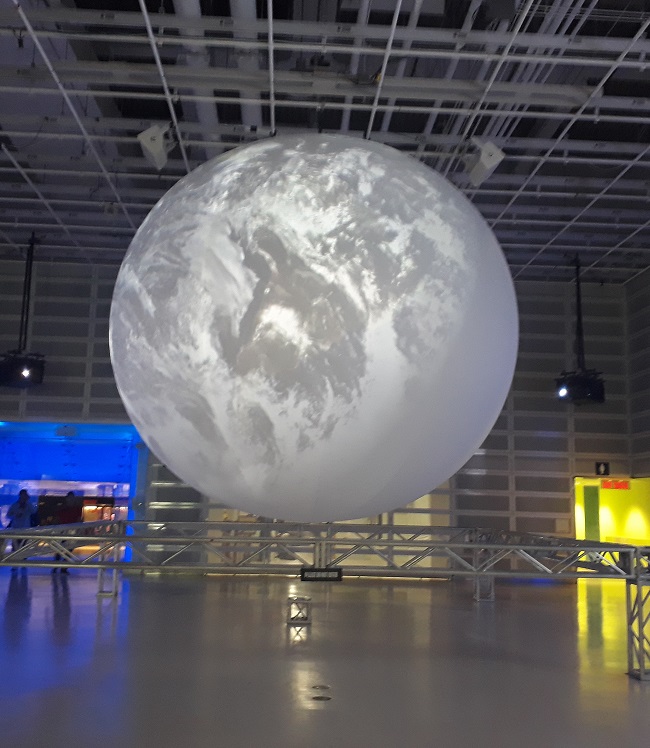
No centro do Level 6, estava a instalação temporária “Life of the Earth”: um enorme globo terreste, que recebia projeções sobre o meio ambiente e sua degradação pelo ser humano.
Outra ala bem interessante do Level 6 é a do centro de inovações: “Weston Family Innovation Centre”, onde você pode vivenciar várias experiências como ter asas, testar suas habilidades desenhando sem ver, descobrir como é a fabricação de papel, entre muitas outras atividades.
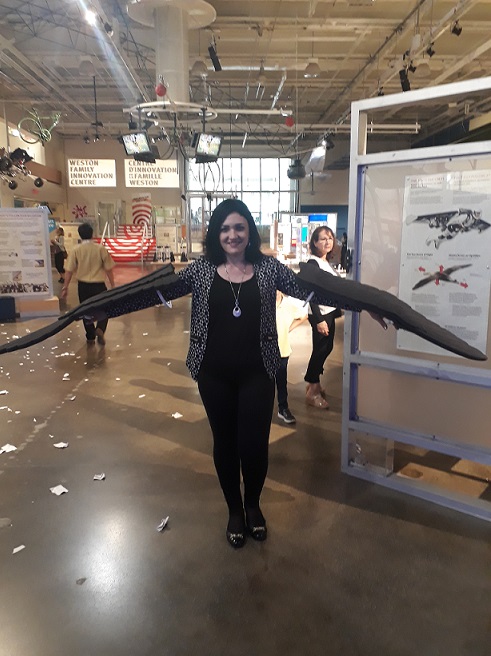


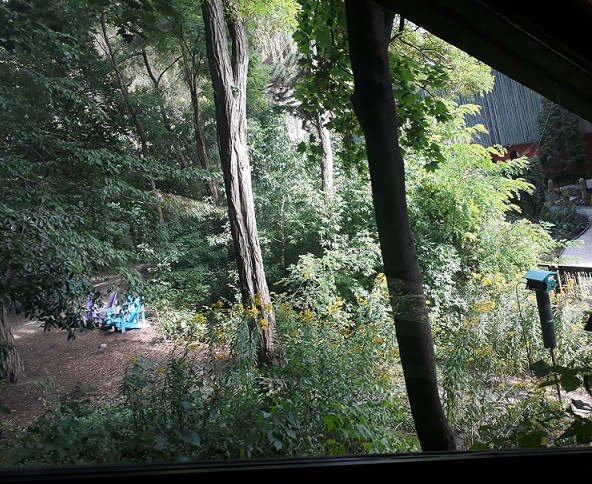
Na subida para o Level 5 e também para os níveis seguintes, das escadas rolantes é possível observar essa linda floresta que “abraça” o Ontario Science Centre. Se você estiver com tempo, pode aproveitar para caminhar por ela, contemplar os pássaros e relaxar com essa vista.

Chegando no Level 5, vamos visitar a ala “A Question of Truth” ou “Uma questão de verdade”, onde podemos ver o desenvolvimento de um jardim de um astronauta, bem como uma espaçonave, um robô de exploração espacial entre outros itens.
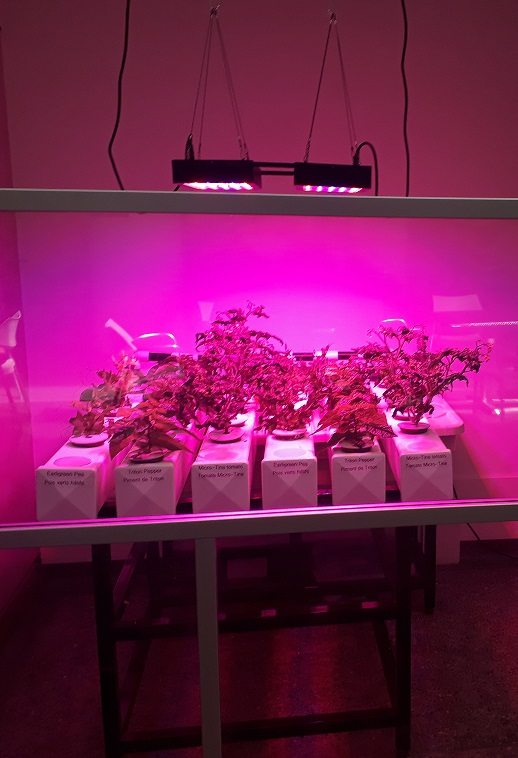
O Jardim Astronauta 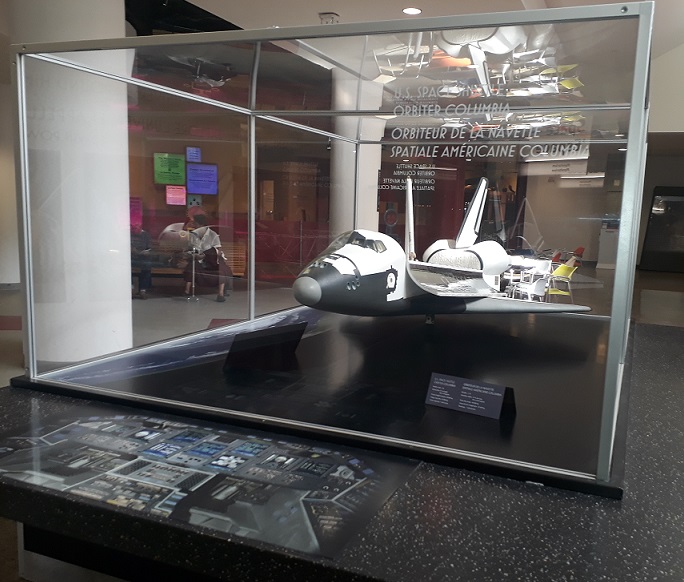
E a Espaçonave

No Level 4, somos convidados a explorar o Espaço, na ala Space, onde fica o planetário, e onde temos a oportunidade de ver pedras encontradas na Lua e meteoritos de Marte, além de aprendermos sobre a Lua, os Planetas, as Galáxias e as Estrelas e sobre instrumentos utilizados para a observação espacial, como telescópio, por exemplo, entre outros.



As Estrelas 
Telescópio
No Level 3 tem o acesso para o Terrace, que é mais uma parte de observação da Floresta, porém quando eu fui estava em reforma, não sei se já abriram. Então, a visita continuou no Level 2 onde fica a entrada e um corredor chamado de “Celebration Way”, que significa “Jeito de Celebrar”, que traz uma série de conquistas da humanidade desde a inauguração do museu em 1969.
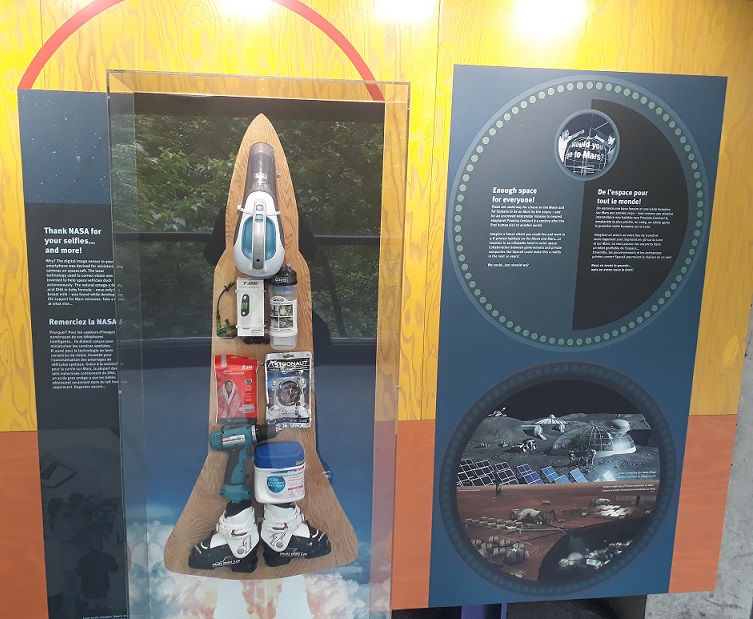
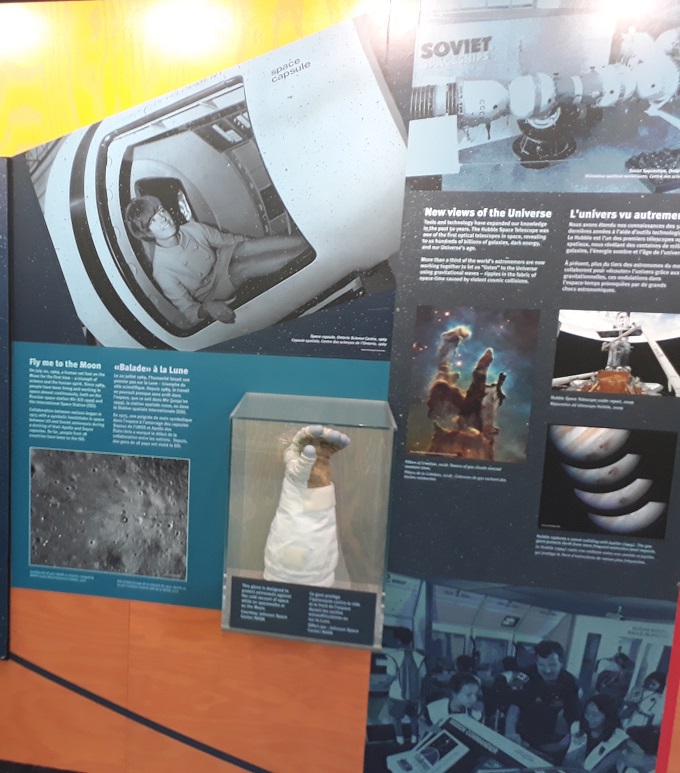
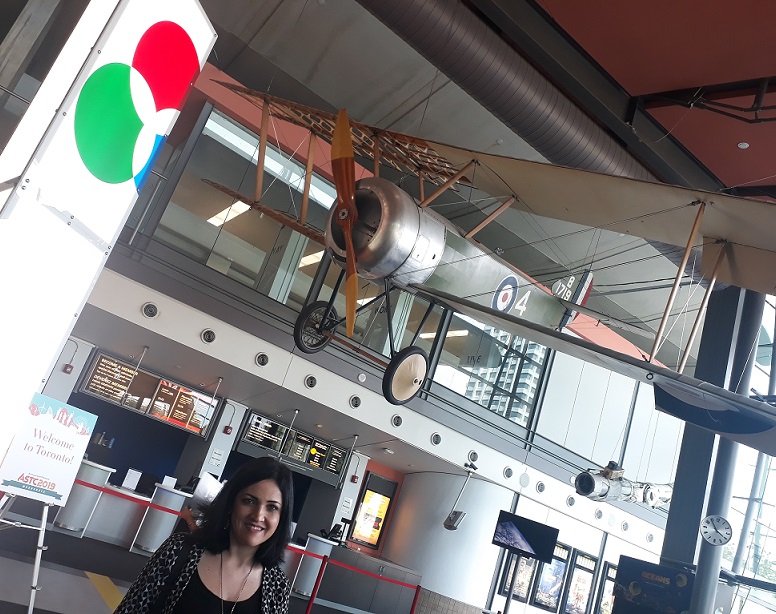
No Hall de Entrada¸ onde somos recepcionados por esse avião, fica a escada rolante que dá acesso ao Level 1, que fica no mezanino e abriga sala de conferência, auditório, entre outros espaços expositivos.Nossa visita a esse museu fica por aqui. Lembrando que o Ontario Science Centre está localizado no nº 770 da Don Mills Road na esquina com a Eglinton Avenue East e o ingresso adulto custa CAD$ 22 (mas tem desconto para estudantes, idosos e crianças e também está incluso no CityPass para opção entre esse museu ou o Toronto Zoo). E se quiser saber mais detalhes é só dar uma olhadinha no site: https://www.ontariosciencecentre.ca/
3 – Hockey Hall of Fame
Depois dessa aula de ciência no Ontario Science Centre, chegou a hora de descontrair e nada melhor que o esporte para nos proporcionar isso, não é mesmo? Então te convido a conhecer comigo o Hockey Hall of Fame, um museu inteiramente dedicado ao hóquei, esporte tão querido pelos canadenses.
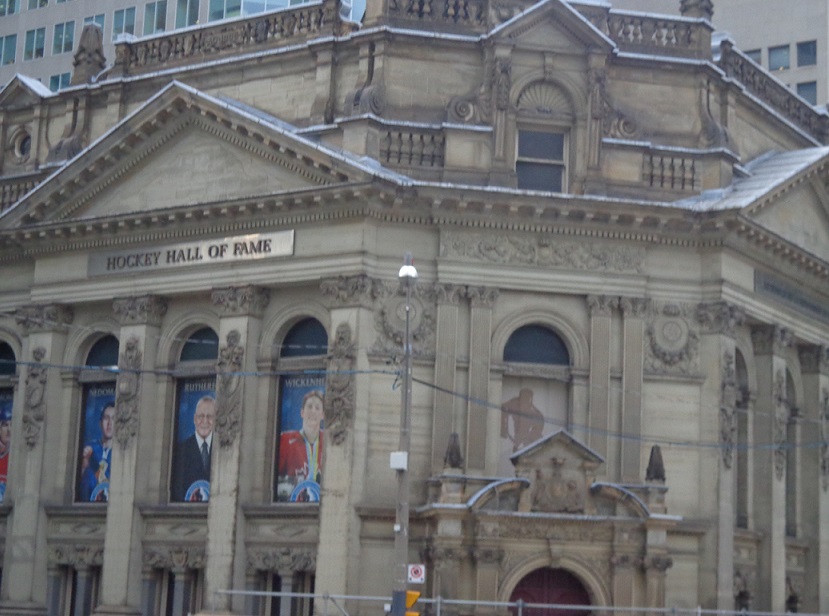

O Hockey Hall of Fame foi fundado em 1943 com a proposta de ser um memorial em homenagem aos grandes nomes que contribuíram para o desenvolvimento desse esporte e ocupa o prédio histórico do antigo Bank of Montreal desde 1993 (dá até pra entrar no cofre, aguenta um pouco que já te mostro).
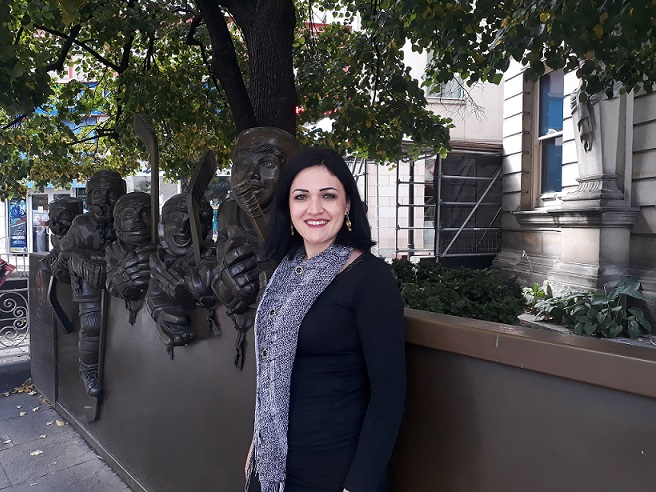
Logo que entramos já somos envolvidos pelo esporte, conhecendo sua história, através das roupas e equipamentos utilizados nos jogos (como os pucks e os sticks – ou os discos e as varas) dos grandes jogadores como Wayne Gretzky.
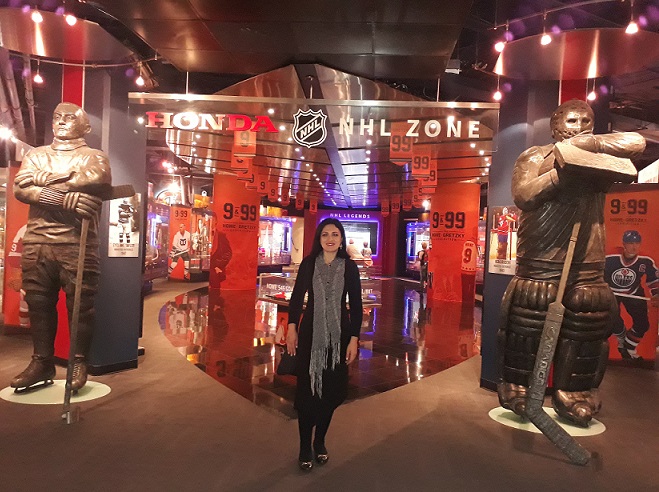
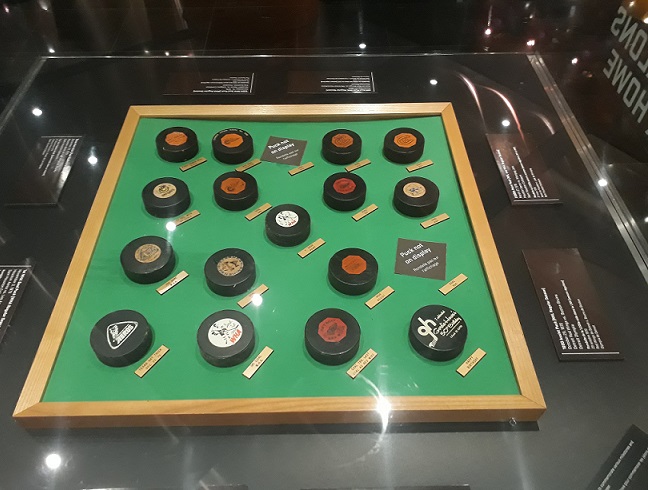
Discos 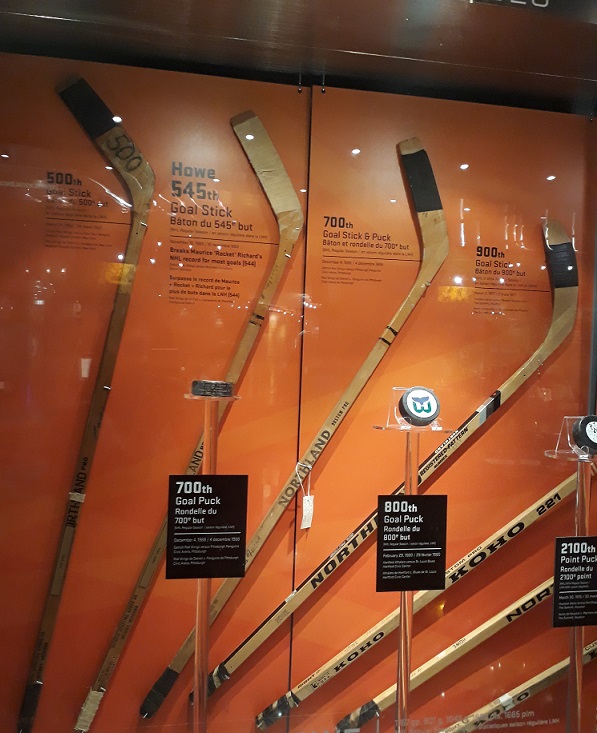
Varas

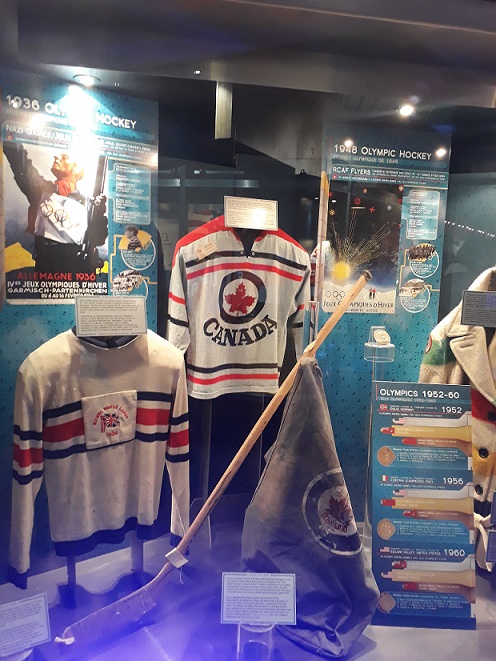
Outro lugar bem interessante de se visitar nesse museu é o Vestiário dos Jogadores de Hóquei, já imaginou que privilégio conhecer esse espaço? Pena que foi só criado para o Hockey Hall of Fame e não tinha nenhum jogador ali, de qualquer forma é muito legal porque você pode pegar os objetos para sentir como é.
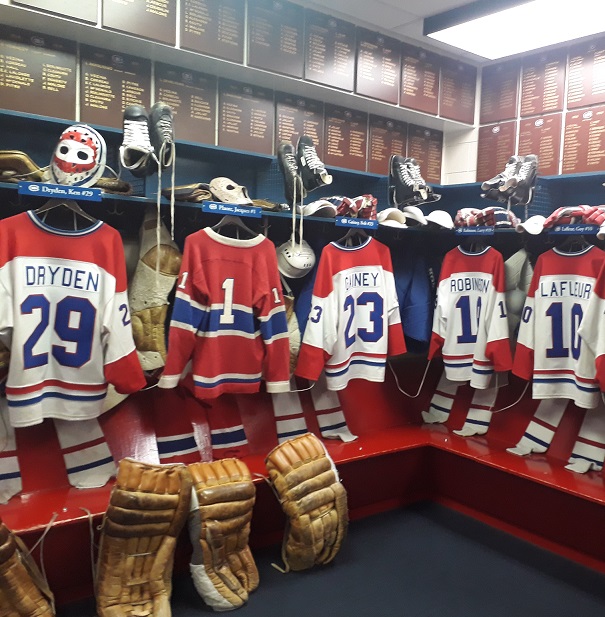
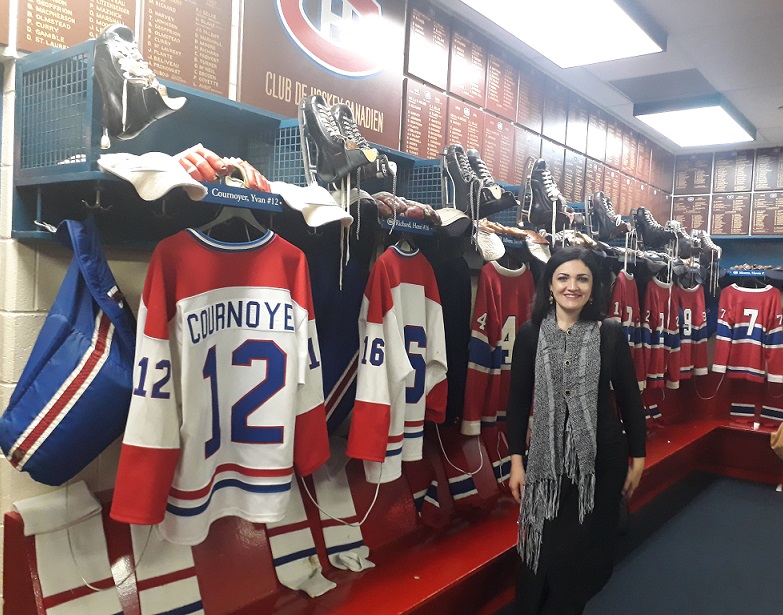
Visitando… 
O Vestiário
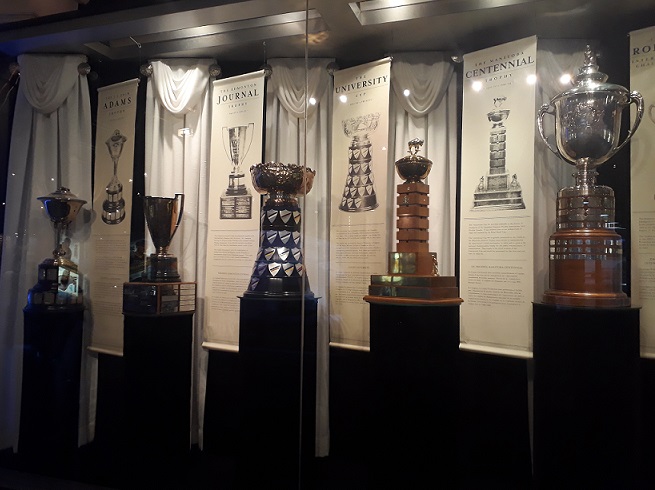
Também vale a pena conhecer a parte dos Troféus e depois a das Máscaras¸ onde estão expostas as mais diferentes e curiosas máscaras (eu me encantei pela do tigre) e onde podemos aprender sobre sua evolução.
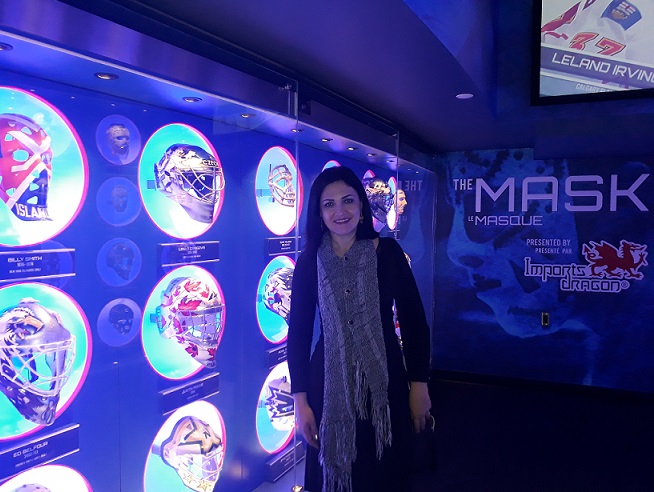

As Máscaras 
Destaque do Tigre
O Hockey Hall of Fame também tem uma parte bem interativa, onde você pode se arriscar a ser um jogador de hóquei, com um espaço de treinamento só seu!!!

Campo de Hockey 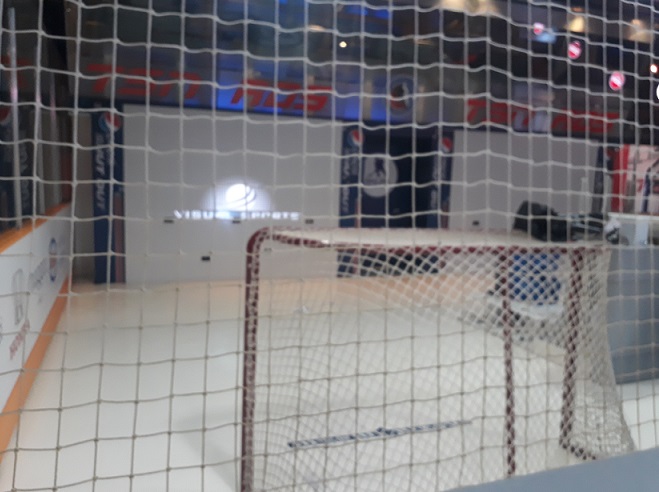
Mas se você não conhece muito sobre hóquei e quer saber as principais regras, posições em campo, as formações, as habilidades que um jogador deve ter, entre muitas outras dicas de treinamento é só acessar o site da Sport Fitness Advisor: https://www.sport-fitness-advisor.com/hockey-training.html e já ir se preparando para o jogo!!!
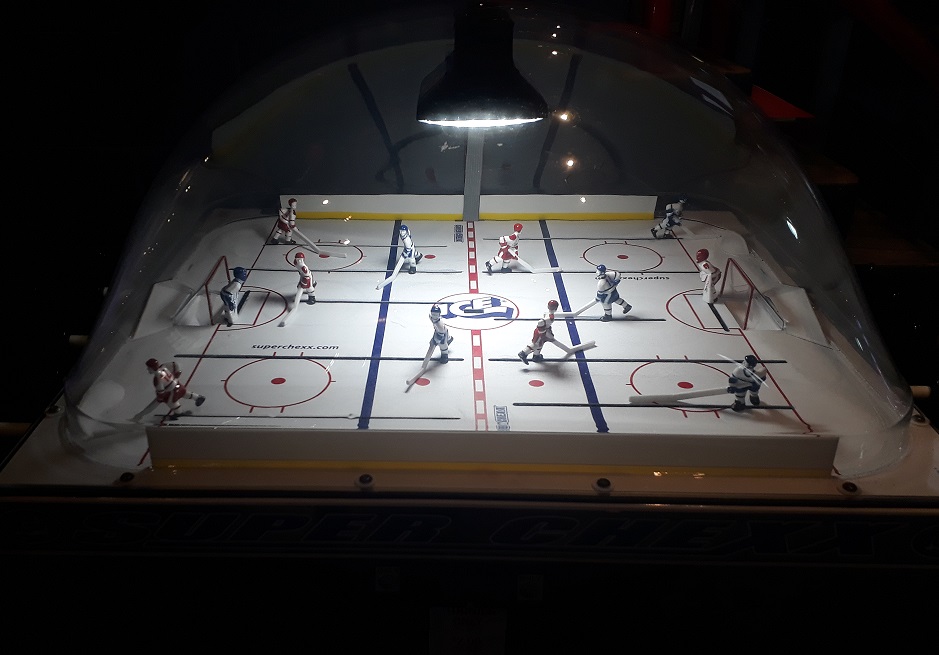
Você também pode jogar pebolim, assistir a partidas de hóquei, e ver como é grande a quantidade de produtos ligados a esse esporte.
E para finalizar a visita vamos conhecer o Esso Great Hall, que fica no piso superior e abriga os troféus mais importantes e uma homenagem aos grandes nomes do hóquei.


O Troféu… 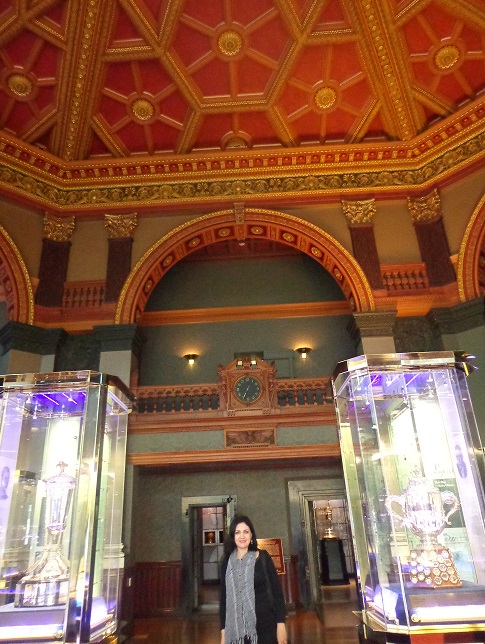
E Eu
E é nesse andar que podemos ver as instalações originais do Banco, como esse belíssimo domo, construído em 1855 por Robert McCausland e decorado com figuras mitológicas e emblemas provinciais. Além do cofre (como te prometi no começo, lembra?)
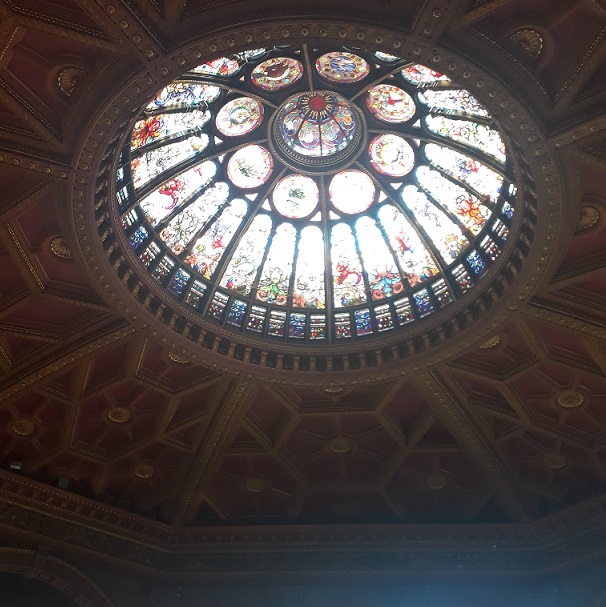
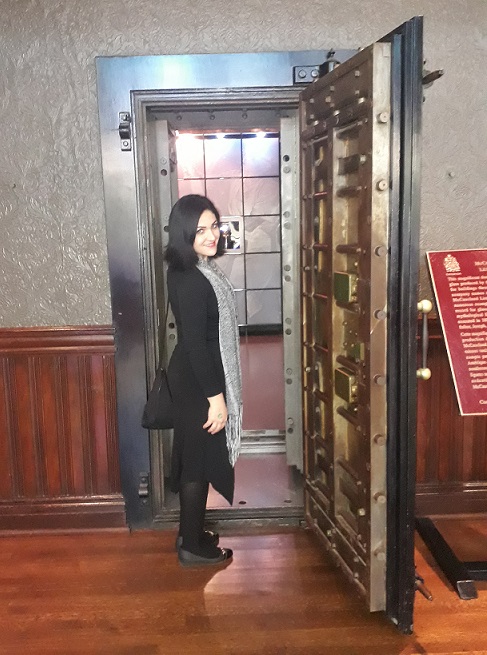
Me acompanha 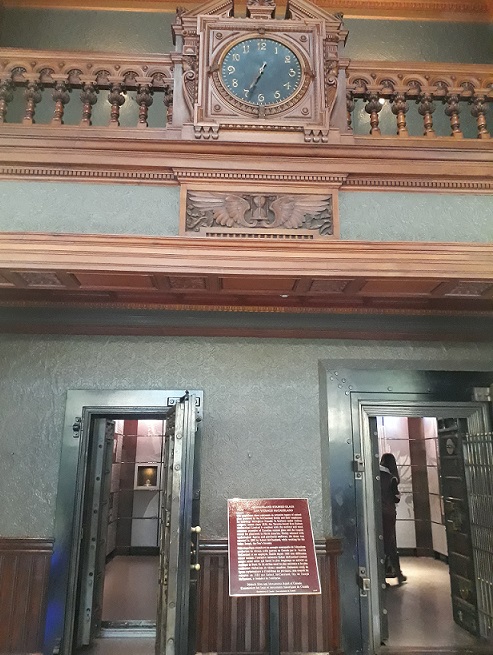
Na visita ao cofre?
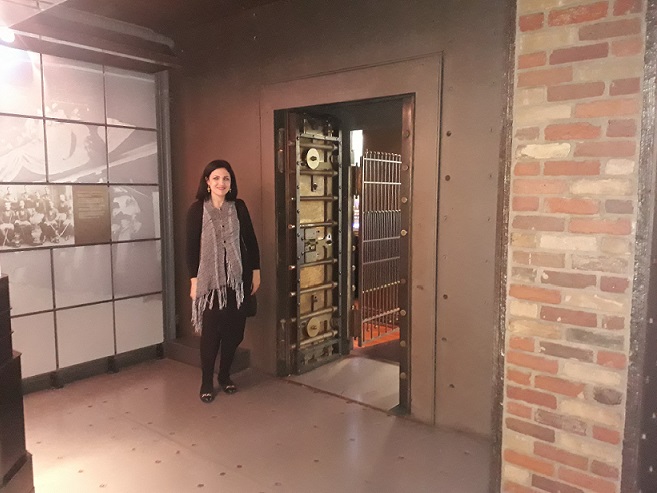
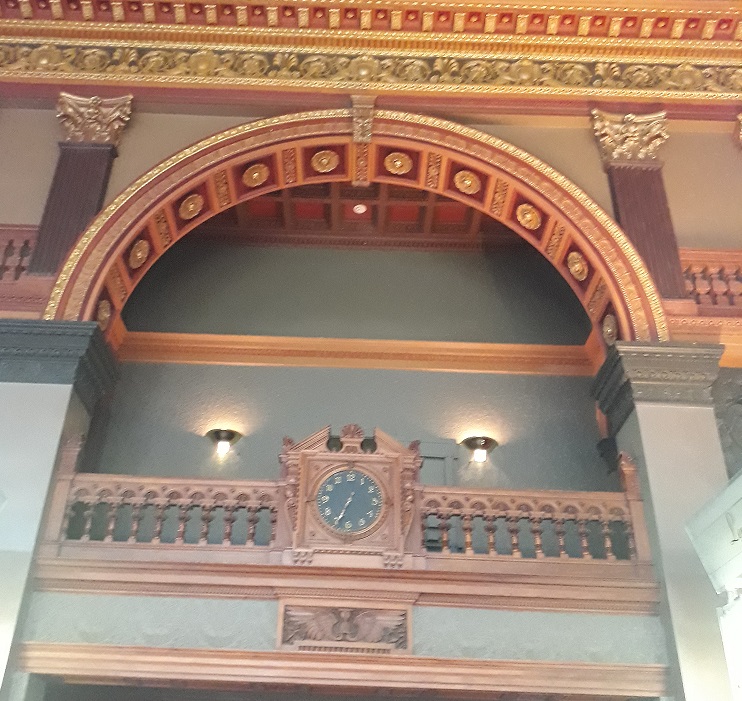

Um belíssimo passeio, não achou? O Hockey Hall of Fame está localizado na esquina da Yonge com a Front Street no Brookfield Place. O ingresso adulto custa CAD$20 (mas tem desconto para crianças e idosos). Ah! Ali também tem uma lojinha de produtos relacionados ao esporte e para saber mais informações é só conferir o site: https://www.hhof.com/
4 – Museum of Illusions
Com certeza você já ouviu essa frase: “nem tudo que parece realmente é” e nesse museu que vou apresentar agora essa afirmação faz todo o sentido. O Museum of Illusions ou Museu das Ilusões nos desafia a entender o que está além do nosso olhar de um jeito muito lúdico e divertido.
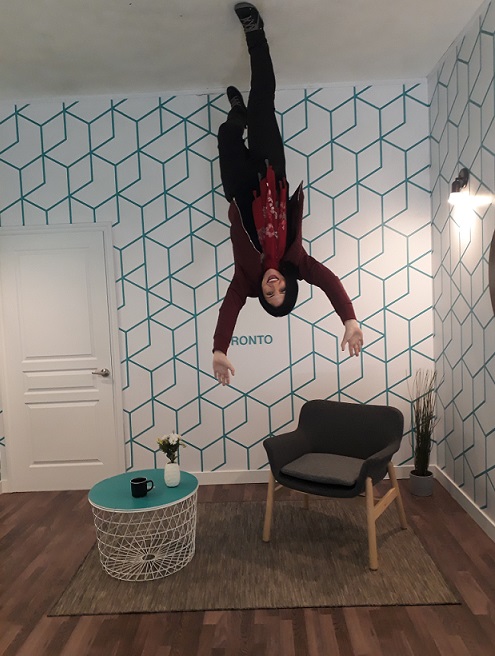
São mais de 80 ilusões compondo o acervo do Museum of Illusions, que foi inaugurado no final de 2018 com uma proposta de arte interativa, mesclando diversão e aprendizado num só lugar através de ilusões de ótica, espelhos, e muita criatividade. Logo que chegamos já somos convidados a testar nossa perspectiva e aumentar ou diminuir de tamanho na instalação Ames Room (ou Quarto Ames) ou nossa capacidade de nos manter em pé e andar em linha reta no Anti-gravity Room (ou Quarto Anti-gravidade), ficando difícil provar que não ingerimos bebida alcóolica antes de entrar no museu.
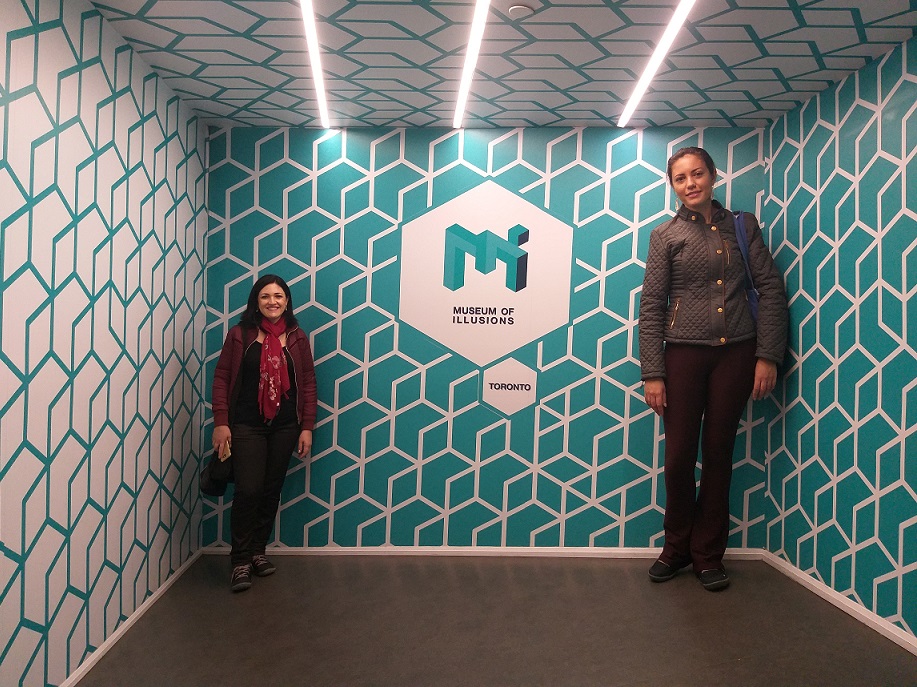
As irmãs no… 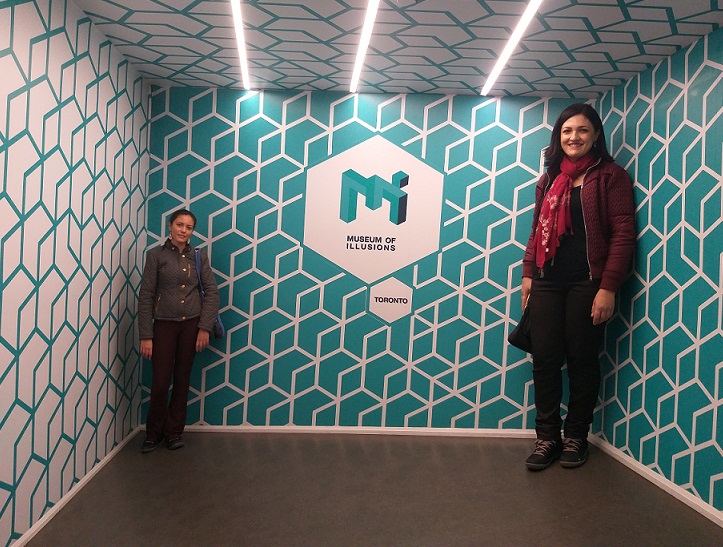
Quarto Ames
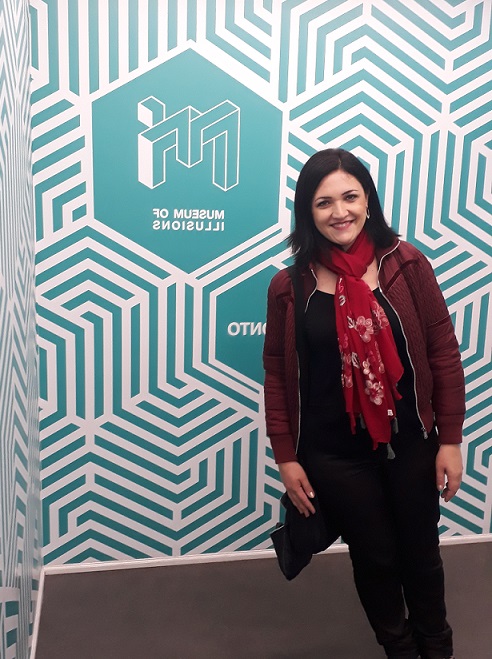
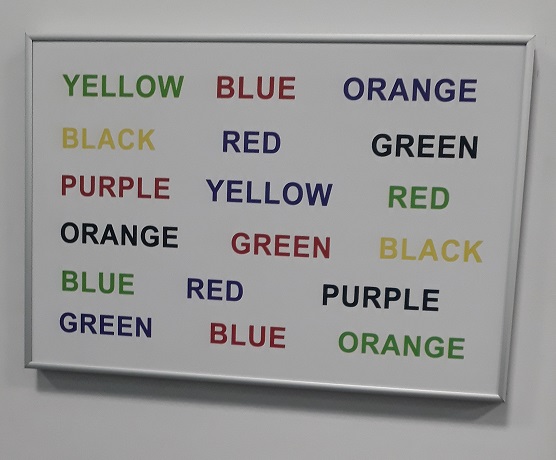
Para nosso passeio pelo museu ficar mais divertido, te proponho o Desafio das Cores. Está vendo esse quadro ao lado? Tente fazer o teste de dizer o nome da cor que a palavra foi escrita e não a palavra em si, por exemplo, a primeira palavra está escrita “yellow”, que é amarelo em inglês, mas nesse desafio você não deve dizer “yellow” e sim “green” ou verde que é a cor que a palavra foi escrita. Eu sei que numa hora vai confundir seu cérebro e você vai se pegar lendo o que está escrito, mas relaxa que esse é o desafio e divirta-se…
Uma instalação que é bem famosa nesse museu é a Head on the Platter (ou Cabeça na Bandeja), onde curiosamente seu corpo desaparece e fica só sua cabeça para ser entregue na bandeja para o seu inimigo. Ou você pode inverter o jogo e ter a cabeça do seu desafeto na bandeja pra você. Não vou te contar o truque senão perde a graça, mas é muito divertido e vai te render muitas curtidas nas redes sociais.
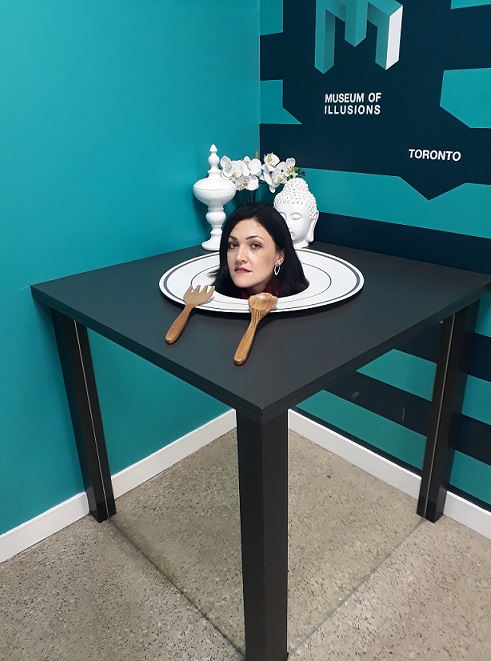
Também fazem sucesso o “Turntables” ou “Gira-Discos”¸ que provocam uma ilusão quase hipnótica e os quadros de “Optical Illusions” ou “Ilusões de Ótica”¸ que parecem estar se movendo quando paramos para observá-los. Foca seu olhar nesse quadro e depois me conta qual a sensação.
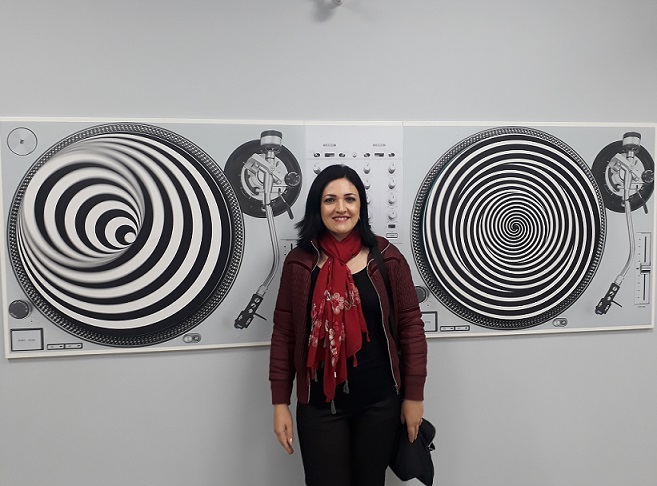

Às vezes você tem vontade de jogar poker, mas não tem companhia? Se sente só no mundo? Ou então já desejou ter um clone para dividir as tarefas? Seja qual o for o motivo, o Museu das Ilusões tem a solução: a “Clone Table” ou “Mesa dos Clones”, na qual você se senta e tem mais cinco de você para jogar uma partida de baralho, bater papo, se observar melhor, enfim, vocês estão agora em cinco para decidir o que fazer.
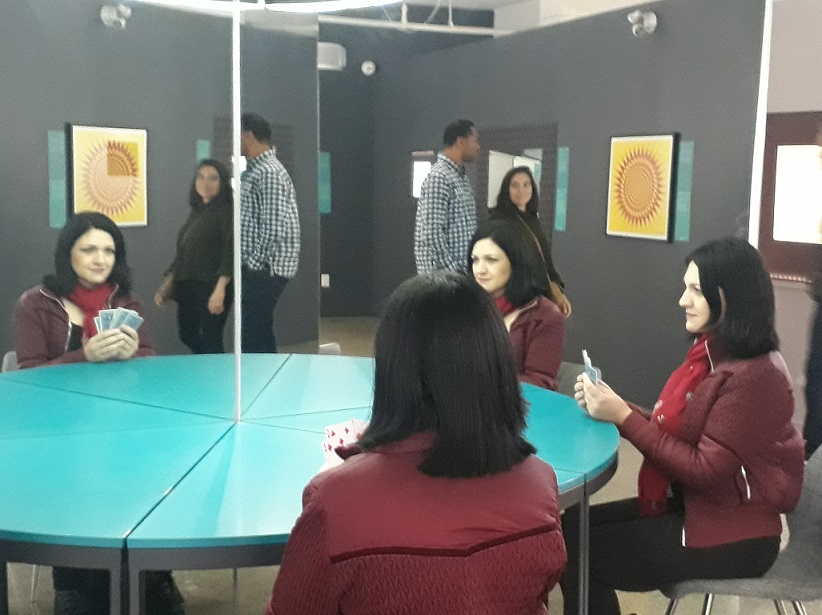
Como já mencionei anteriormente são várias instalações para você se divertir aqui no museu, mas como ainda quero te apresentar outros museus, vamos encerrar nossa visita no Museum of Illusions numa das instalações que mais gostei: “The Vortex Tunnel” ou “O Túnel Vórtice”, no qual você vai sentindo tudo girando ao seu redor enquanto tenta caminhar firme e forte pela passarela (será possível caminhar assim????). Para ter uma ideia de como é essa sensação é só dar uma olhadinha nesse vídeo que postei no nosso canal do Youtube: https://youtu.be/8Ckl53Ub8Vo . Assista lá e depois me conta o que sentiu…

O Museu das Ilusões fica no nº 132 da Front Street East e os ingressos para adultos custam CAD$ 23,50 (mas tem desconto para combo familiar e para crianças). Para saber mais informações sobre o museu é só conferir no site: https://museumofillusions.ca/
5 – Spadina Museum
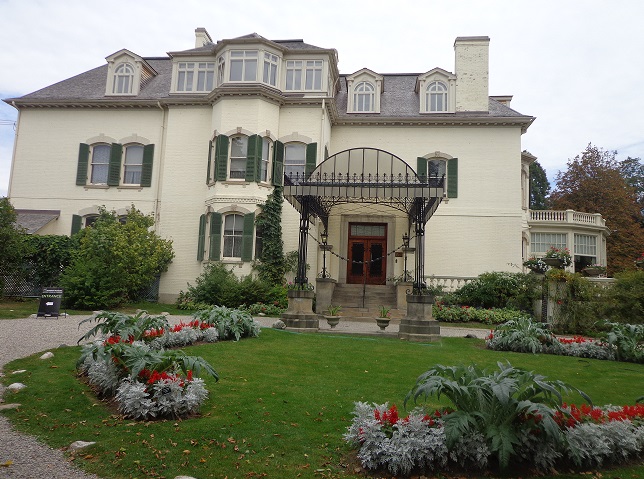
Depois de tantas brincadeiras que fizemos com nosso cérebro no Museu das Ilusões, chegou a hora de levá-lo para uma viagem no tempo, isso mesmo, vamos nos transportar para o início do século 20, mais precisamente na década entre 1920 e 1930, conhecendo o Spadina Museum ou Spadina House (Museu ou Casa Spadina), que é um belo Casarão que foi propriedade da Família Austin entre 1866 até início da década de 1980 e retrata o estilo de vida dos endinheirados da época.
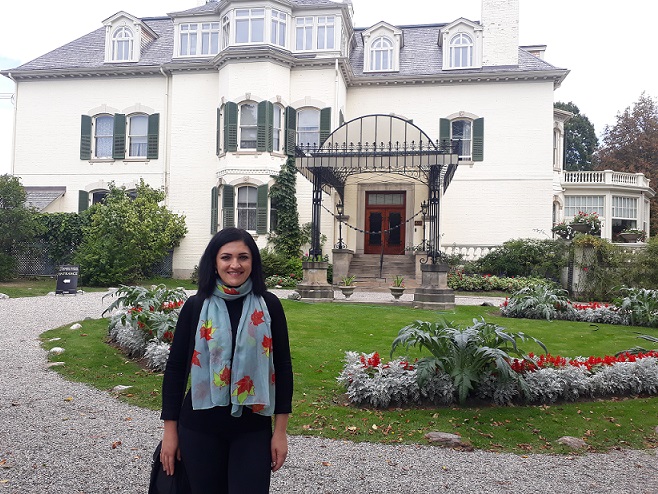
Vale lembrar que o nome Spadina, foi dado pelo primeiro proprietário dessas terras (Sr. Baldwin que depois vendeu para o Sr. James Austin) e deriva de Espadinong que significa “colina”, bem apropriado para o local onde a casa se encontra, tanto que um dos acessos ao museu se dá pelo Escadão “Baldwin Steps” que nos proporciona essa linda vista de Toronto.

No Escadão 
Baldwin Steps
As visitas ao Spadina Museum são guiadas e começam com um vídeo explicando um pouco da história da casa e de Toronto na década de 20. Depois seguimos para conhecer a casa em si, que tem uma decoração realmente muito bonita, mesclando os estilos Vitoriano, Art Deco, Art Nouveau, Eduardino e Colonial. Além dos móveis, os papéis de parede também chamam a atenção.
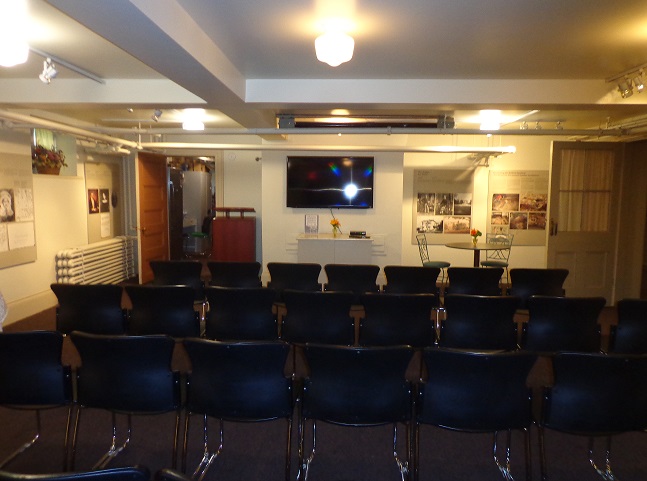
Sala de Vídeo 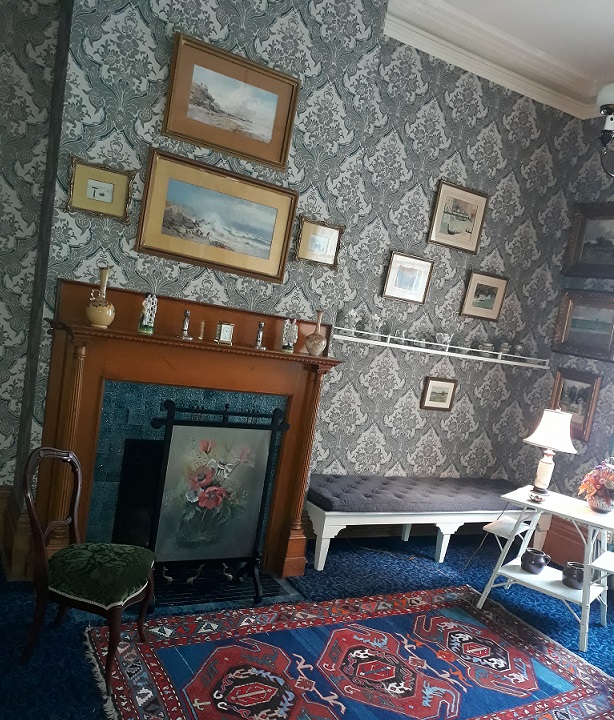
Detalhe do Papel de Parede
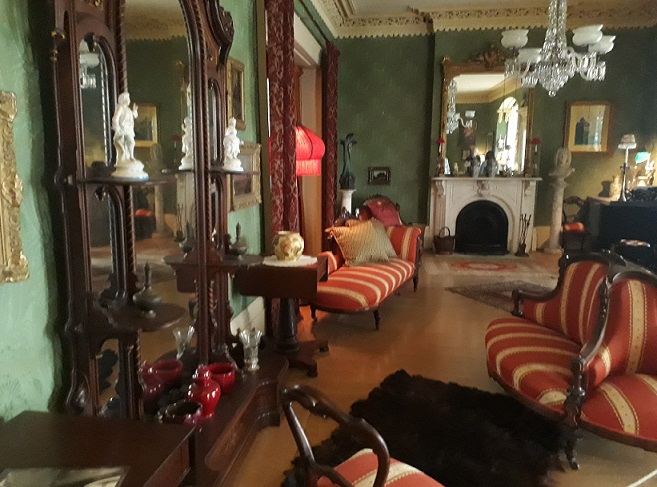
O Spadina Museum foi inaugurado em 1984 (depois de a casa ter sido doada por Anna Kathleen Thompson, a neta do Sr, James Austin, para a cidade de Toronto), mas precisou ser restaurada por um longo período, só reabrindo ao público em 2010. Mas valeu a pena a espera, porque eles foram bem fiéis à estrutura original, nos permitindo saber como era o salão de jogos, o jardim interno e a sala de jantar naquela época.
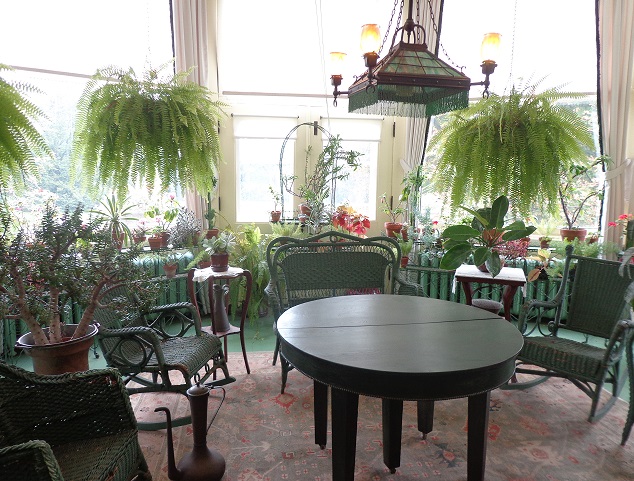
Jardim Interno 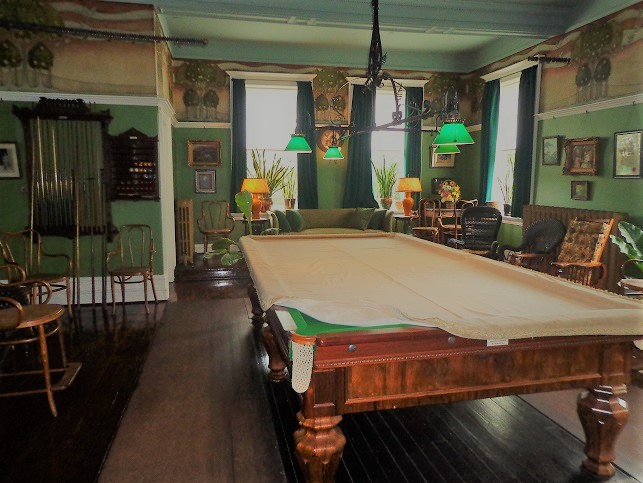
Salão de Jogos

Também chama a atenção na visita os detalhes da decoração dos quartos, da biblioteca e da cozinha, por exemplo, que tinha no armário as embalagens da época. Nota-se muito capricho e cuidado por parte dos restauradores.

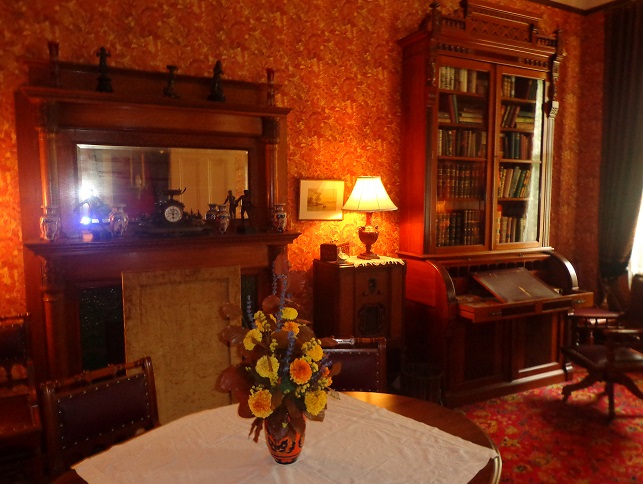
A Biblioteca 
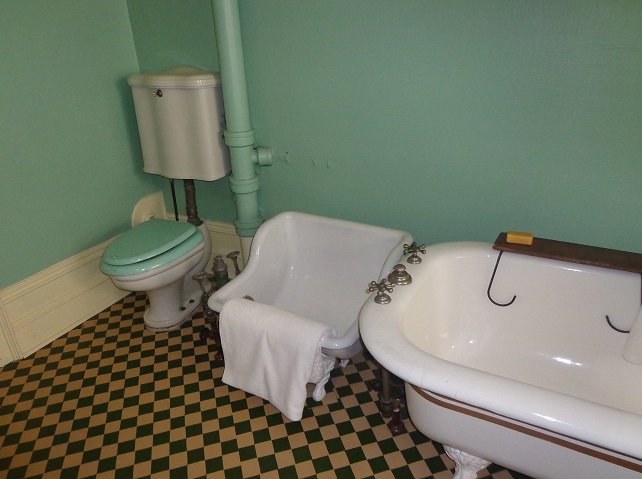
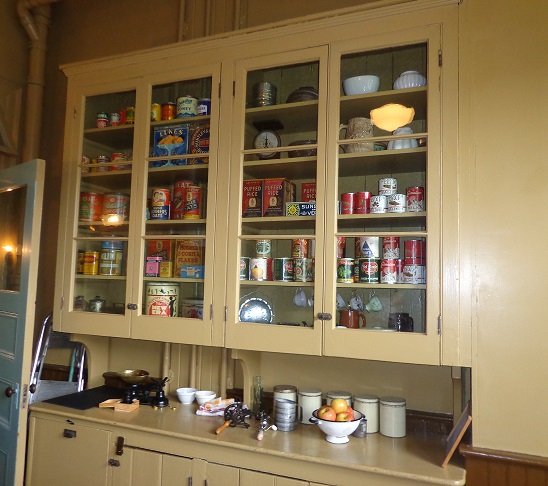
Detalhe do Armário 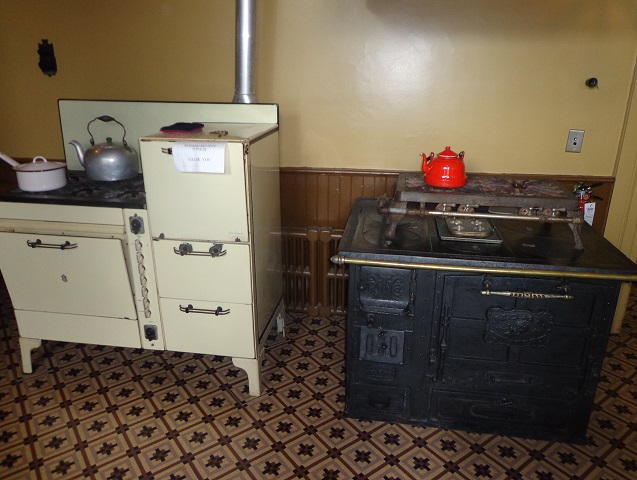
E Cozinha
No Spadina Museum também podemos ver como era a tecnologia na época, pois a casa foi uma das primeiras a ter telefone, iluminação a gás e eletricidade, mas antes dessa chegar, achei bem interessante a forma como eles conservavam os alimentos numa espécie de geladeira, colocando os alimentos na parte de baixo e barras de gelo na parte superior, e à medida que essas iam derretendo, eles as substituíam…
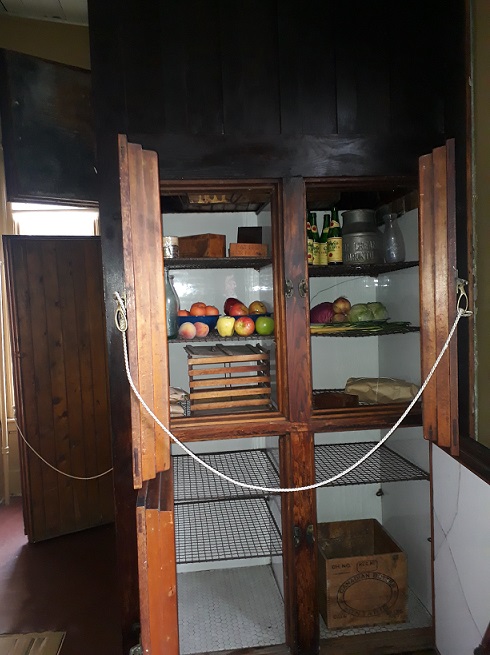
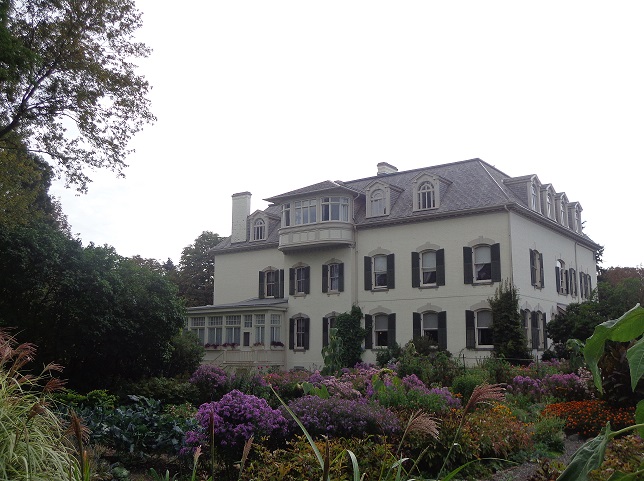
Para finalizar nossa visita ao Spadina Museum, fomos passear pelo lindo Jardim, que assim como a casa também apresenta os estilos Vitoriano e Eduardino e sedia vários eventos como festas de Halloween, Natal, Casamentos, entre outros. Tenho certeza que esse lugar vai te proporcionar fotos maravilhosas…
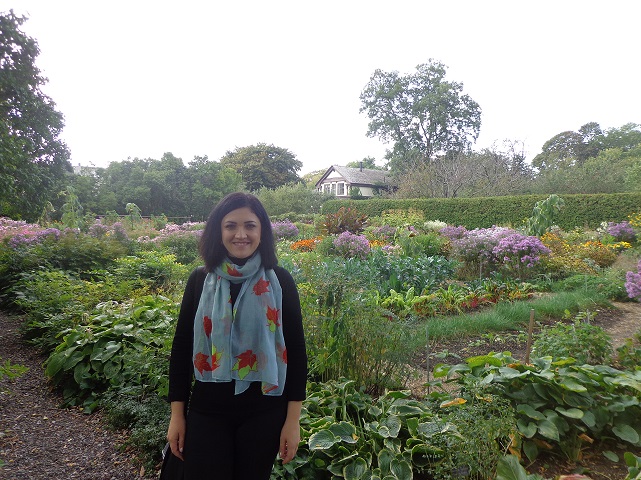
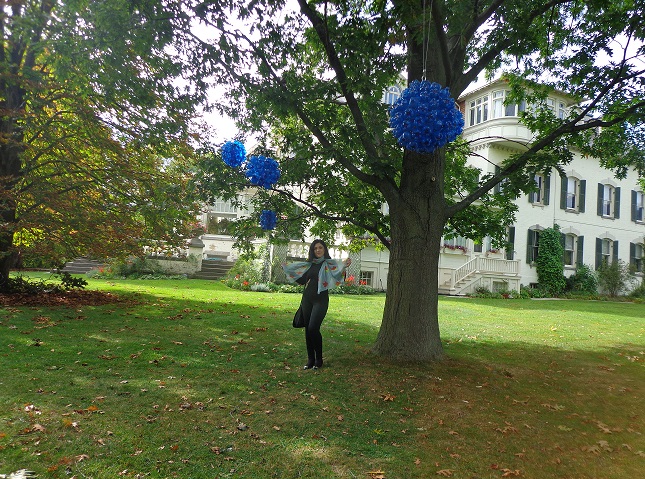
No área do Jardim do Spadina Museum¸ também encontramos uma estufa e as residências dos funcionários que trabalhavam na Spadina House, como a Casa do Motorista e do Jardineiro.

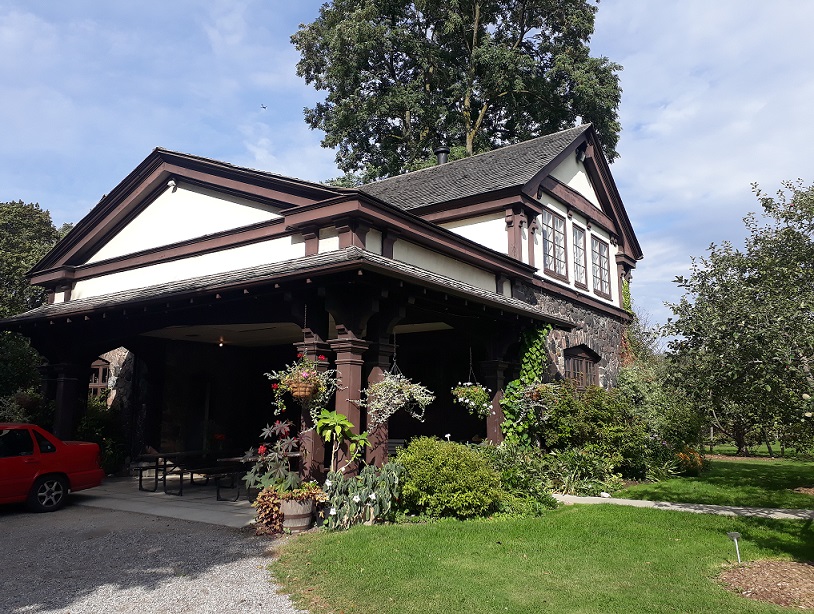
Casa do Motorista 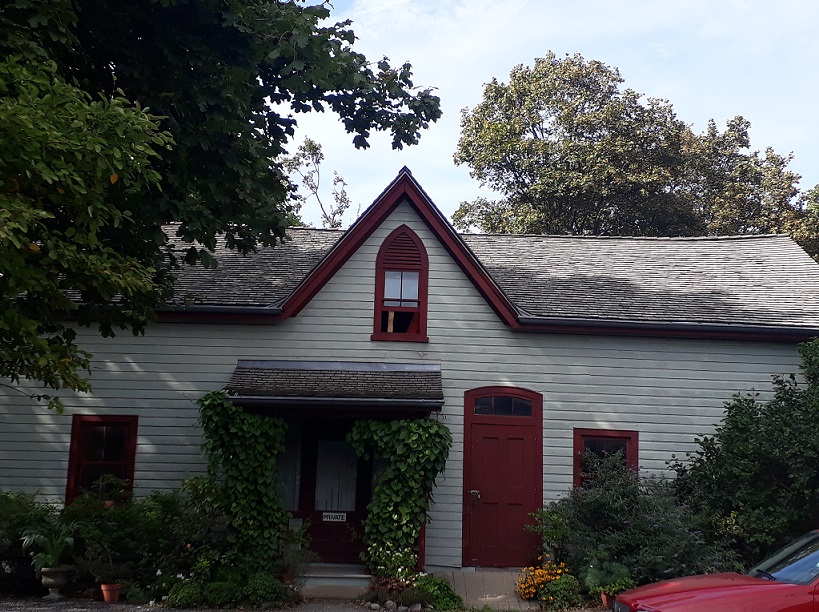
e do Jardineiro
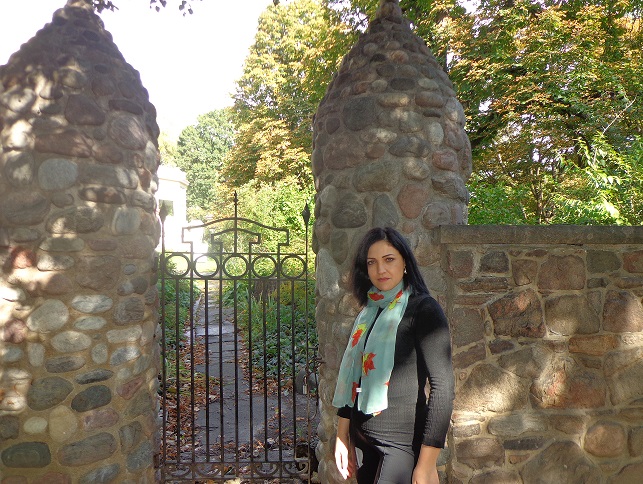
O Spadina Museu fica no nº 285 da Spadina Road e a estação de metrô mais próxima é a Dupont. Os ingressos adultos custam CAD$10 (mas tem desconto para idosos, adolescentes e crianças) e também se comprar o combo para visitá-lo junto com a Casa Loma. Para saber mais informações é só dar uma olhadinha no site: https://www.toronto.ca/explore-enjoy/history-art-culture/museums/spadina-museum/
6– Art Gallery of Ontario (AGO)
Se você gosta de arte, principalmente das artes plásticas, vai se apaixonar pela Art Gallery of Ontario, mais conhecida por AGO (em português: Galeria de Arte de Ontario), que é um dos maiores museus da América do Norte, com um acervo de quase 95.000 peças.
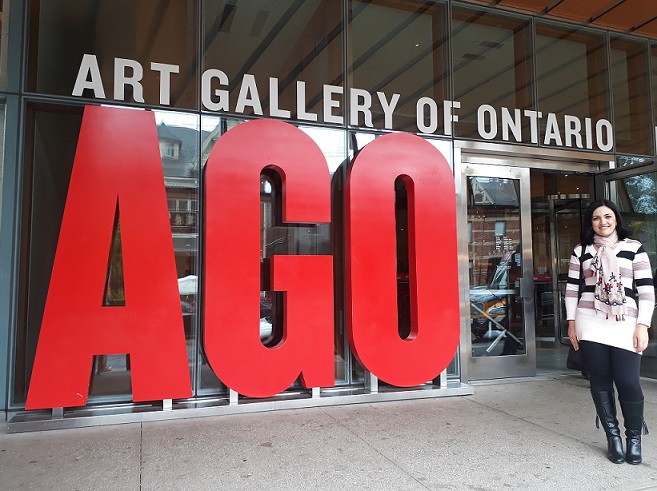
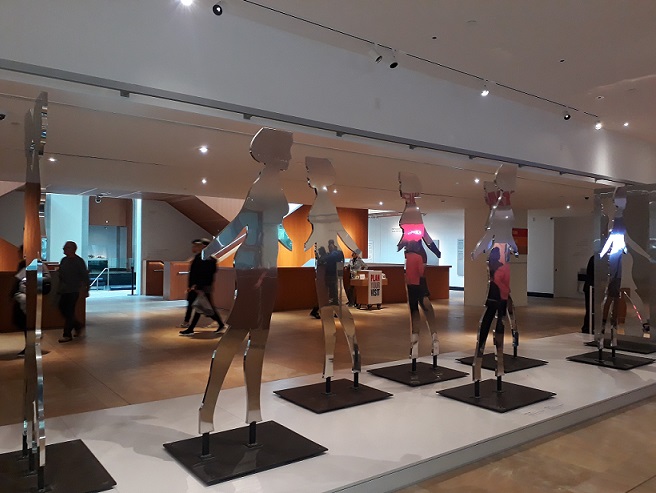
A Art Gallery of Ontario (AGO) foi fundada em 1900 por iniciativa de um grupo de cidadãos e era chamada inicialmente de Art Museum of Toronto (Museu de Arte de Toronto). Com o passar do tempo foi aumentando seu acervo e hoje tem peças desde o ano 100 a.C até obras da atualidade, passando pela arte indígena, africana, europeia, moderna, contemporânea, fotografias, coleções canadenses entre muitas outras distribuídas pelos cinco andares de visitação da Galeria.
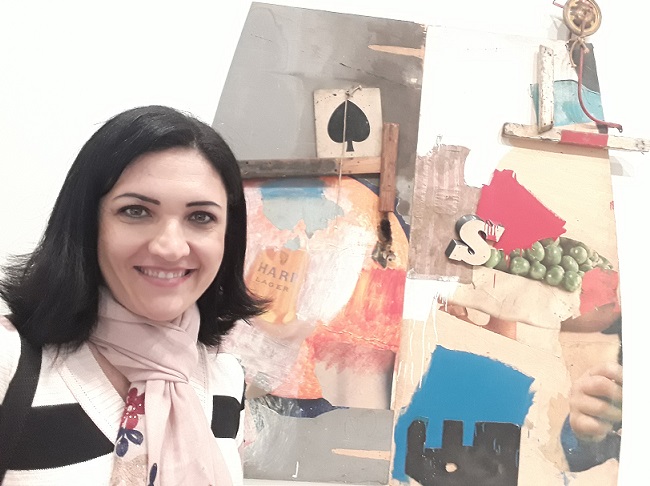
Uma dica bem bacana pra você aproveitar ainda mais seu passeio à AGO, é fazer uma visita guiada, que dura entre 45 e 60 minutos e acontece diariamente nos horários das 11h, 12h, 13h, 14h e 15h (e às quartas e sextas às 19h também). Nós começamos nosso tour com essa visita e depois fomos apreciar as obras que mais gostamos. Falando em obras favoritas, uma das que mais nos chamou a atenção foi essa Coleção de Cenas Bíblicas esculpidas com riqueza de detalhes e muitas vezes em miniaturas.
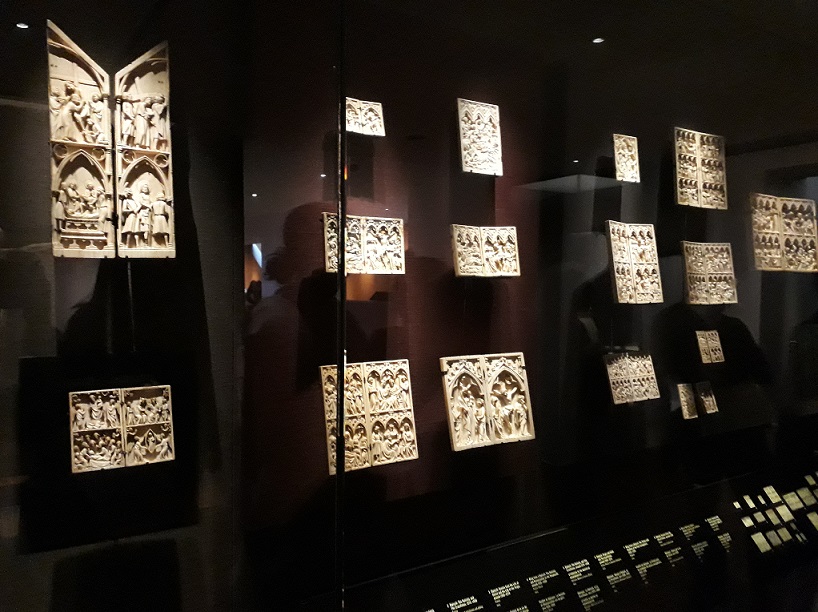
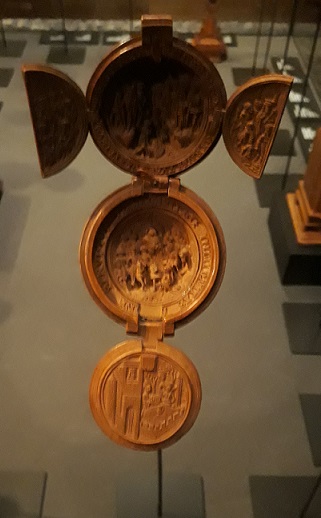
Outra parte bem legal da AGO é a dedicada à Arte Canadense, onde encontramos desde obras de cores fortes e vibrantes como “Man Changing into Thunderbird” (ou “Homem se Transformando em Ave do Trovão”) de Norval Morriseau, até os lagos e montanhas de tons azulados como “South Shore, Bylot Island” (ou “Costa Sul, Ilha de Bylot”) e “Lake Superior” (ou “Lago Superior”) de Lawren S. Harris.

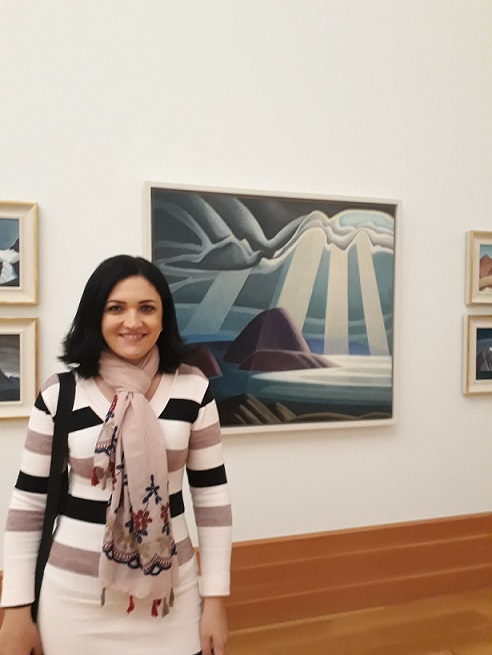
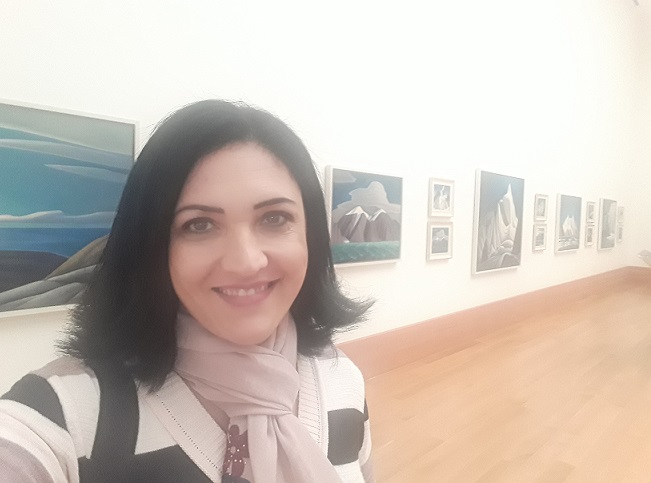
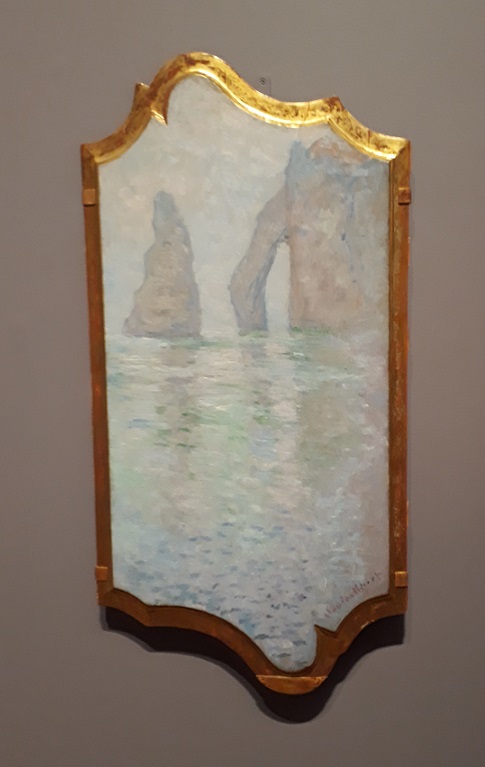
A AGO também conta com um acervo riquíssimo de arte europeia, onde encontramos obras de Pablo Picasso, Paul Cézanne, Claude Monet (quadro ao lado), Auguste Rodin, Vincent van Gogh, Edgar Degas, entre outros.
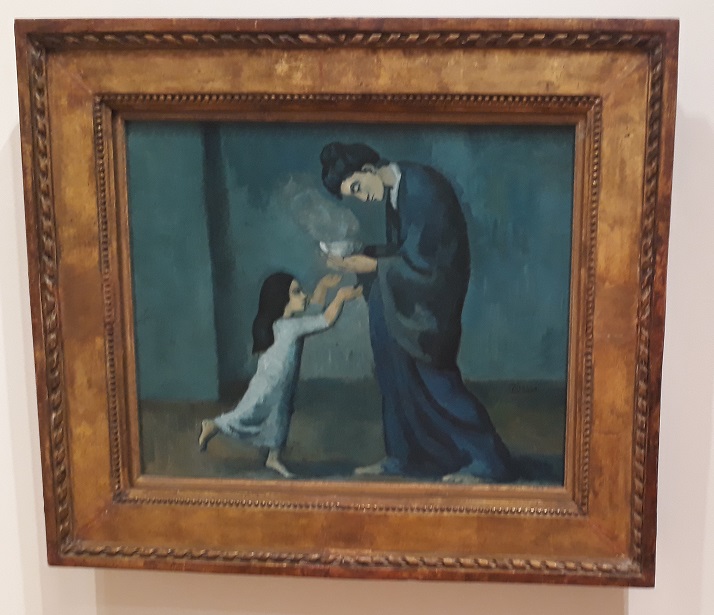


Além das incríveis obras de arte, a AGO também merece destaque pela sua belíssima arquitetura, sendo considerada um dos prédios mais lindos de Toronto!!! Vale lembrar que essas colunas foram “adotadas” por empresas quando da restauração (para serem construídas em madeira e manterem o mesmo padrão), uma boa forma de contribuir com a arte!!!
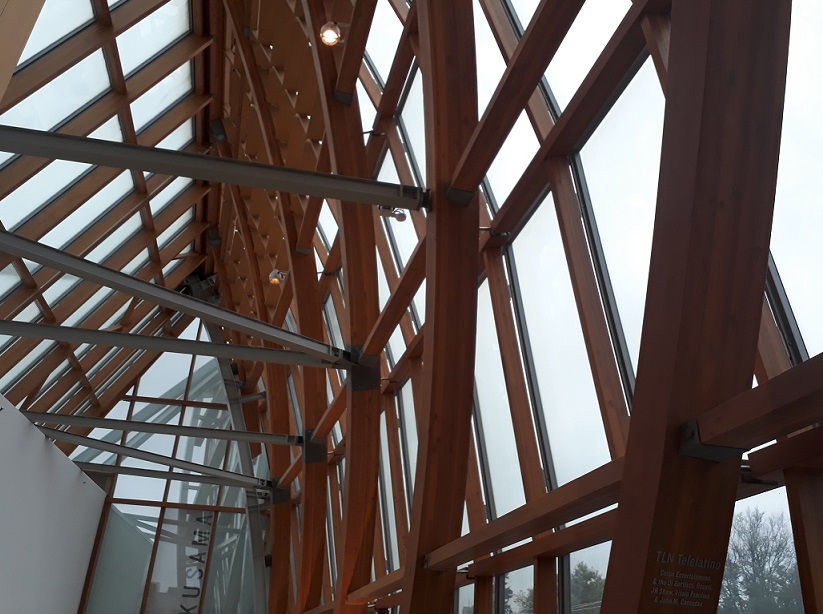
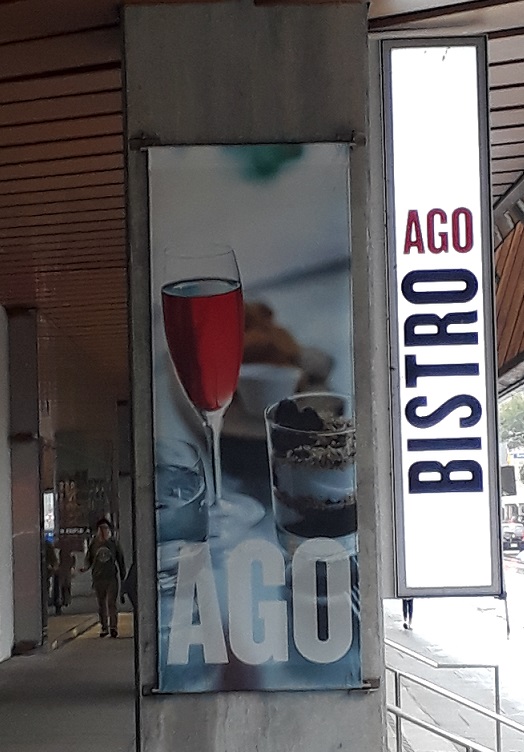
E para fechar com chave de ouro essa visita, nada melhor que uma pausa para um drink no AGO Bistro, que fica no térreo da Galeria!!!
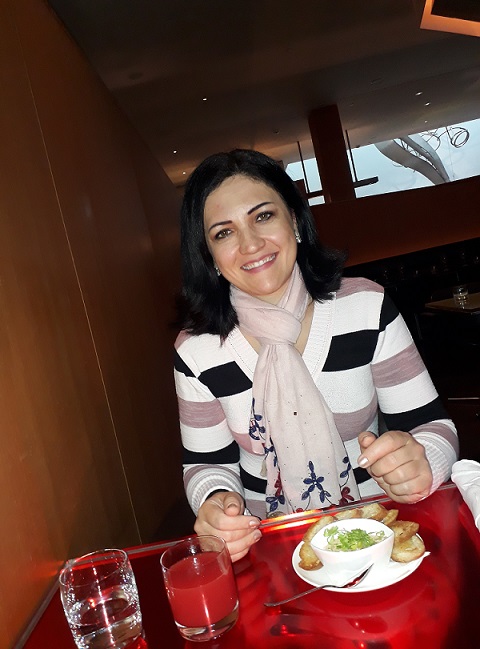
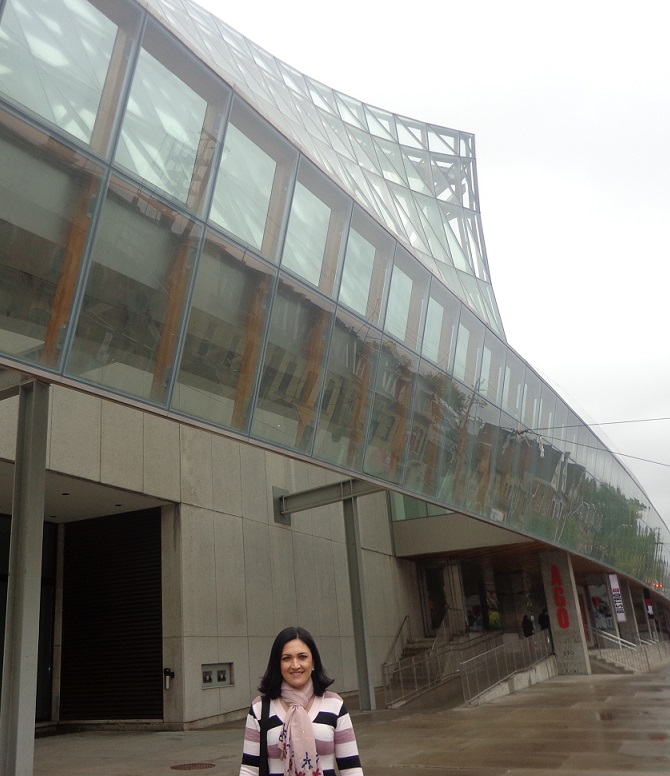
A AGO fica no nº 317 da Dundas Street West e os ingressos adultos custam CAD$ 25 (mas tem o passe anual que custa CAD$ 35 e permite visitas ilimitadas o ano todo, tem gratuidade para menores de 25 anos e para membros da AGO e também entrada gratuita às quartas-feiras das 18h às 21h). Para saber mais detalhes é só conferir o site: https://ago.ca/
7 – Casa Loma / ROM
Ao falar dos Museus de Toronto, com certeza esses dois não poderiam ficar de fora: a Casa Loma¸ que é um lindo Castelo que se tornou museu e nos faz voltar no tempo logo que cruzamos seus portões. E o ROM (“Royal Ontario Museum” ou “Museu Real de Ontário)¸ que é o museu mais famoso de Toronto e conta com um acervo de mais de 13 milhões de peças, incluindo desde fósseis de Dinossauros até obras de arte de vários períodos da História. Para ver as fotos e conhecer mais sobre esses dois museus é só clicar no link e ir para a nossa postagem do TOP 10 de Toronto: https://cadaviagemumabagagem.com/top-10-de-toronto/.

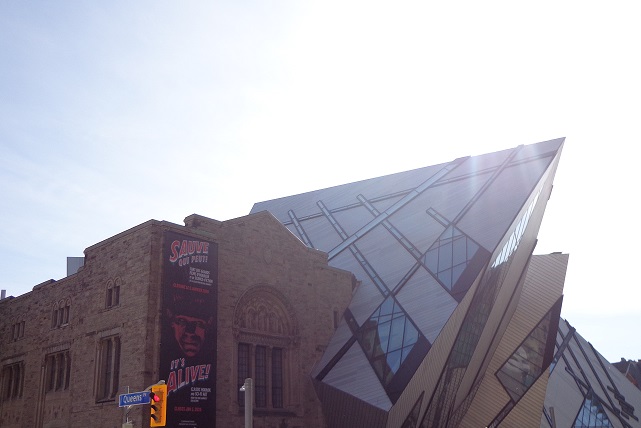
Bônus: Ottawa
Estamos chegando ao final dessa nossa visita aos principais Museus de Toronto… Espero que tenha gostado!!! Agradeço de coração sua companhia e já vou adiantando qual será o nosso próximo destino no Canadá: conhecer os principais pontos turísticos de Ottawa (a capital do país), com direito a andar de veículo anfíbio e muitas outras atividades (https://cadaviagemumabagagem.com/os-15-mais-de-ottawa/) . Mas antes disso, já que estamos falando de museus, vou te levar para conhecer comigo exposições incríveis que estão acontecendo em São Paulo. Te espero nas próximas postagens ?

One Month at the Toronto Museums
Have you ever imagined knowing the history of Humanity told through your shoes, playing poker with several of you, entering a locker room for a hockey team or diving into the universe of science among many other adventures? All this and much more you can experience now, following what I spent in One Month at the Museums of Toronto.
In this post I will show you the main and most exotic museums in Toronto, Canada. Shall we start our tour?

1 – Bata Shoe Museum
If you like shoes and history, you will surely be enchanted by the Bata Shoe Museum, a museum opened in 1995 and totally dedicated to shoes. The founder of this museum was Sonja Bata, who was passionate about shoes and researching how they reflect the customs and styles of a society.

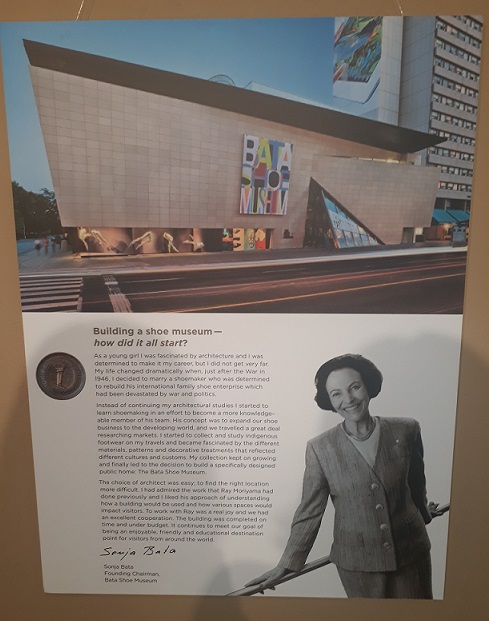
The Bata Shoe Museum has more than 1.000 pieces on display, including shoes and other accessories, but the total collection reaches 13.000 objects that tell more than 4500 years of history. Speaking of history, let’s start our visit underground, where is the exhibition “All About Shoes” that shows us how shoes were from Prehistory, passing through Ancient Egypt, Rome, Greece, India, China among other civilizations.
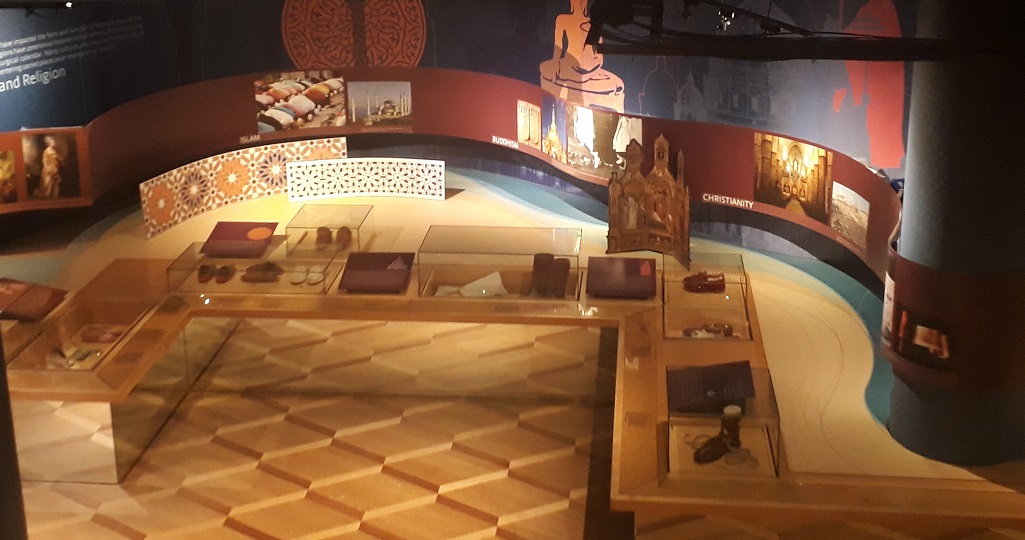
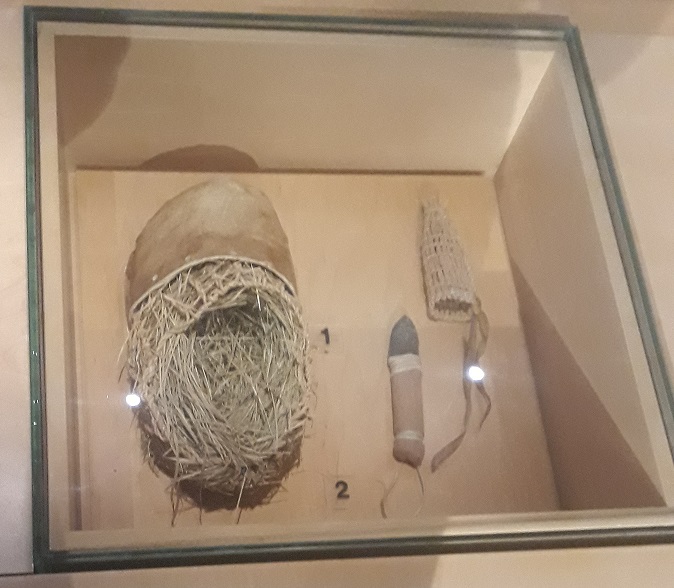
Prehistory 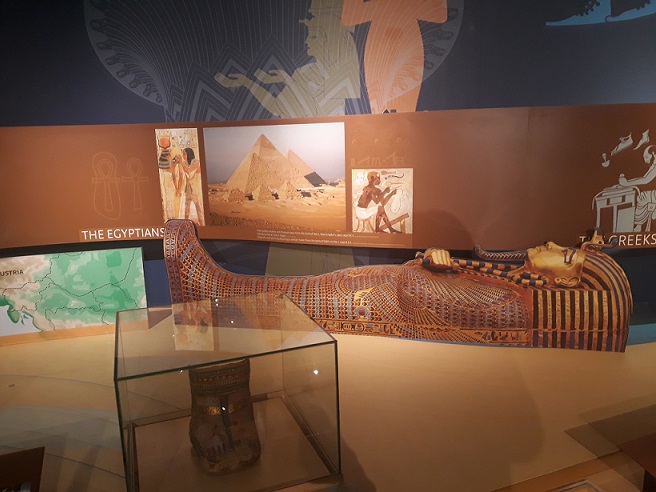
Ancient Egypt

Greeks 
and Romans
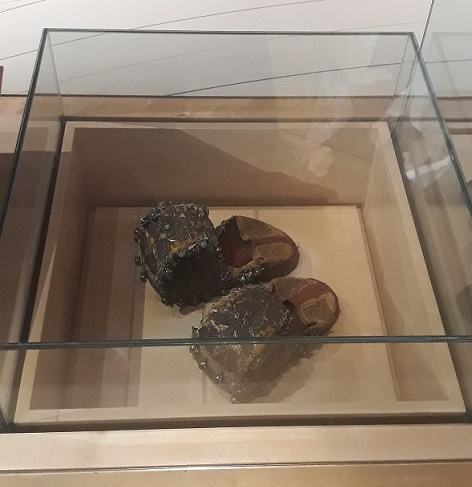
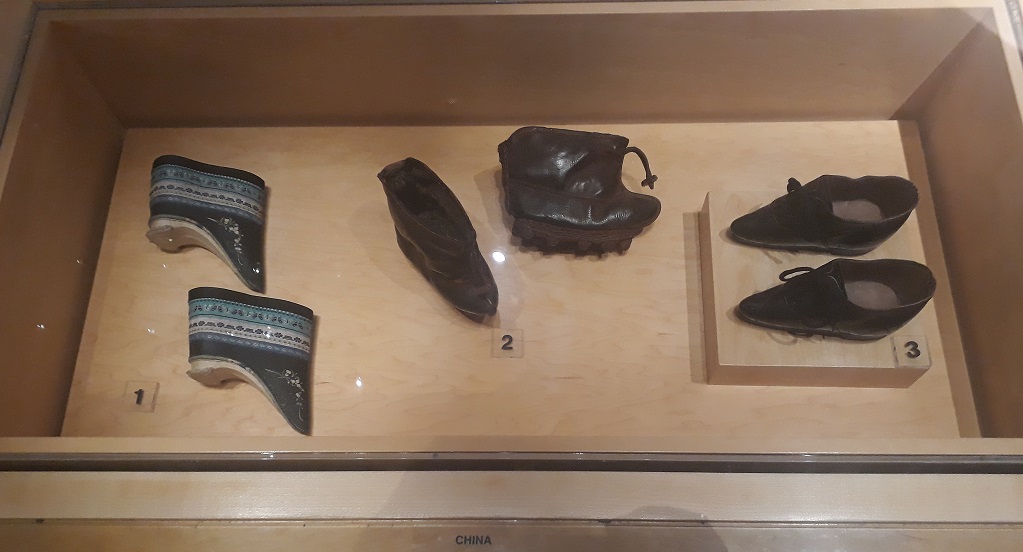
It is also on this floor that we find Renaissance shoes and those that were successful in the 1920s to 1990s.

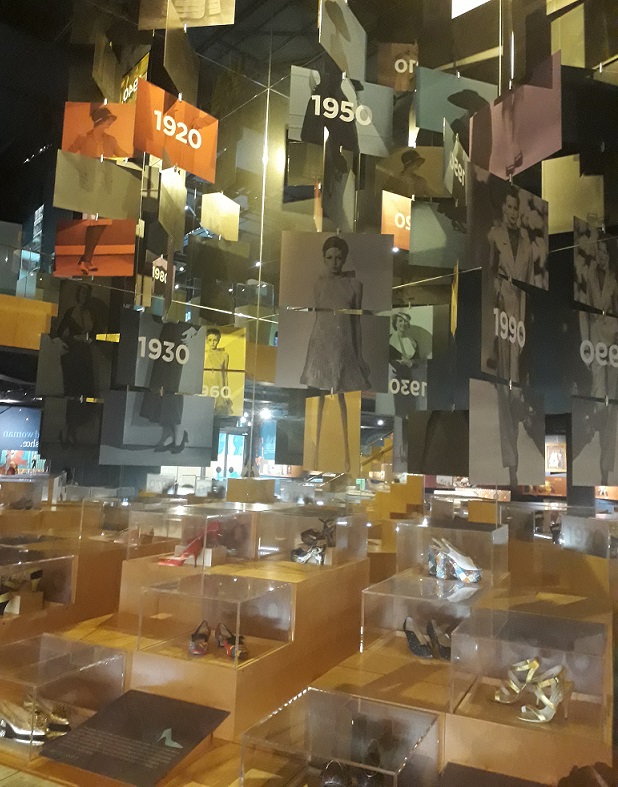
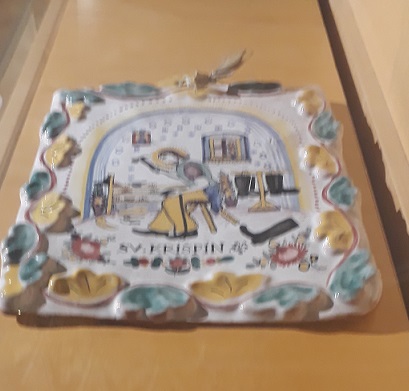
The exhibition continues on the stairs, where we find crystal and porcelain shoes, as well as beautiful ceramics worked in honor of Saint Crispim, protector of shoemakers!

The “All About Shoes” Exhibition continues on the ground floor, where we find, among several shoes, the Elton John Boots and also a “Qabâqib” from Syria, a very tall type of footwear, ornamented with silver and mother-of-pearl used for the “Hammans”, a type of Turkish bath.
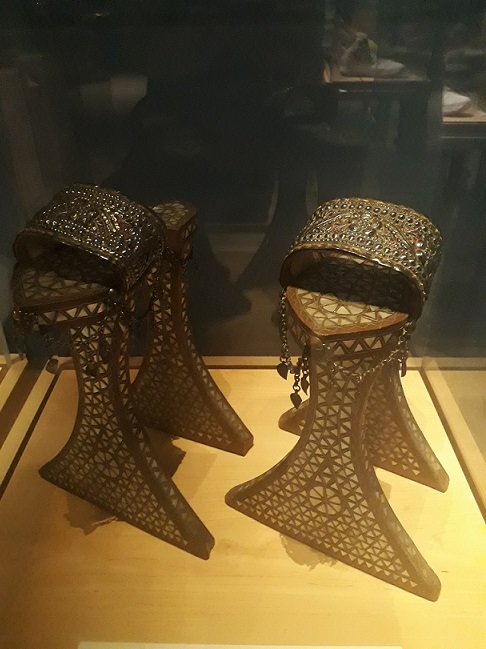
Qabâqib 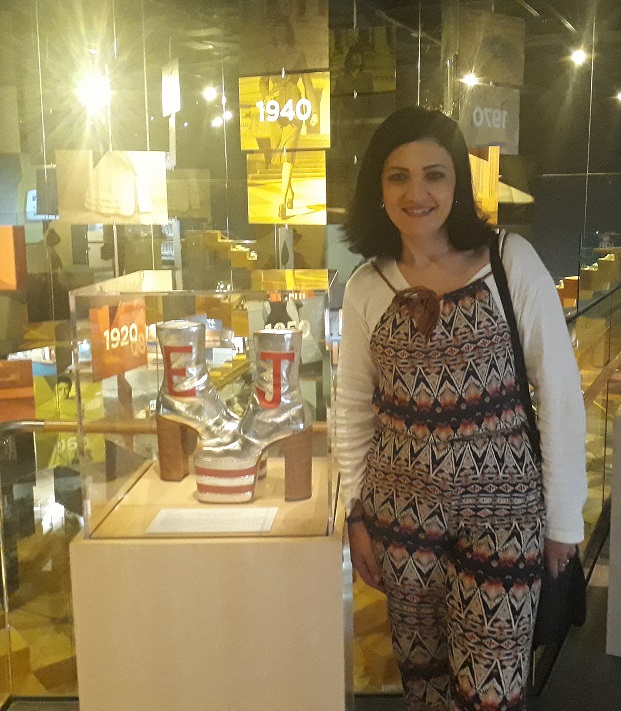
Elton John Boots
We now proceed to the second floor, where the exhibition “Art and Innovation” is located, which presents us, in addition to shoes, garments from residents of the polar regions.
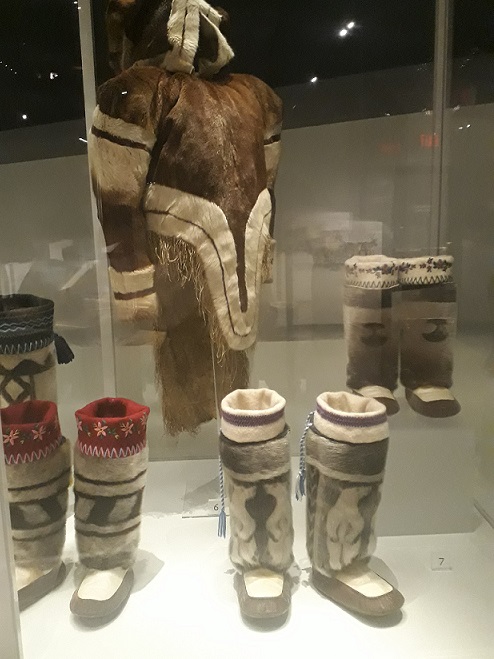
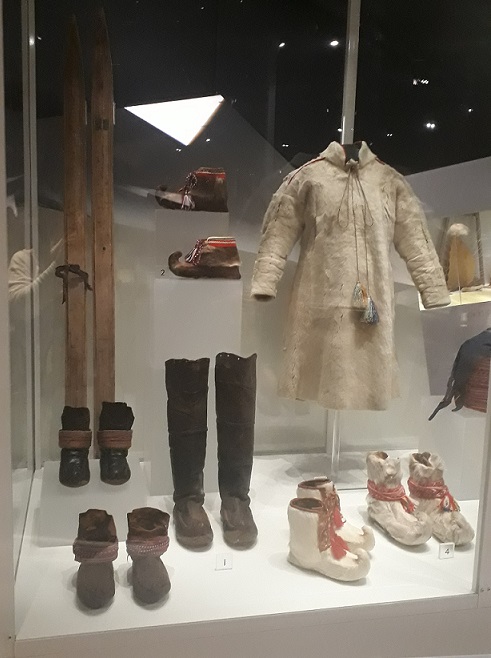
Also on the second floor, we find the exhibition “The Golden Standard”, where are the shoes with golden details that were more successful around the world, such as the Golden Sneakers with Wings from the Adidas commercial, which makes reference to the Messenger God Hermes of Greek Mythology, the Italian shoe inspired by the Renaissance of Giuseppe Zanotti, as well as boots, African and Asian shoes, among many others.
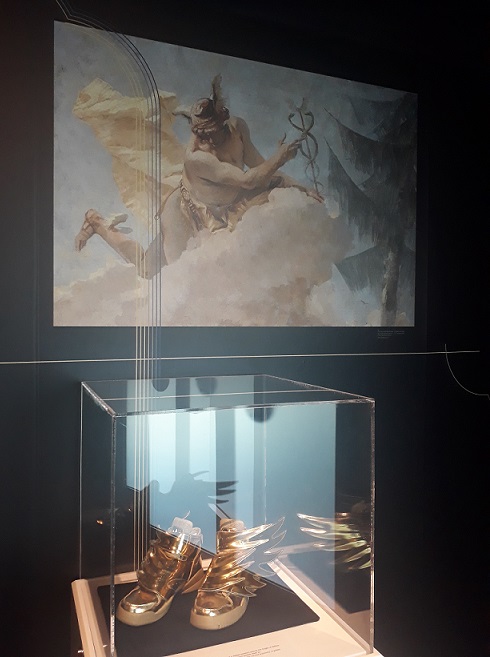
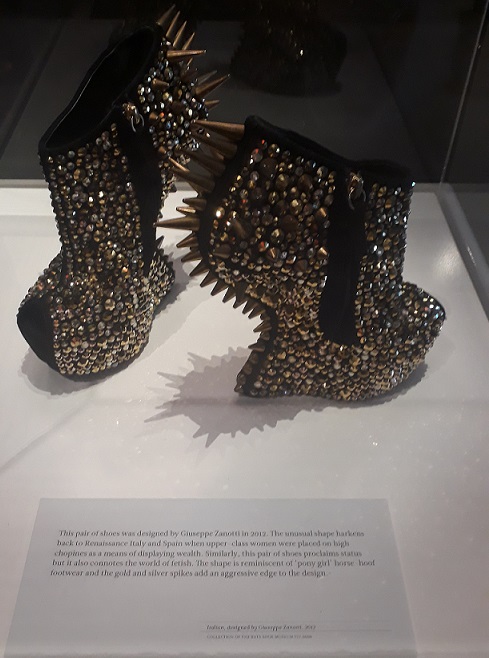
Italian Shoes 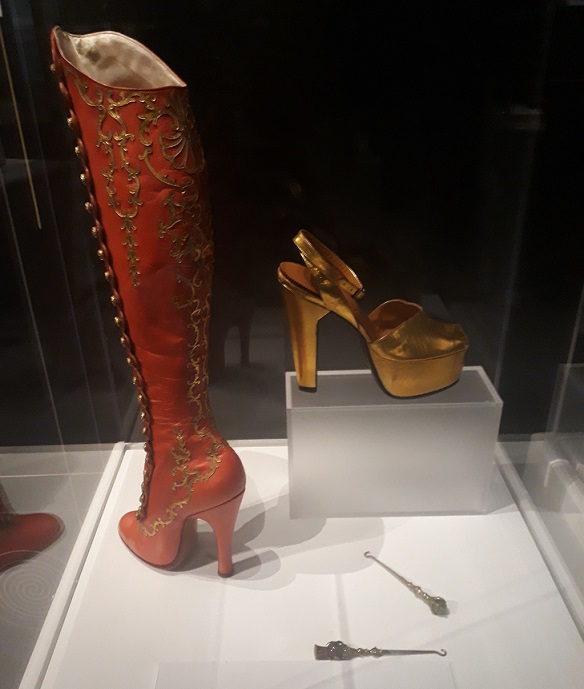
Red Boots

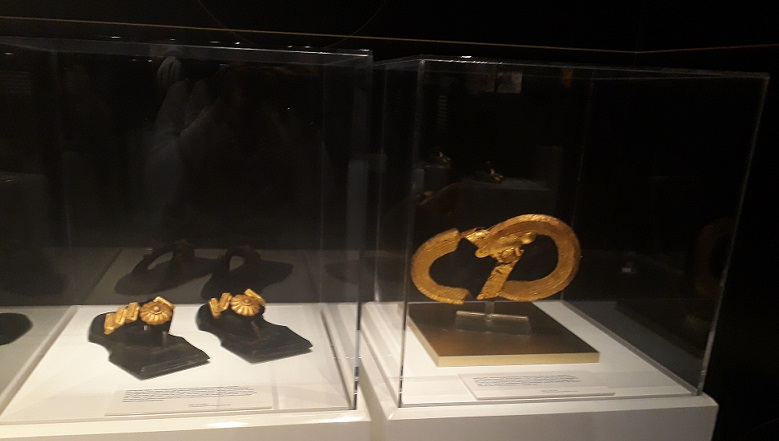

And to end our visit, we will visit the exhibition “Want”, which shows us the shoes of the “Depression Era”, where the desires born at that time, with the lack of jobs and security, developed creativity and design in various artistic forms, including in the world of fashion and footwear, where we have as an example the golden shoe: “All That Glitters”, in addition to the classic platforms, with a different style and an idea of what the shoes of the future will look like.
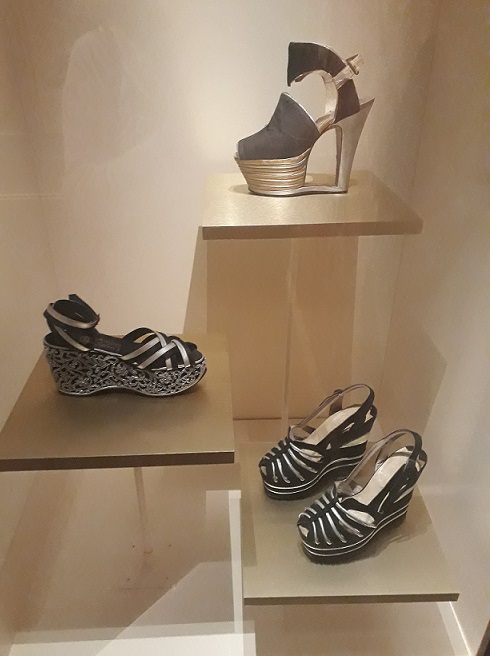
Platforms 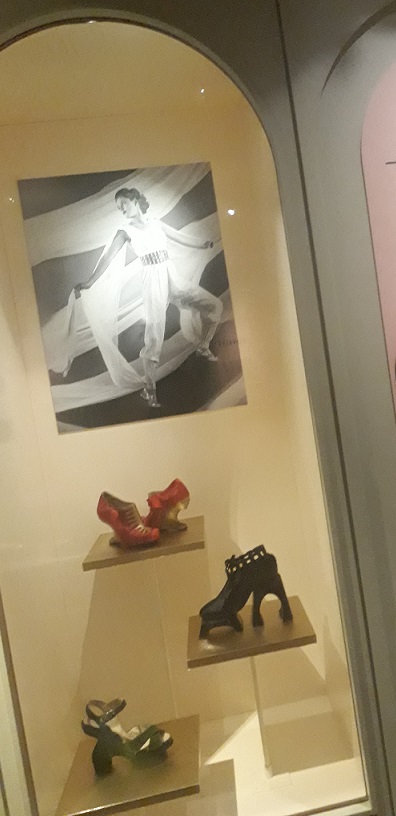
The Shoes of the Future

The Bata Shoe Museum is located at 327 Bloor Street West (on the corner of St. George) and the adult ticket costs CAD $ 14 (but there are discounts for the elderly, children, students and family combo). To find out more information, such as opening hours and days, just check out the website: http://batashoemuseum.ca/
2 – Ontario Science Center
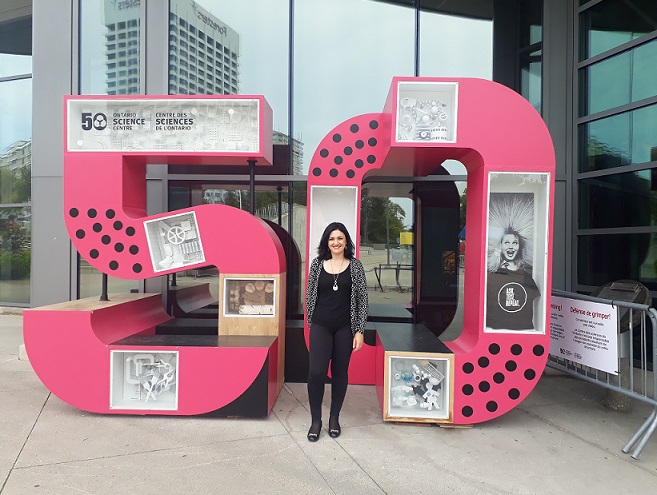
If you like science and are curious to know how things work, you will love to visit the Ontario Science Center, which in 2019 celebrated 50 years of existence, always seeking to promote a dialogue between technology, science and society!!!

To start our visit I will tell you something very interesting about the Ontario Science Center: the museum has six levels/floors, but they will increase as you go down, that’s right, “Level 6” is in the lower basement, because the museum was built in a kind of ravine and they wanted to take advantage of this structure to give the idea of entering the universe of science.

Taking this opportunity, we started at the deepest level, at Level 6, where there is a space dedicated to the human body “The Astrazeneca Human Edge”, where it is possible to learn about various organs and the functioning of our body in a very fun way. My consumer dream is to do this skull posture in yoga classes … lol

Heart 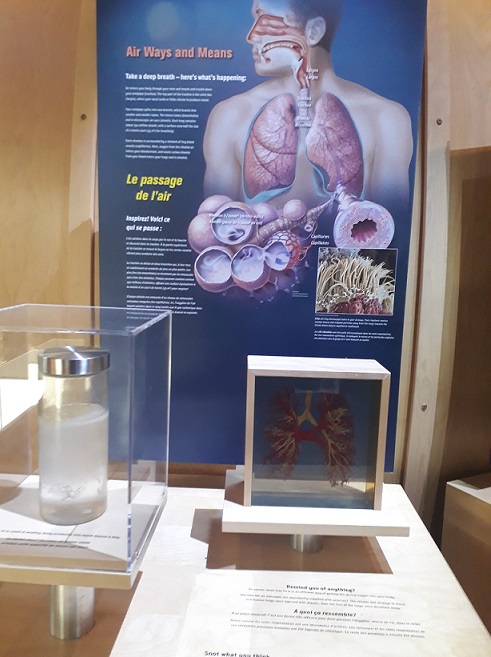
Lung
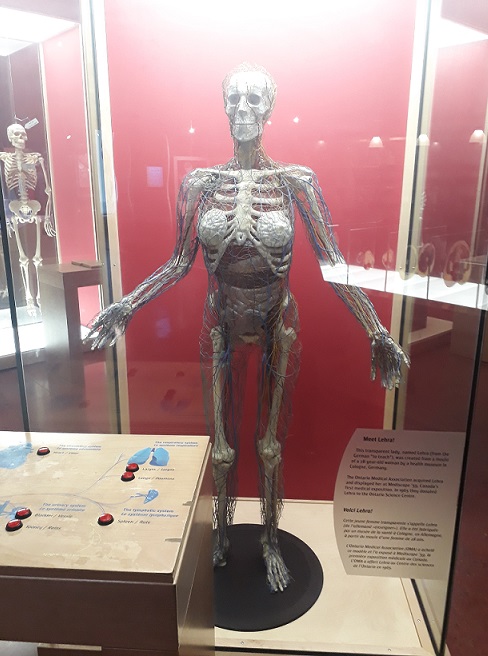
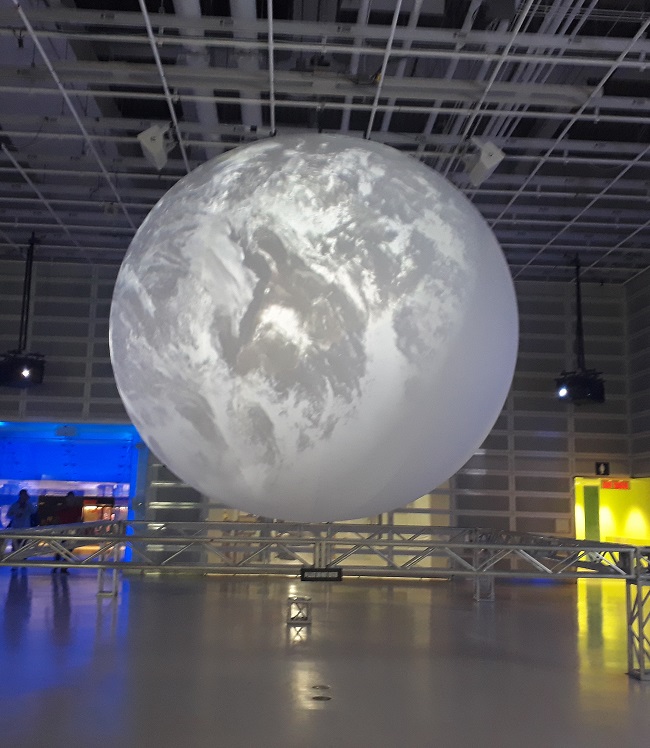
At the center of Level 6 was the temporary installation “Life of the Earth”: a huge earth globe, which received projections about the environment and its degradation by humans.
Another very interesting space of Level 6 is the innovation center: “Weston Family Innovation Center”, where you can experience various experiences such as having wings, testing your drawing skills without seeing, discovering how papermaking is, among many other activities.
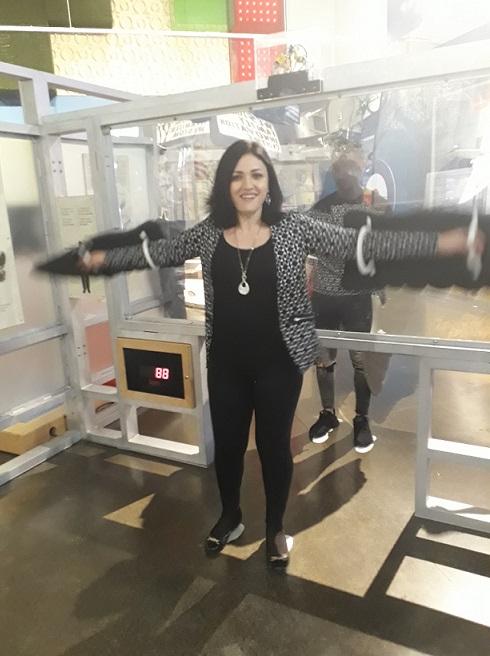


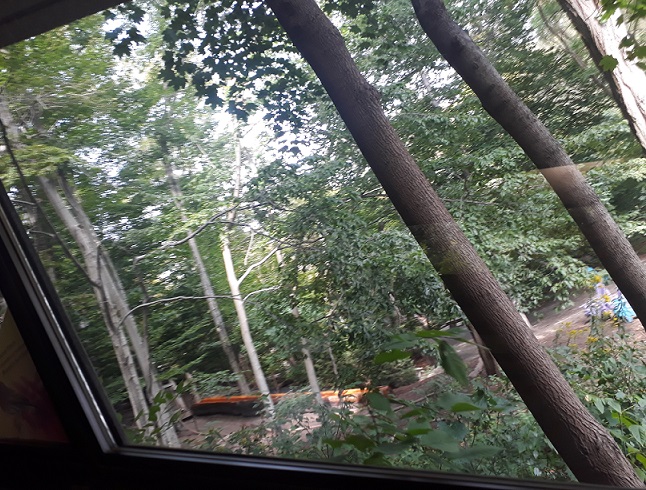
On the way up to Level 5 and also to the following levels, from the escalators you can see this beautiful forest that “embraces” the Ontario Science Center. If you have time, you can take the time to walk around it, watch the birds and relax with this view.

Arriving at Level 5, we will visit the space “A Question of Truth”, where we can see the development of an astronaut’s garden, as well as his spaceship, a space exploration robot among other items.
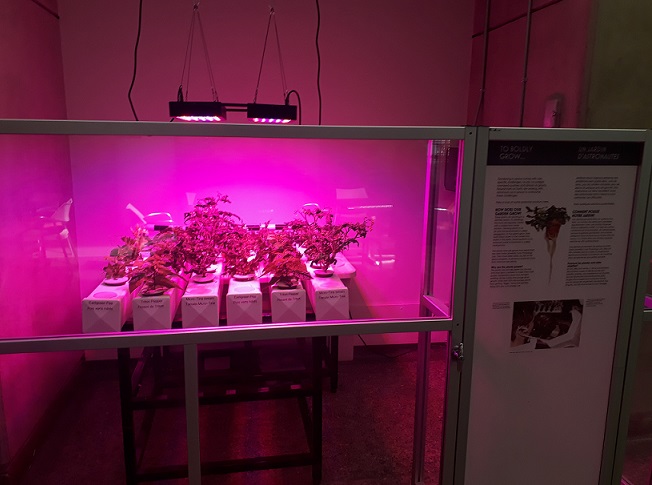
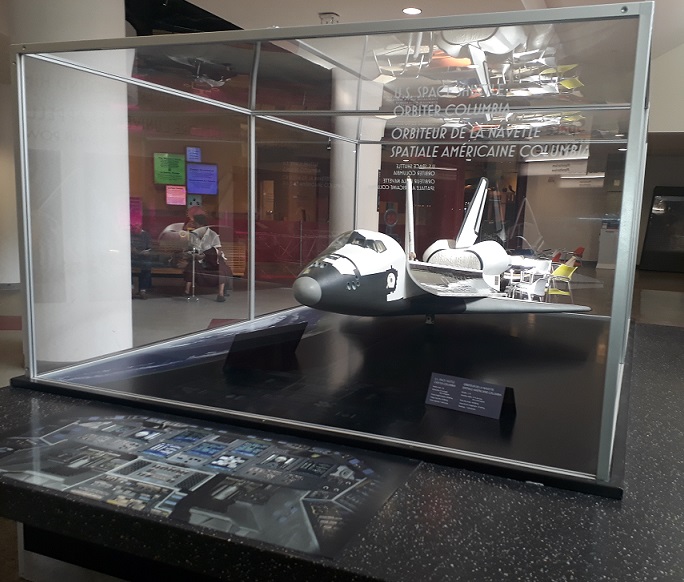
Spaceship 
At Level 4, we are invited to explore Space, in the Space place, where the planetarium is located, and where we have the opportunity to see rocks found on the Moon and meteorites from Mars, in addition to learning about the Moon, Planets, Galaxies and Stars and instruments used for space observation, such as a telescope, for example, among others.
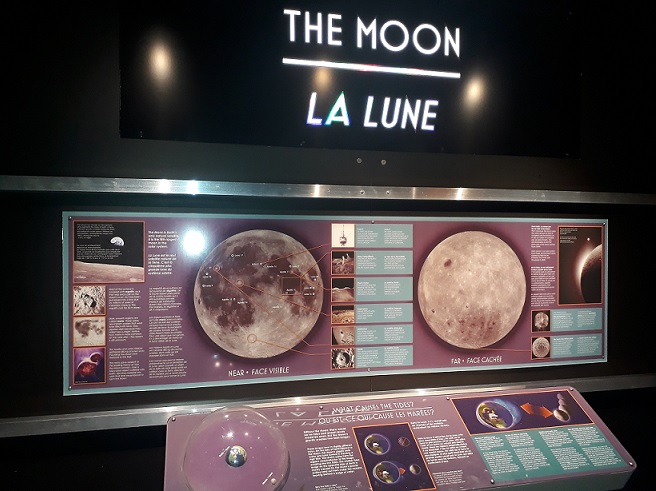
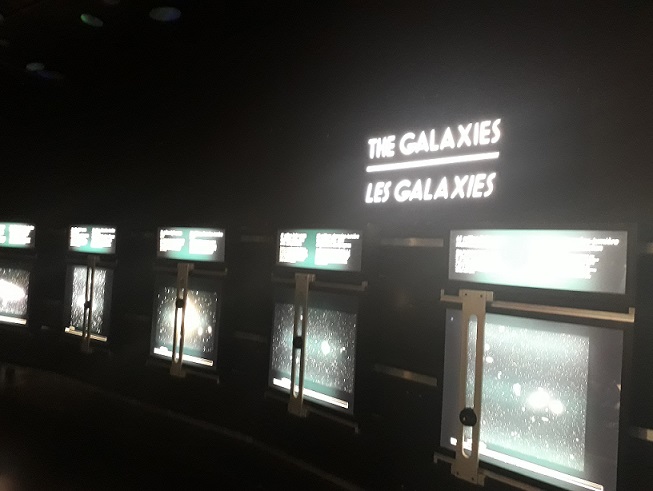
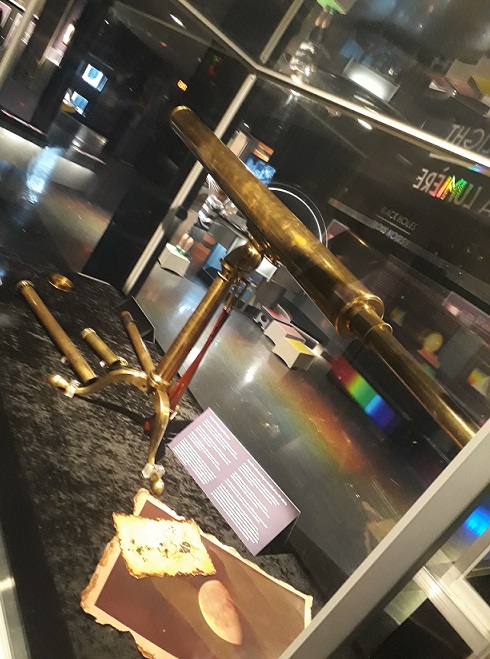
Telescope
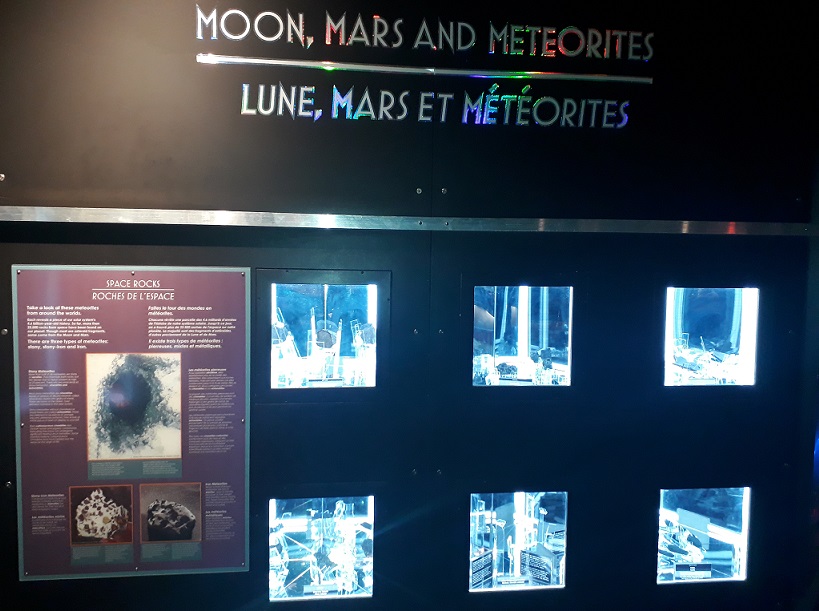
At Level 3, you have access to the Terrace, which is another part of observing the Forest. So, the visit continued on Level 2 where the entrance is and a corridor called “Celebration Way”, which brings a series of achievements of humanity since the museum’s inauguration in 1969.
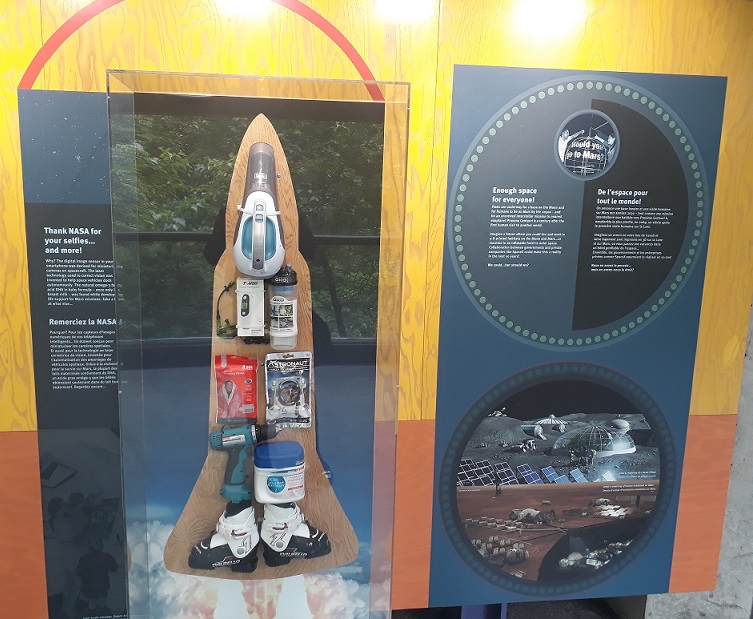
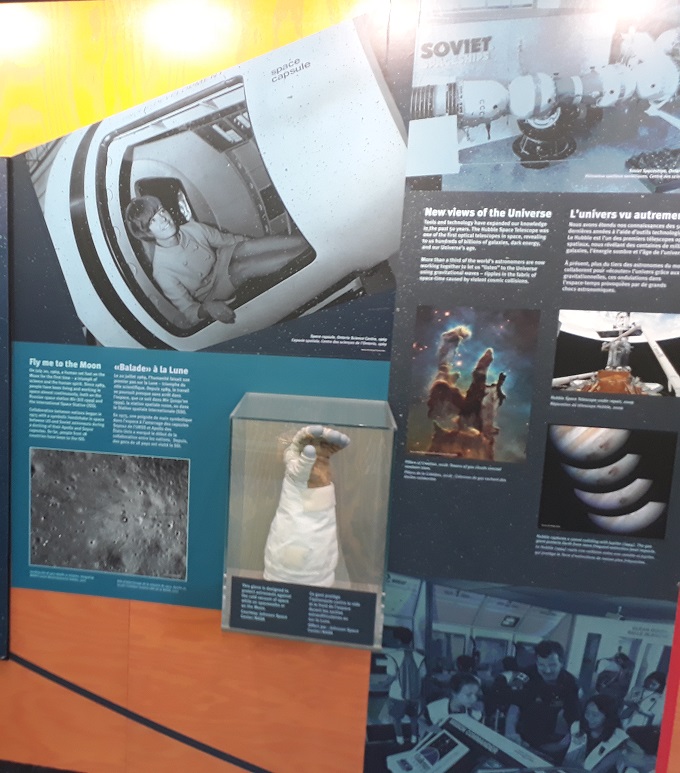
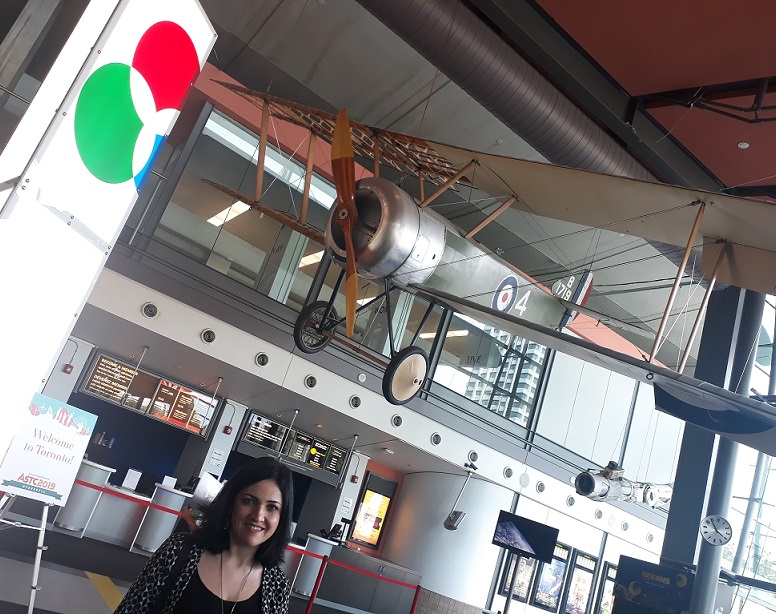
In the Hall¸ where we are welcomed by this plane, there is the escalator that gives access to Level 1, which is on the mezzanine and there is a conference room, auditorium, among other exhibition spaces. Our visit to this museum ends here. Remembering that the Ontario Science Center is located at 770 Don Mills Road on the corner of Eglinton Avenue East and the adult ticket costs CAD $ 22 (but has a discount for students, seniors and children and is also included in the CityPass to choose between this museum or the Toronto Zoo). And if you want to know more details about it, just take a look at the site: https://www.ontariosciencecentre.ca/
3 – Hockey Hall of Fame
After this science class at the Ontario Science Center, it was time to relax and nothing better than sport to provide us with that, right? So I invite you to visit the Hockey Hall of Fame, a museum entirely dedicated to hockey, a sport so loved by Canadians.
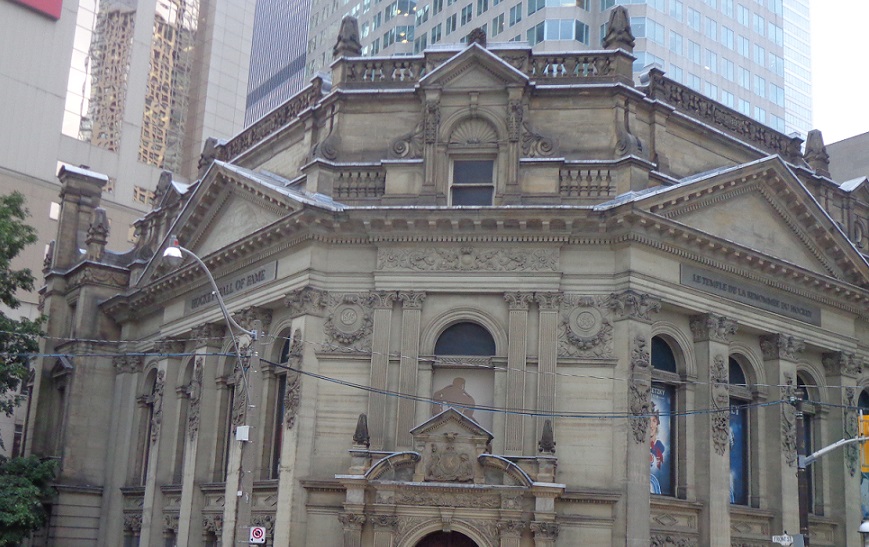
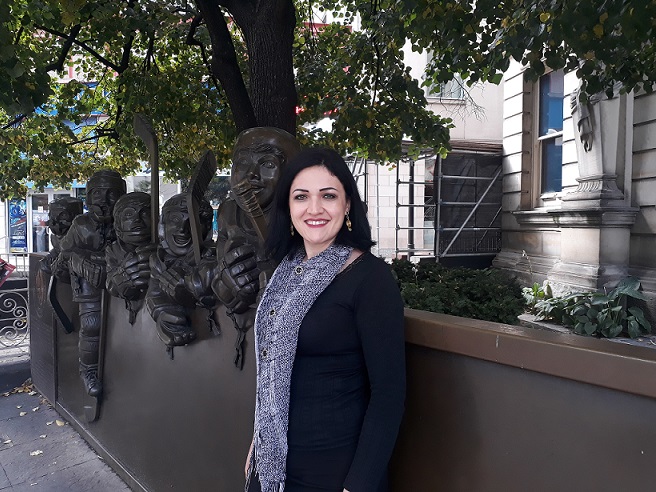
The Hockey Hall of Fame was founded in 1943 with the proposal of being a memorial in honor of the great names that contributed to the development of this sport and occupies the historic building of the old Bank of Montreal since 1993 (you can even enter the vault, hold on a little bit that I’ll show you).
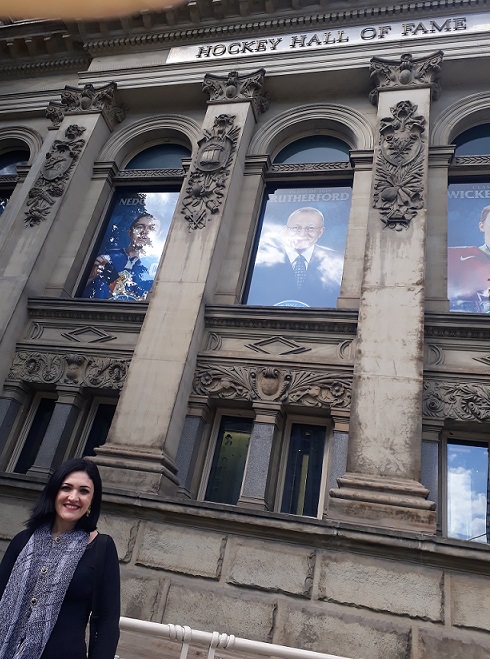
As soon as we enter we are already involved in the sport, knowing its history, through the clothes and equipment used in games (such as pucks and sticks) of great players like Wayne Gretzky.
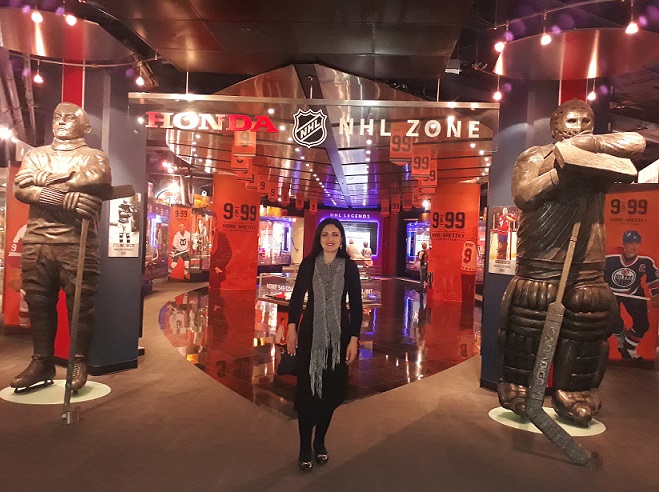
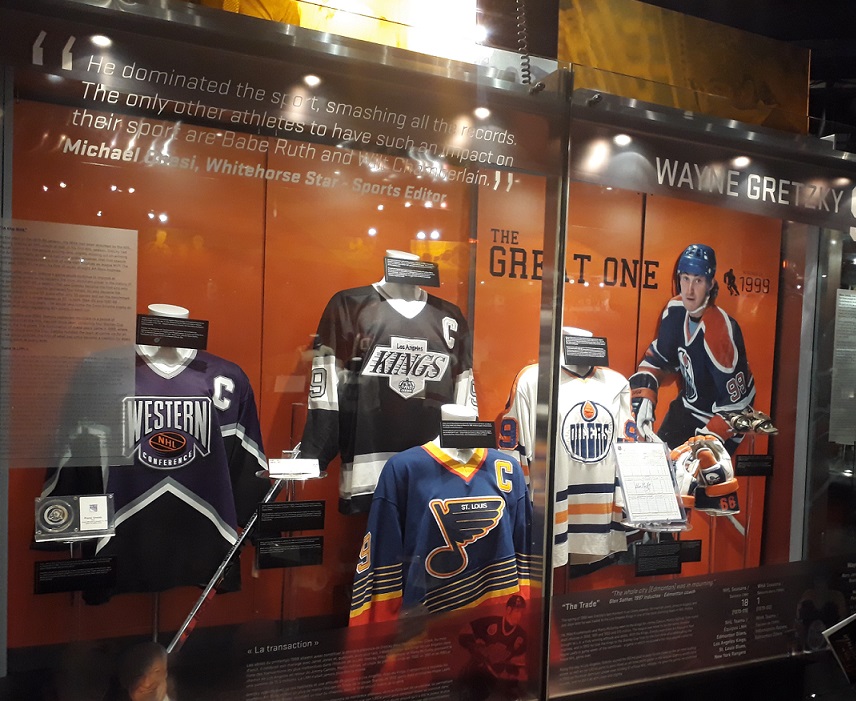
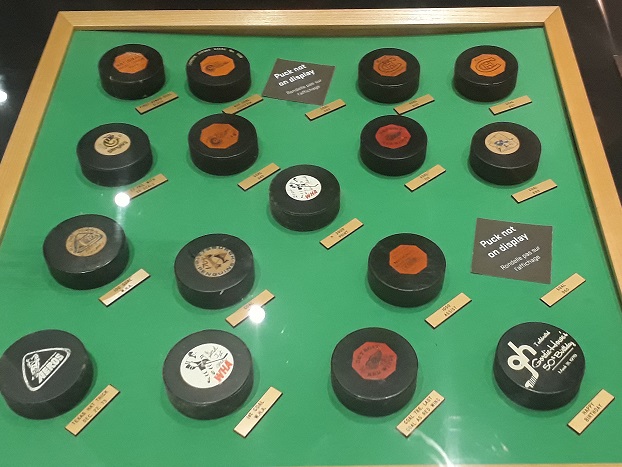
Pucks 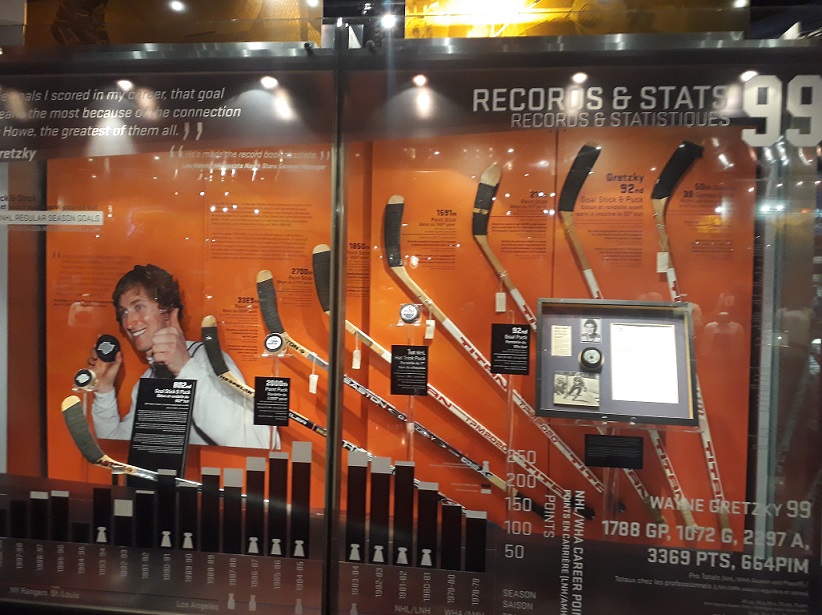
Sticks
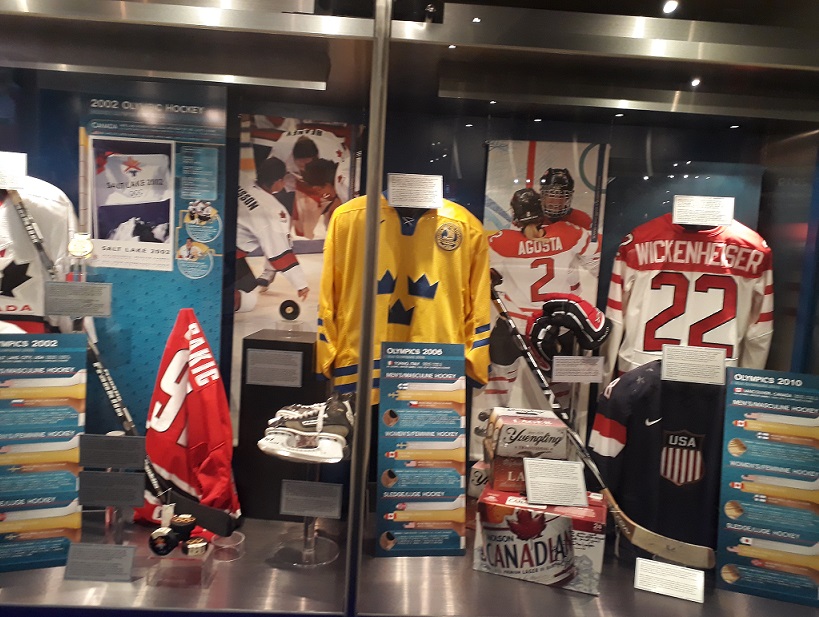
Another very interesting place to visit in this museum is the Hockey Players’ Dressing Room, have you ever imagined what a privilege to visit this space? Too bad it was only created for the Hockey Hall of Fame and there was no player there, anyway it is really cool because you can take the objects to feel what it is like.

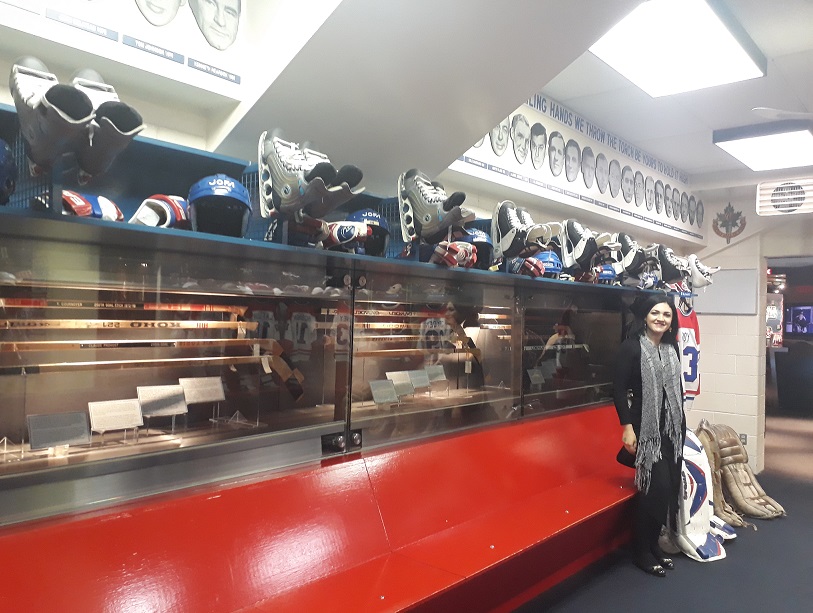
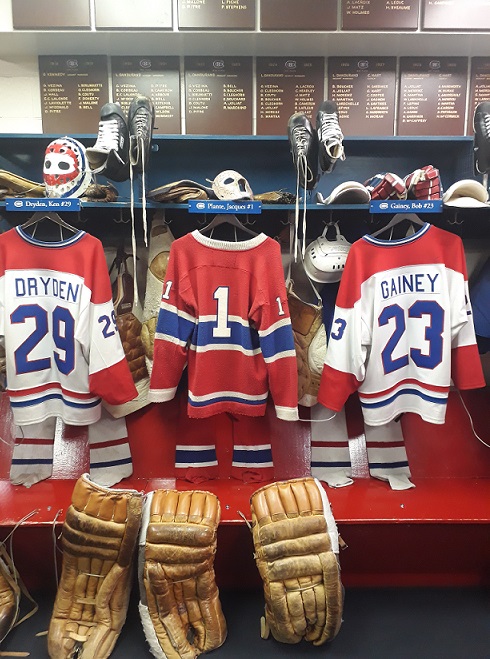
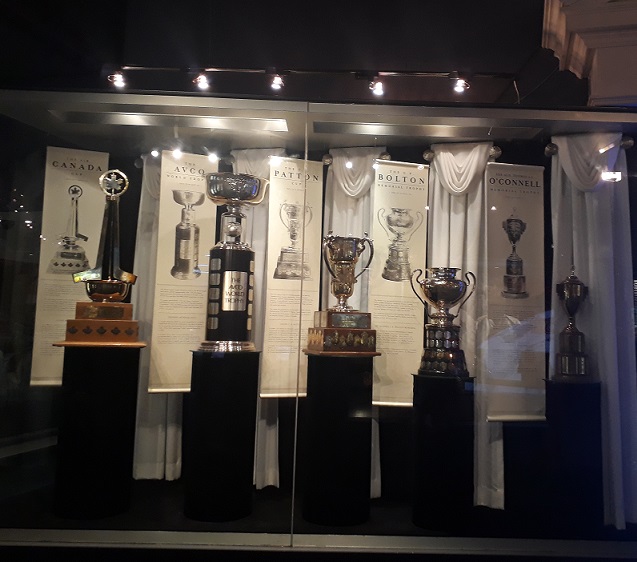
It is also worth knowing the part of the Trophies and then that of the Masks¸ where the most different and curious masks are exhibited (I was enchanted by the tiger’s) and where we can learn about its evolution.
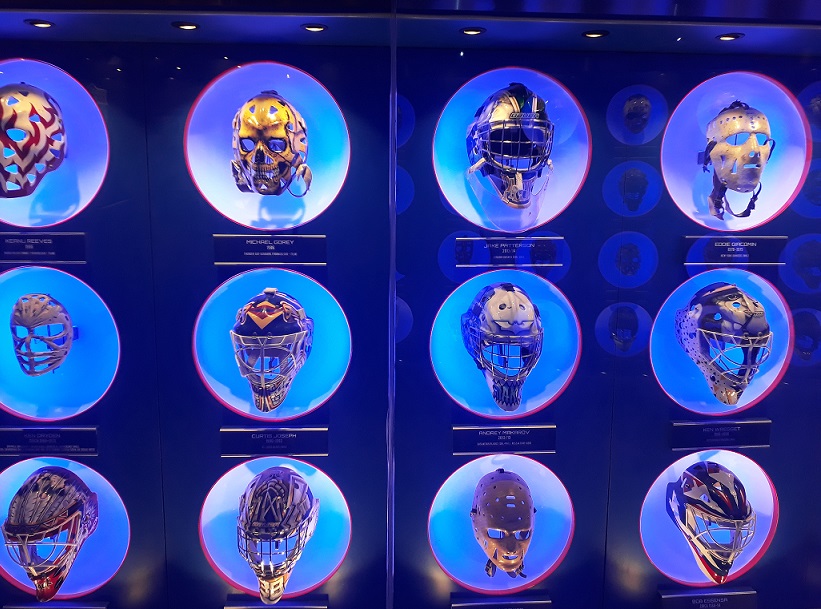

Tiger’s Mask 
The Hockey Hall of Fame also has a very interactive part, where you can risk being a hockey player, with a training space of your own !!!
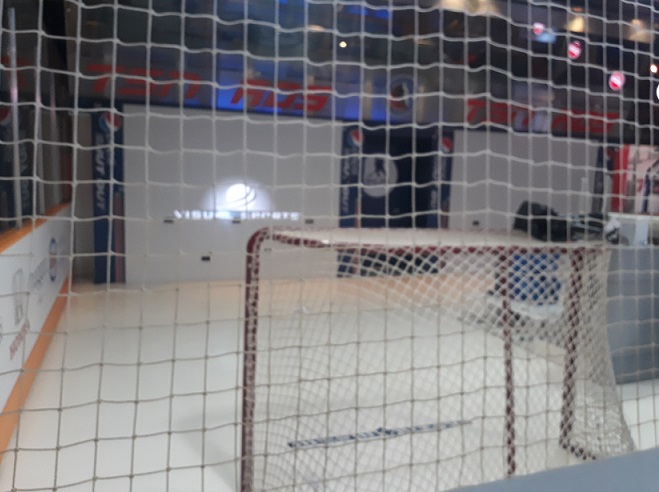
Hockey Field 
But if you don’t know much about hockey and want to know the main rules, positions on the field, the formations, the skills that a player should have, among many other training tips just go to the Sport Fitness Advisor website: https://www.sport-fitness-advisor.com/hockey-training.html and get ready for the game!!!
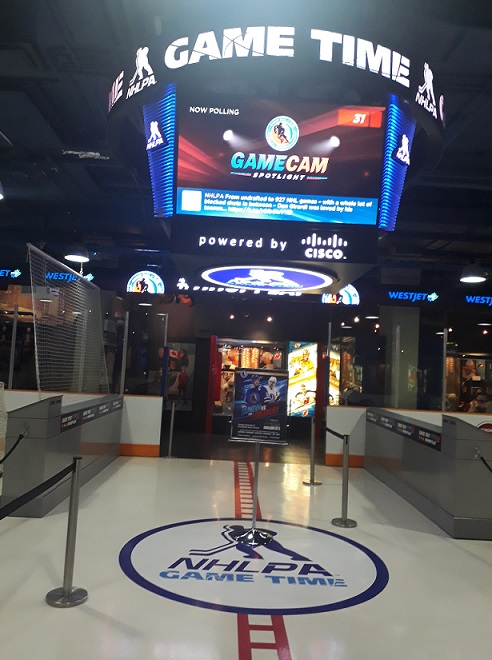
You can also play foosball, watch hockey matches, and see how much products are linked to that sport.
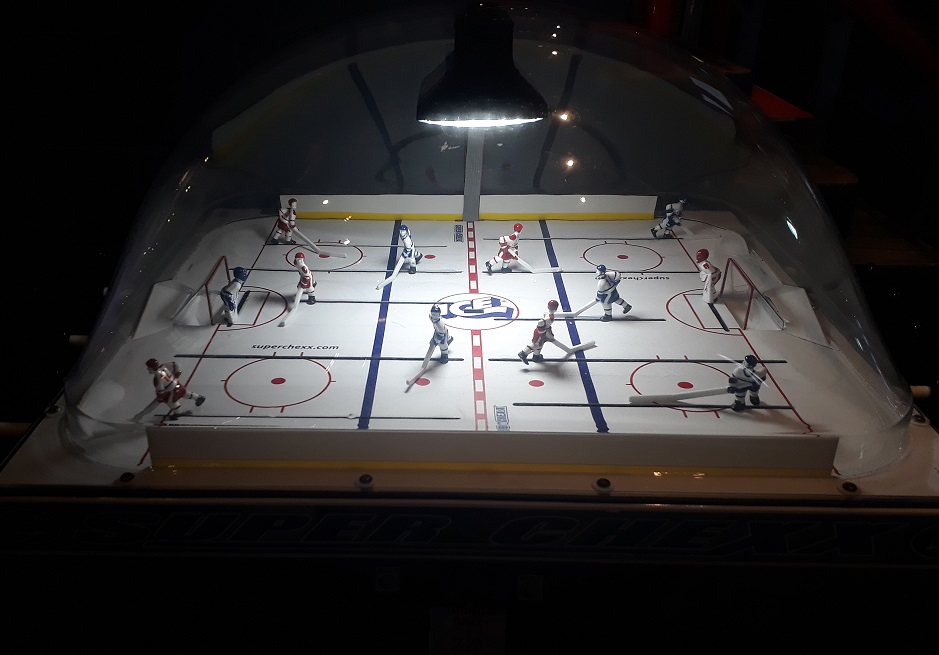
Foosball 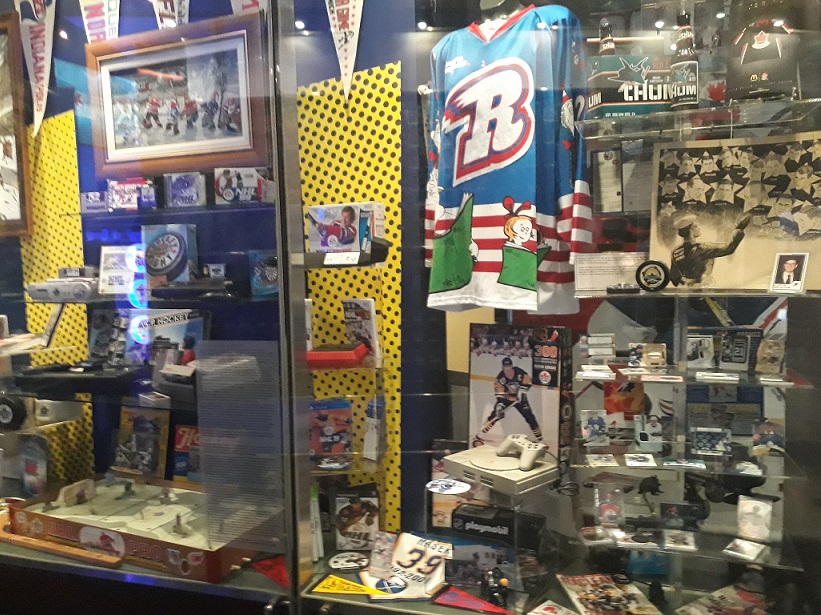
Hockey Products
And to end the visit we will visit the Esso Great Hall, which is on the top floor and has the most important trophies and a tribute to the big names in hockey.

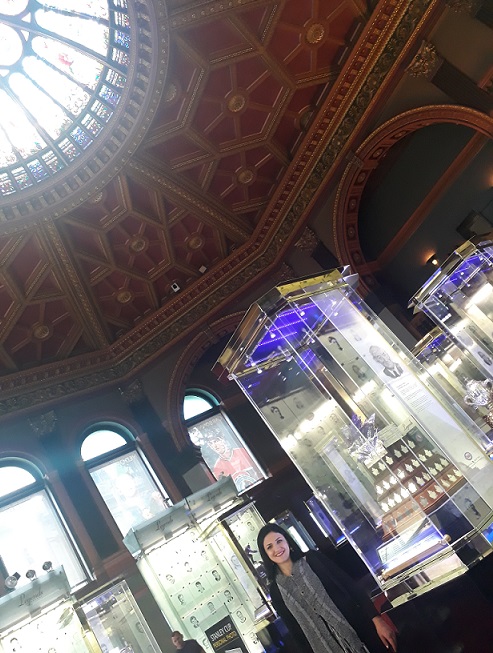
Me and… 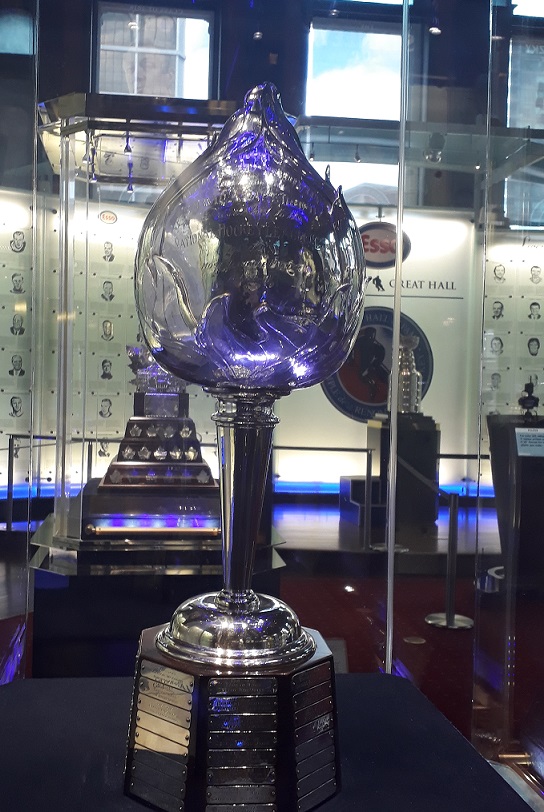
The Trophy
And it is on this floor that we can see the Bank’s original facilities, such as this beautiful dome, built in 1855 by Robert McCausland and decorated with mythological figures and provincial emblems. Besides the safe (as I promised you in the beginning, remember?)
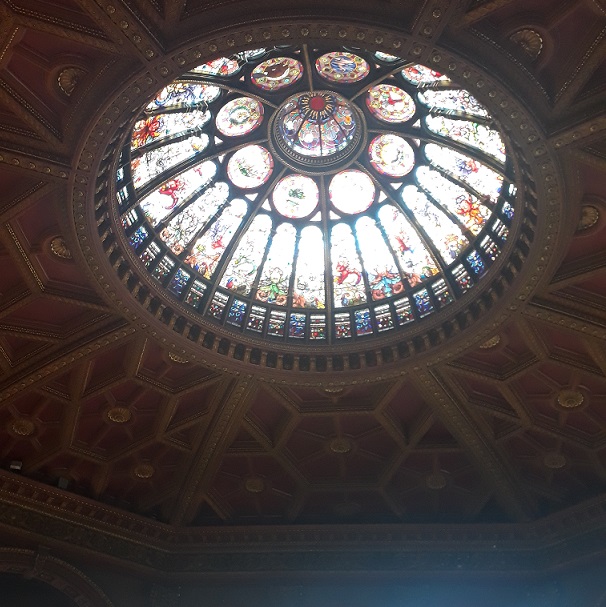
Dome and 
Features Clock
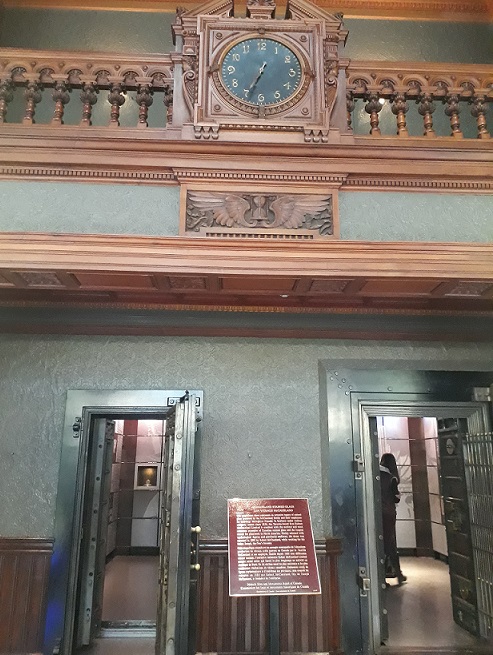
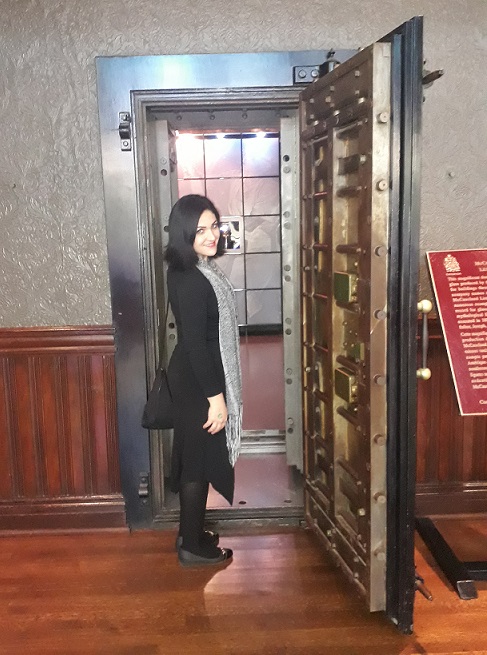
Let’s go… 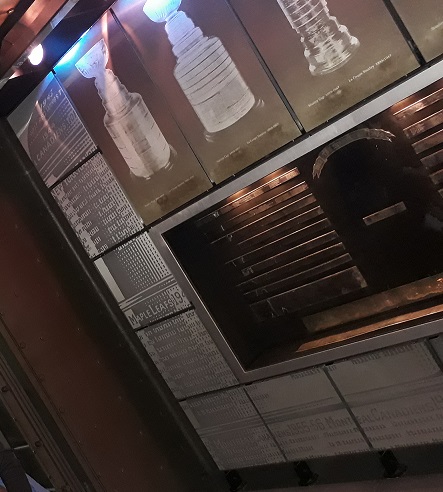
into the safe

A beautiful walk, didn’t you think? The Hockey Hall of Fame is located on the corner of Yonge and Front Street at Brookfield Place. The adult ticket costs CAD $ 20 (but has a discount for children and the elderly). Ah! There is also a store of sports-related products and to find out more information just check the website: https://www.hhof.com/
4 – Museum of Ilusions
You have certainly heard this phrase: “not everything looks, like really is” and in the museum that I am going to present this statement now makes perfect sense. The Museum of Illusions challenges us to understand what is beyond our gaze in a very playful and fun way.
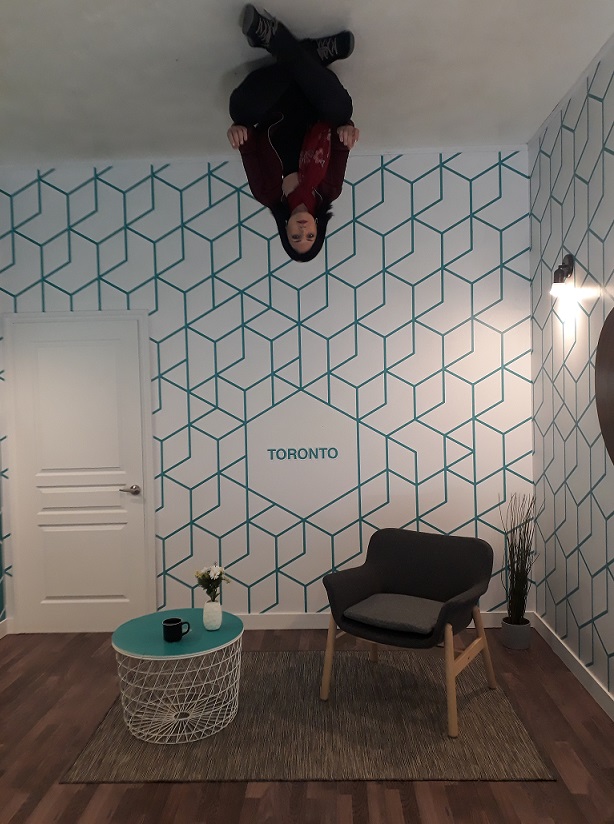
More than 80 illusions compose the collection of the Museum of Illusions, which opened in late 2018 with an interactive art proposal, mixing fun and learning in one place through optical illusions, mirrors, and a lot of creativity. As soon as we arrive we are invited to test our perspective and increase or decrease in size in the Ames Room or our ability to stand and walk straight in the Anti-gravity Room, making it difficult to prove that we did not drink alcohol before entering the museum.

The Sisters in… 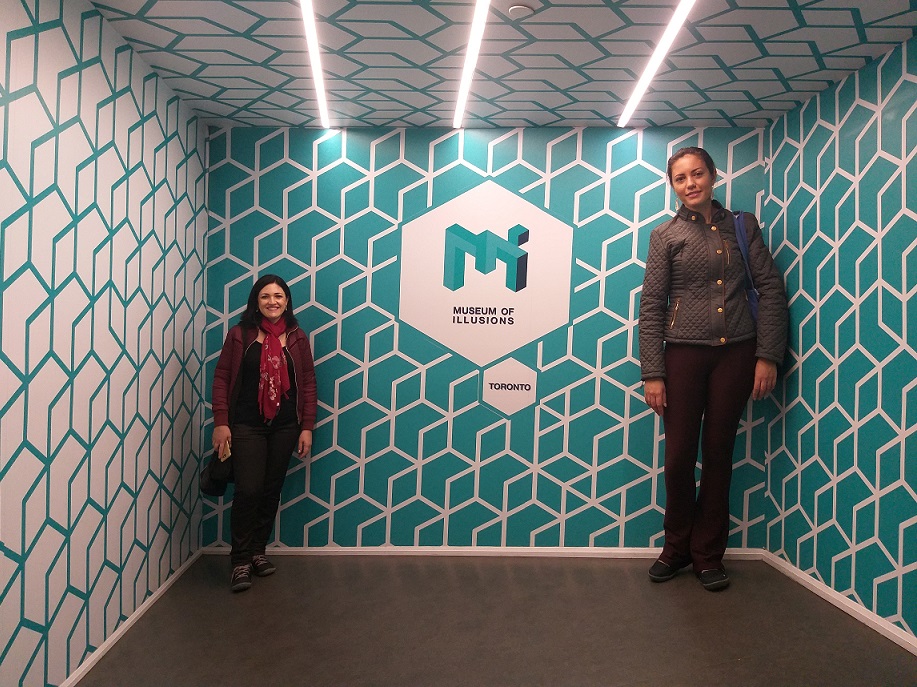
The Ames Room
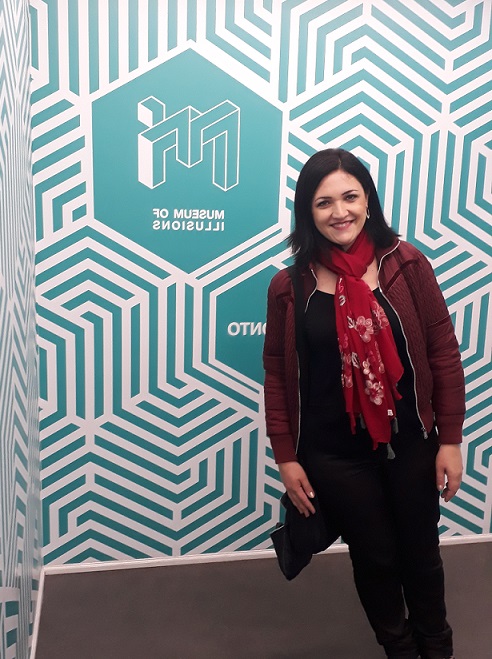
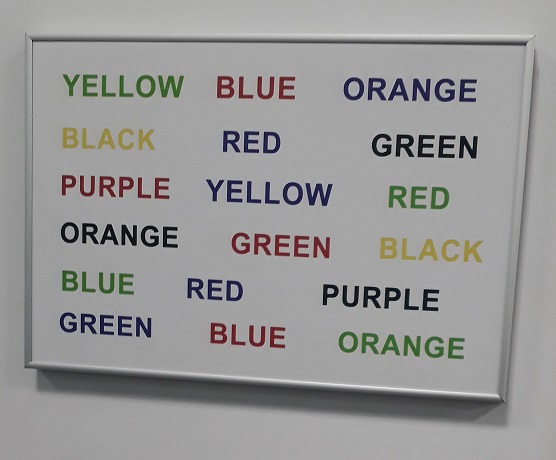
To make our tour of the museum more fun, I propose the Color Challenge. Do you see this picture on the side? Try to make the test of saying the name of the color that the word was written and not the word itself, for example, the first word is written “yellow”, but in this challenge you should not say “yellow” but “green”, which is the color that the word was written on. I know that in an hour it will confuse your brain and you will find yourself reading what is written, but relax that this is the challenge and have fun…
An installation that is very famous in this museum is the Head on the Platter, where curiously his body disappears and only his head remains to be delivered on the tray to his enemy. Or you can reverse the game and have your opponent’s head on the tray for you. I will not tell you the trick or it will lose its fun, but it is a lot of fun and will give you many likes on social medias.
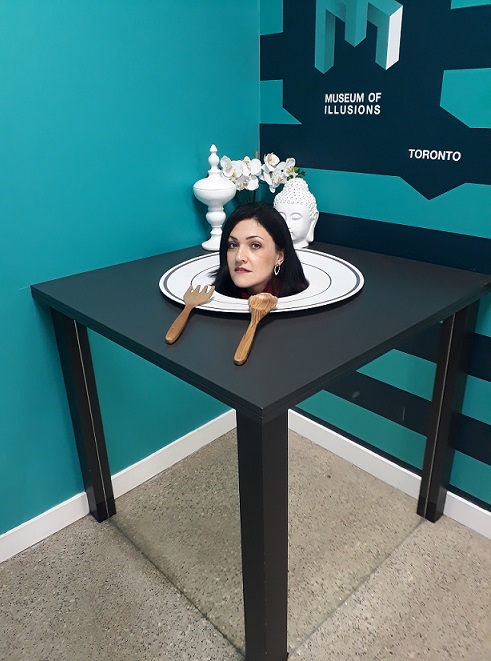
The “Turntables”¸ that provoke an almost hypnotic illusion and the pictures of “Optical Illusions“¸ that seem to be moving when we stop to observe them are also successful. Focus your eyes on this picture and then tell me what it feels like.
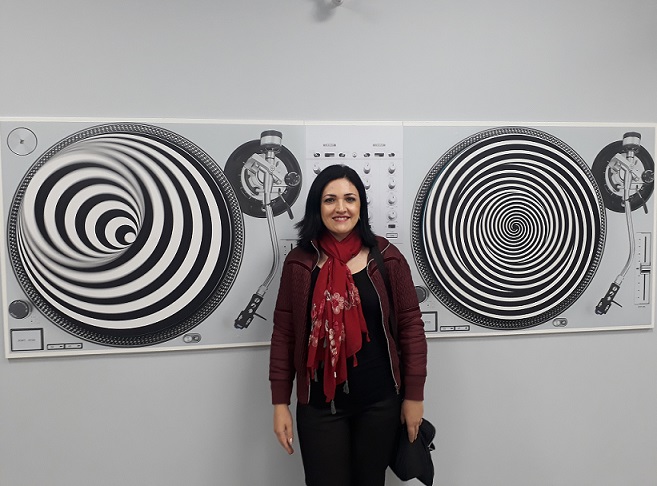

Sometimes you want to play poker, but you don’t have company? Do you feel alone in the world? Or have you ever wished you had a clone to divide up the tasks? Whatever the reason, the Museum of Illusions has the solution: the “Clone Table“, in which you sit and have five more of you to play a game of cards, chat, watch yourself better, anyway, you are now in five to decide what to do.

As I mentioned earlier, there are several installations for you to have fun here at the museum, but as I still want to introduce you to other museums, let’s end our visit at the Museum of Illusions in one of the installations I liked the most: “The Vortex Tunnel”, in which you feel everything spinning around you while trying to walk firm and strong on the catwalk (will it be possible to walk like this ????). To get an idea of how it feels, just take a look at this video I posted on our YouTube channel: https://youtu.be/8Ckl53Ub8Vo .Watch there and then tell me what you felt…
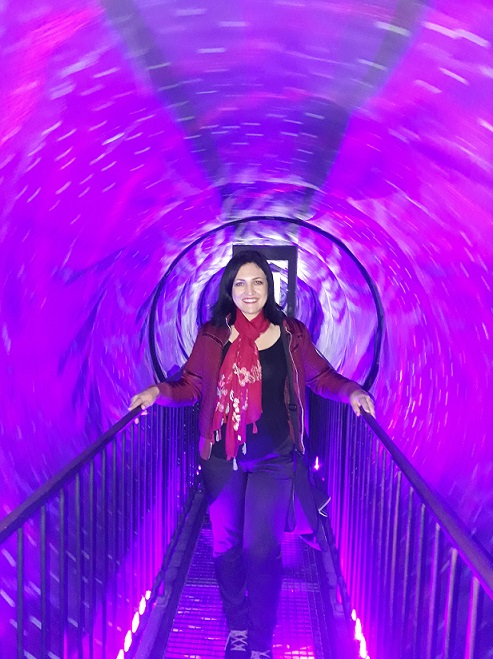
The Museum of Illusions is located at 132 of Front Street East and adult tickets cost CAD $ 23.50 (but have a discount for a family combo and for children). To find out more about the museum, just check out the website: https://museumofillusions.ca/
5 – Spadina Museum

After so many games we played with our brain at the Museum of Illusions, the time has come to take you on a journey through time, that’s right, let’s transport ourselves to the beginning of the 20th century, more precisely between 1920 and 1930, knowing the Spadina Museum or Spadina House, which is a beautiful mansion that was owned by the Austin Family between 1866 until the early 1980s and portrays the lifestyle of the wealthy of the time.

It is worth remembering that the name Spadina, was given by the first owner of this land (Mr. Baldwin, who later sold it to Mr. James Austin) and derives from Espadinong which means “hill”, very appropriate for the place where the house is located, one of the accesses to the museum is through the “Baldwin Steps” Staircase that provides us with this beautiful view of Toronto.
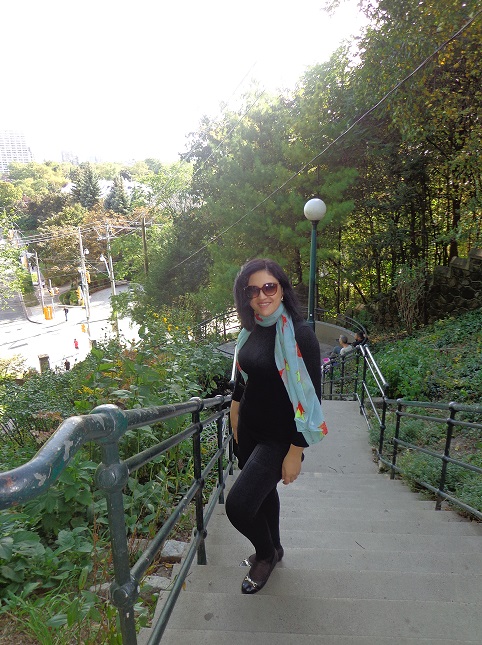
Baldwin Steps 
Staircase
Visits to the Spadina Museum are guided and begin with a video explaining a little about the history of the house and Toronto in the 1920s. Then we went on to see the house itself, which has a really beautiful decor, mixing Victorian Style, Art Deco, Art Nouveau, Edwardian and Colonial Styles. In addition to the furniture, the wallpapers also attract attention.
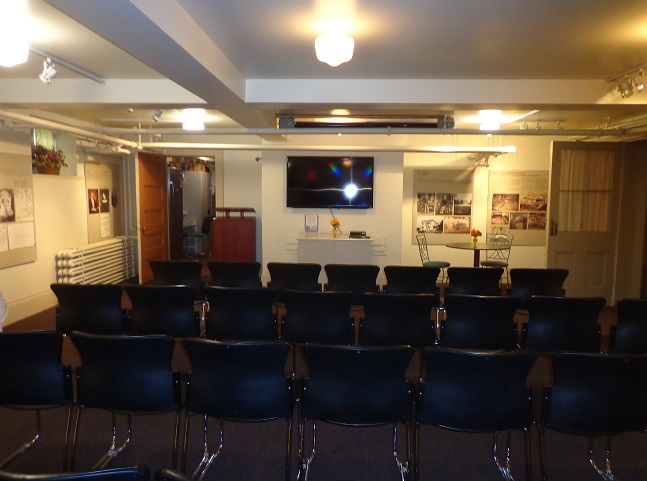
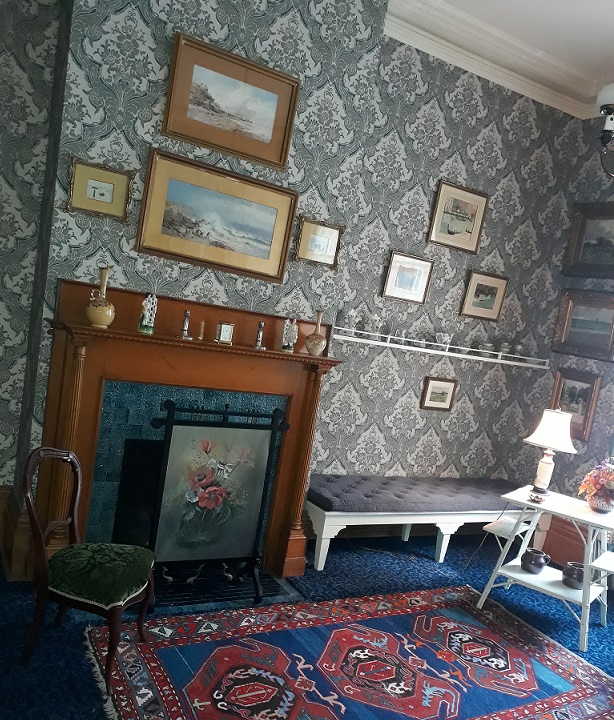
Wallpaper 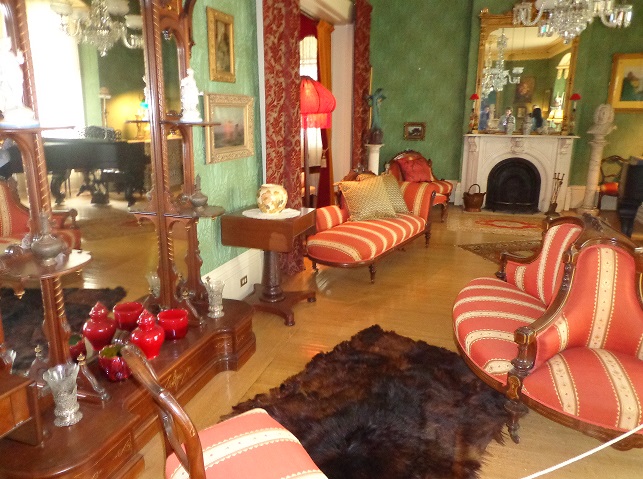
Living Room
The Spadina Museum opened in 1984 (after the house was donated by Anna Kathleen Thompson, Mr James Austin’s granddaughter, to the city of Toronto), but it needed to be restored for a long time, only reopening to the public in 2010. But it was worth the wait, because they were very faithful to the original structure, allowing us to know what the game room, the internal garden and the dining room were like at that time.
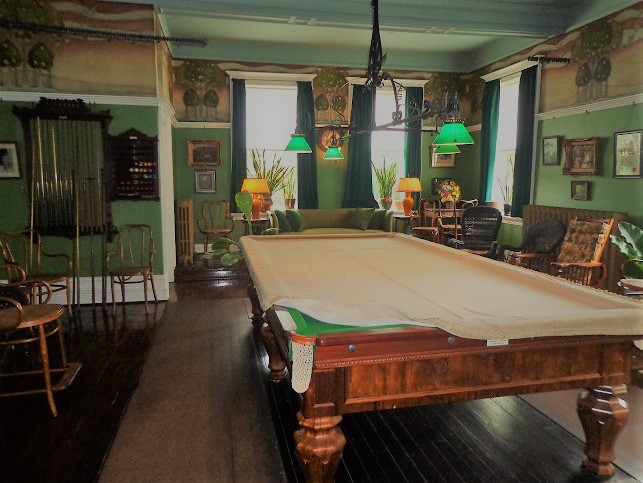
The Game Room 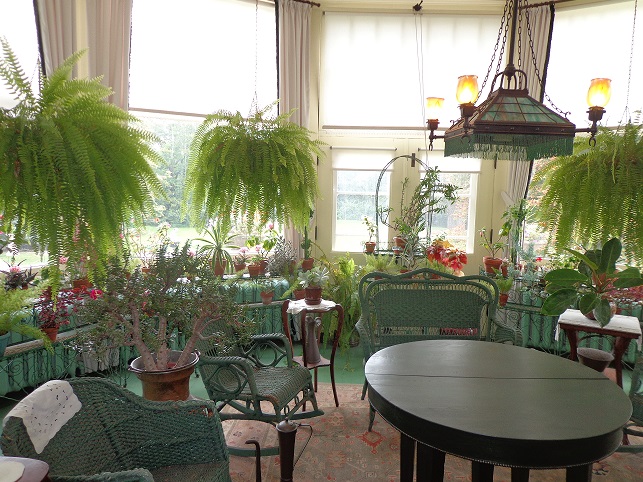
Internal Garden

Also noteworthy during the visit are the details of the decoration of the rooms, the library and the kitchen, for example, which had the packaging of the time in the cabinet. There is a lot of caprice and care on the part of the restorers.
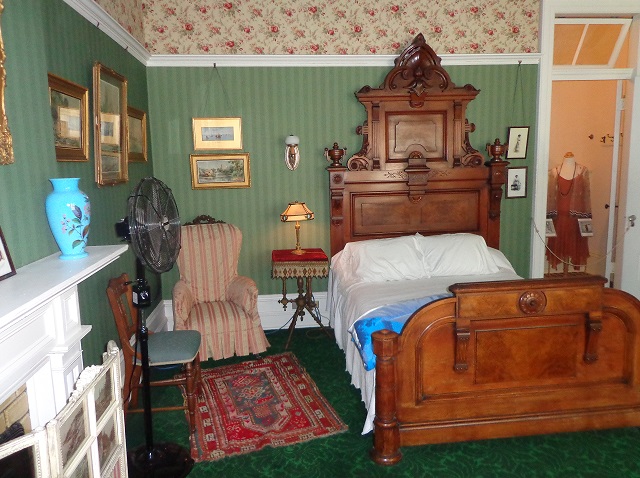

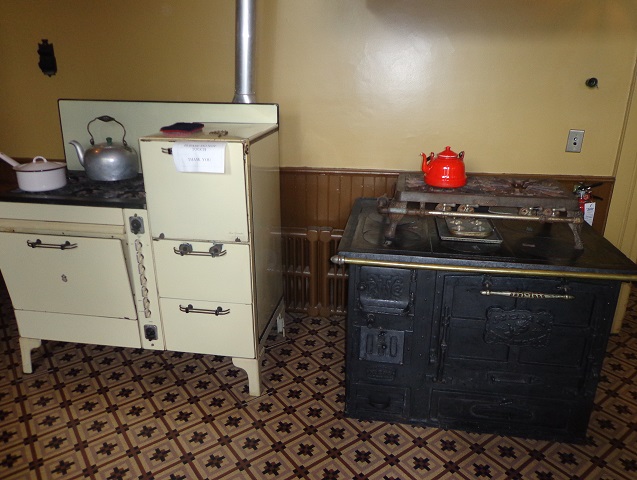
Kitchen 
WC
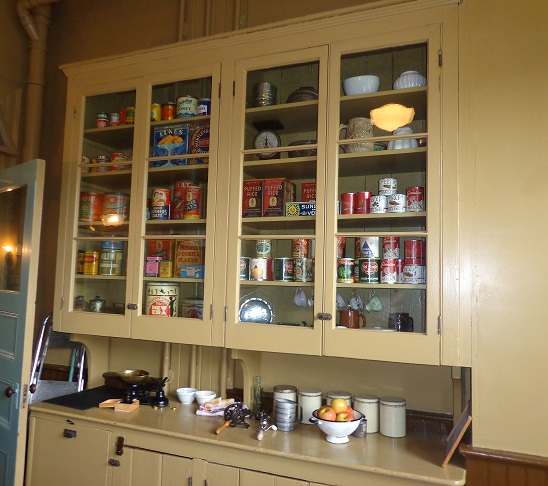
At the Spadina Museum we can also see what technology was like at the time, as the house was one of the first to have a telephone, gas lighting and electricity, but before it arrived, I found it very interesting how they kept food in a kind of refrigerator, placing the food on the bottom and ice bars on the top, and as they melted, they replaced them…
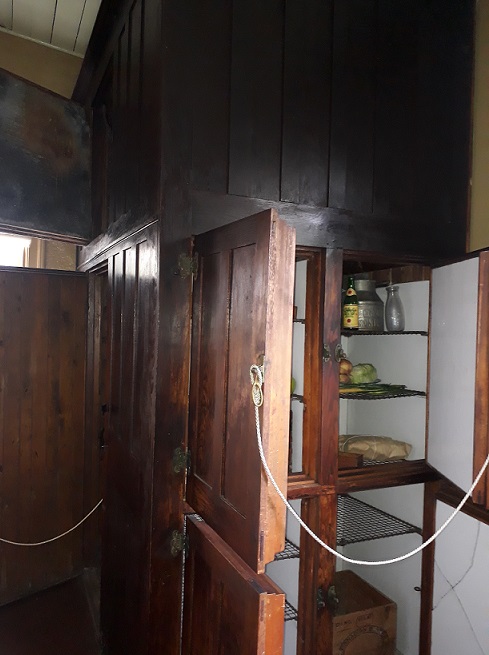
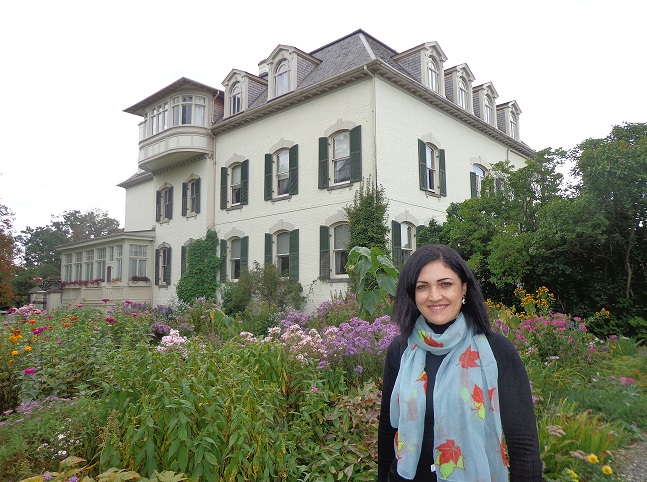
To end our visit to the Spadina Museum, we went for a walk through the beautiful Garden, which, like the house, also features Victorian and Edwardian styles and hosts various events such as Halloween, Christmas, Weddings, among others. I’m sure this place will provide you with wonderful photos …
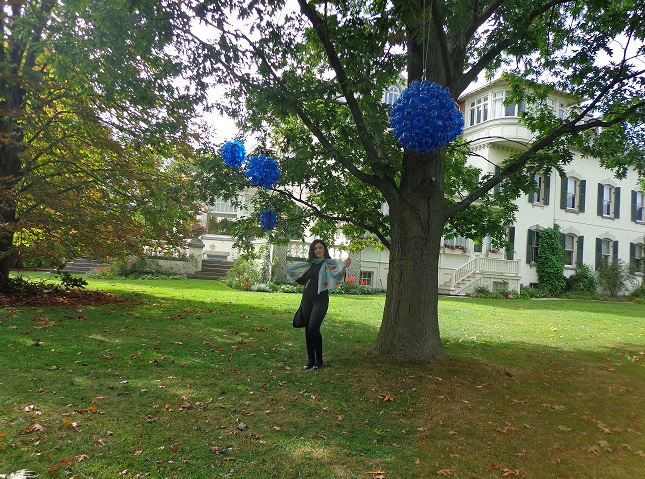

In the Garden area of the Spadina Museum¸ we also find a greenhouse and the residences of the employees who worked at the Spadina House, such as the Driver’s and Gardener’s House.

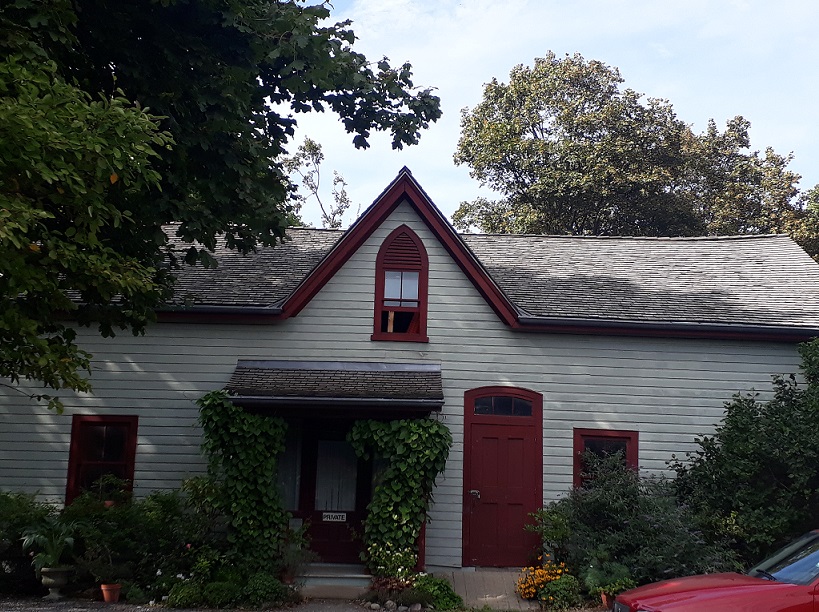
Gardener’s and 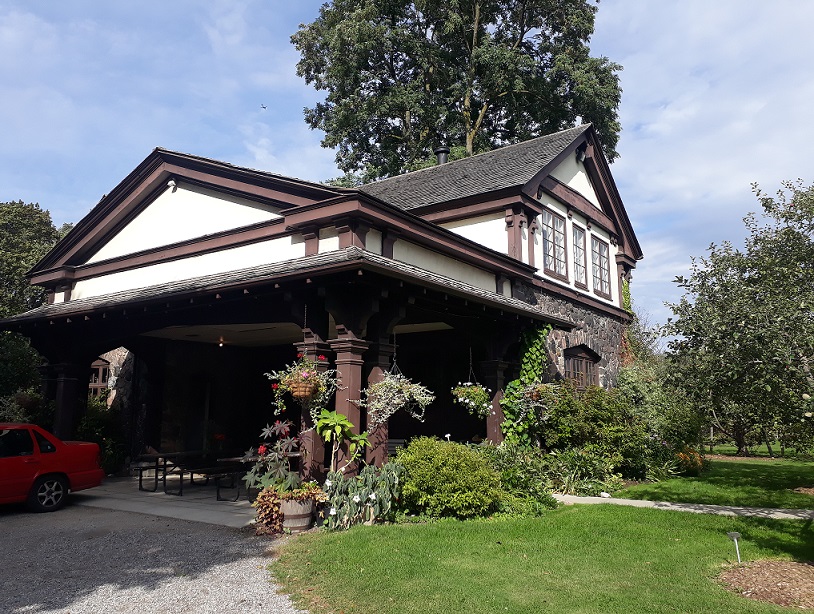
Driver’s House
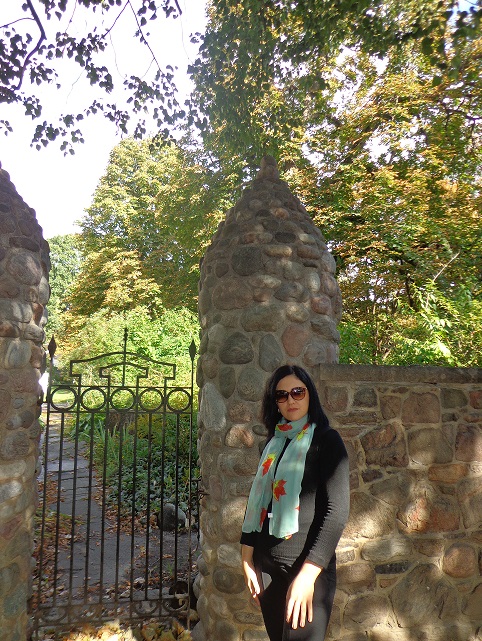
The Spadina Museum is located at 285 on Spadina Road and the nearest metro station is Dupont. Adult tickets cost CAD $ 10 (but have a discount for the elderly, teenagers and children) and you can also buy the combo to visit it with Casa Loma. To find out more information just take a look at the site: https://www.toronto.ca/explore-enjoy/history-art-culture/museums/spadina-museum/
6– Art Gallery of Ontario (AGO)
If you like art, especially plastic arts, you will fall in love with the Art Gallery of Ontario, better known as AGO, which is one of the largest museums in North America, with a collection of almost 95,000 pieces.
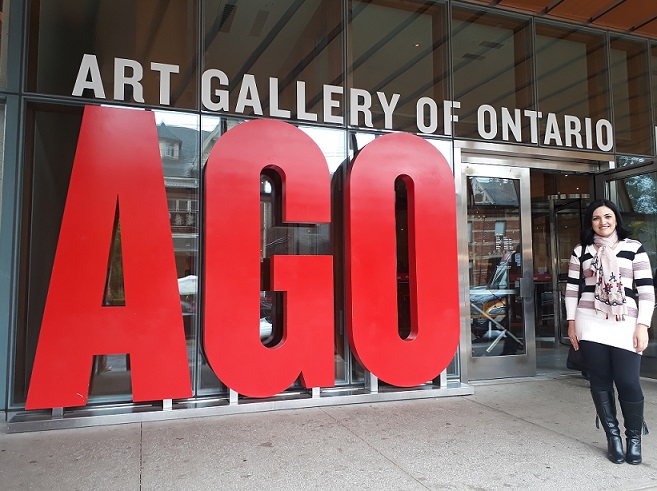
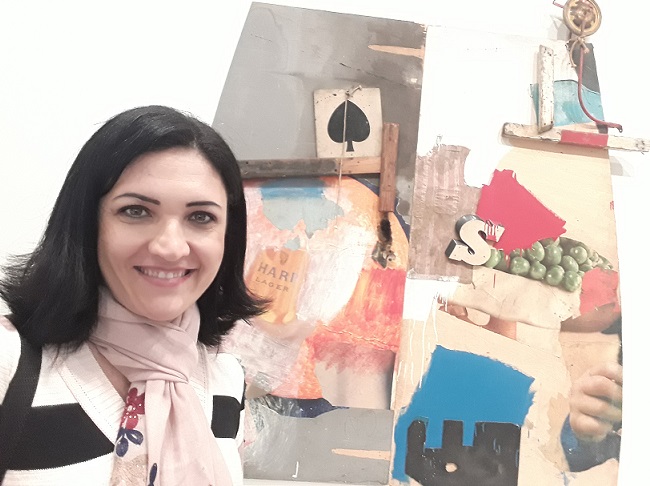
The Art Gallery of Ontario (AGO) was founded in 1900 on the initiative of a group of citizens and was initially called the Art Museum of Toronto. As time went by, its collection increased and today it has pieces from the year 100 BC to current works, including indigenous, African, European, modern, contemporary art, photographs, Canadian collections, among many others distributed over the five floors of visitation of the Gallery.

A very nice tip for you to enjoy even more your trip to the AGO, is to take a guided tour, which lasts between 45 and 60 minutes and takes place daily at 11 am, 12 pm, 1 pm, 2 pm and 3 pm (and on Wednesdays and Fridays at 7 pm also). We started our tour with this visit and then went to enjoy the works we like the most. Speaking of favorite works, one of the ones that most caught our attention was this Collection of Biblical Scenes sculpted with a wealth of details and often in miniatures.
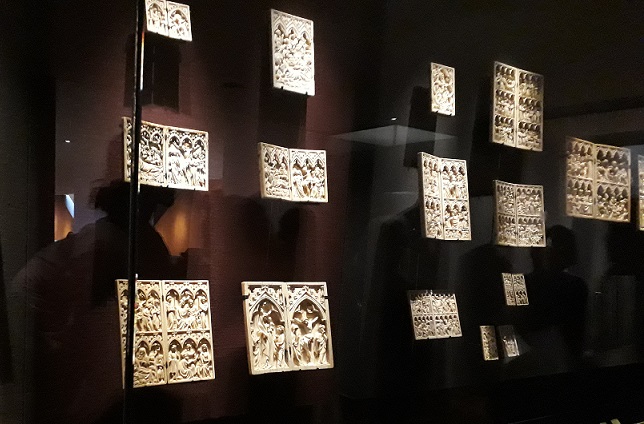
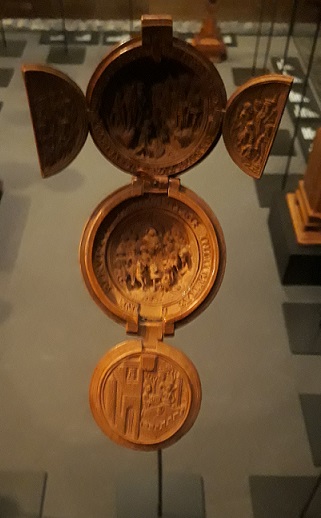
Another very cool part of the AGO is the one dedicated to Canadian Art, where we find everything from strong and vibrant colors like “Man Changing into Thunderbird” by Norval Morriseau, to blue-toned lakes and mountains like “South Shore, Bylot Island” and “Lake Superior ” by Lawren S. Harris.

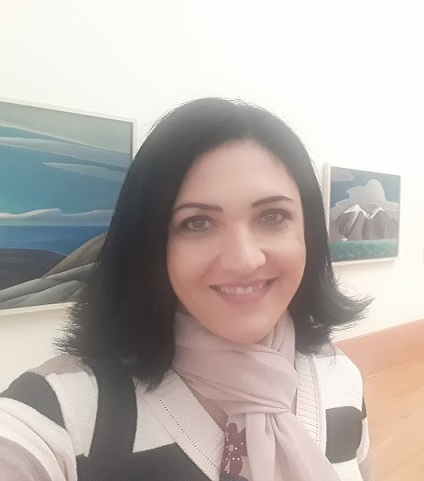


AGO also has a very rich collection of European art, where we find works by Pablo Picasso, Paul Cézanne, Claude Monet (picture beside), Auguste Rodin, Vincent van Gogh, Edgar Degas, among others.


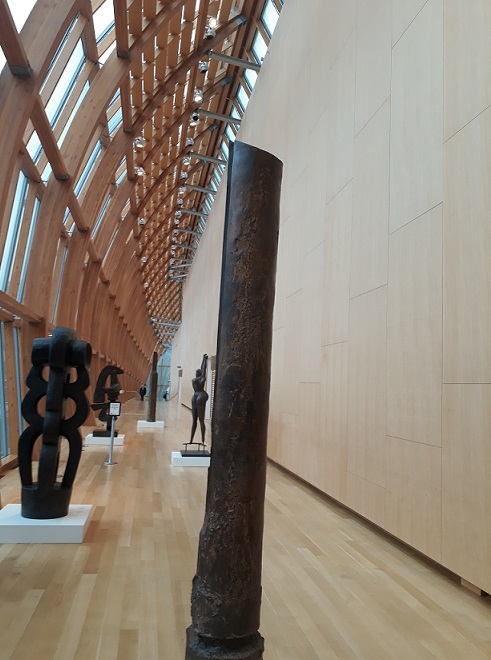
In addition to the incredible works of art, AGO also deserves mention for its beautiful architecture, being considered one of the most beautiful buildings in Toronto !!! It is worth remembering that these columns were “adopted” by companies when it comes to restoration (to be built in wood and maintain the same standard), a good way to contribute to art!!!

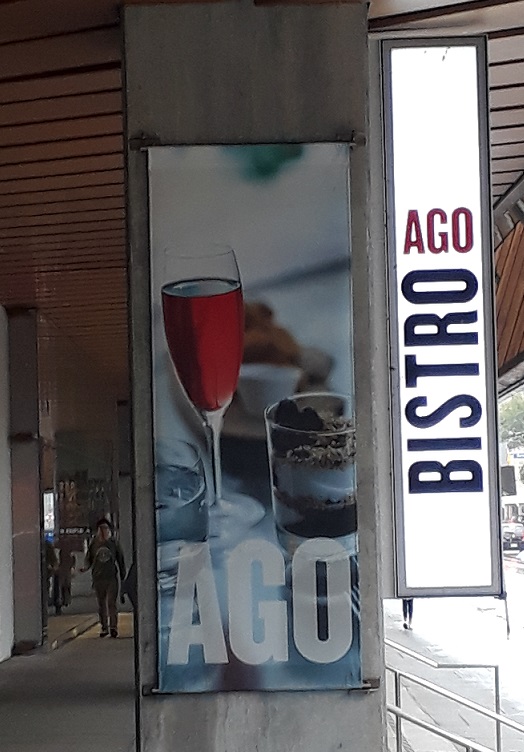
And to close this visit with a flourish, nothing better than a break for a drink at the AGO Bistro, which is on the ground floor of the Gallery!!!

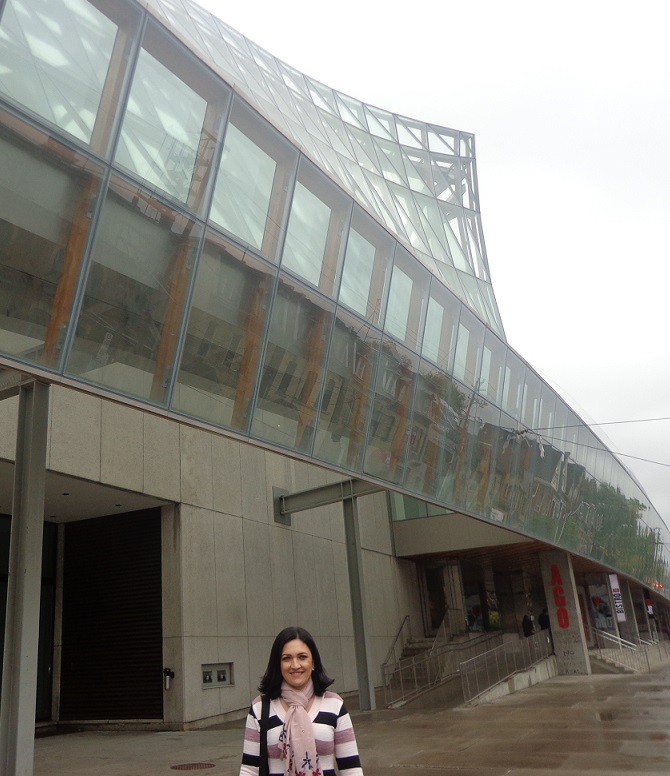
The AGO is located at 317 of Dundas Street West and adult tickets cost CAD $ 25 (but have an annual pass that costs CAD $ 35 and allows unlimited visits throughout the year, is free for people under 25 and for members of the AGO and free admission on Wednesdays from 6 pm to 9 pm). To find out more details just check the website: https://ago.ca/
7 – Casa Loma / ROM
Speaking of the Toronto Museums, these two certainly couldn’t be left out: Casa Loma, which is a beautiful Castle that has become a museum and takes us back in time as soon as we cross its gates. And the ROM (“Royal Ontario Museum”) which is the most famous museum in Toronto and has a collection of more than 13 million pieces, including from dinosaur fossils to works of art from various periods of History. To see the photos and learn more about these two museums, just click on the link and go to our TOP 10 Toronto post: https://cadaviagemumabagagem.com/top-10-de-toronto/.

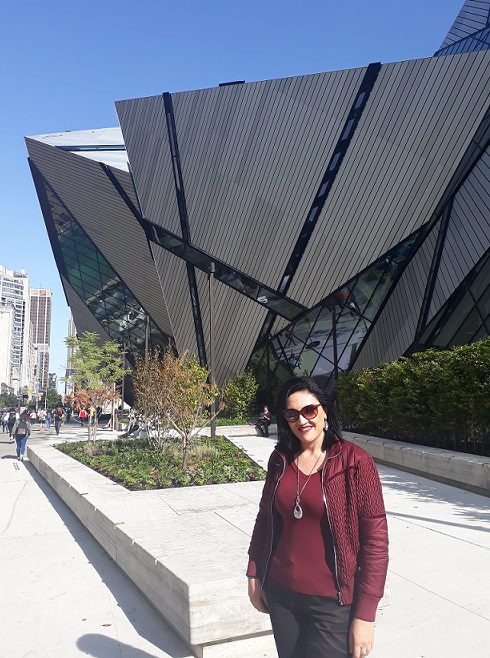
Bonus: Ottawa
We are reaching the end of our visit to the main Toronto Museums … I hope you enjoyed it !!! I sincerely thank you for your company and I’m already telling you what our next destination in Canada will be: getting to know the main sights of Ottawa (the country’s capital), with the right to ride an amphibious vehicle and many other activities (https://cadaviagemumabagagem.com/os-15-mais-de-ottawa/). But before that, since we are talking about museums, I will take you to meet with me incredible exhibitions that are happening in São Paulo. I wait for you in the next posts ?


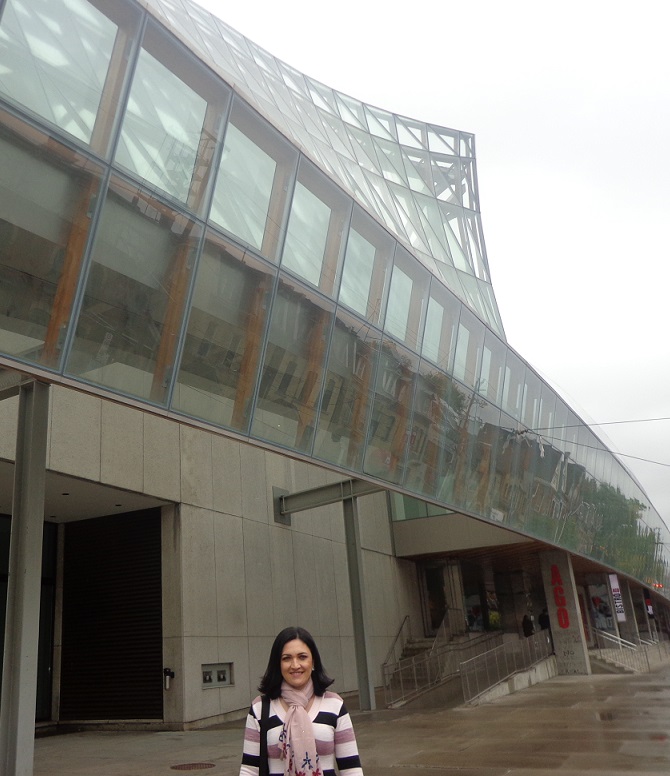
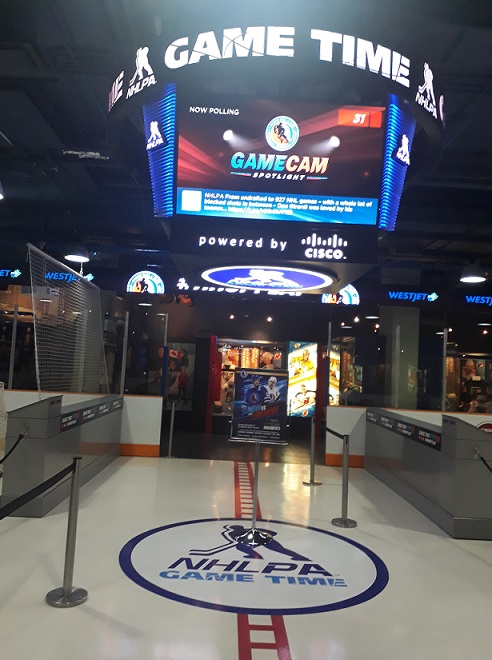
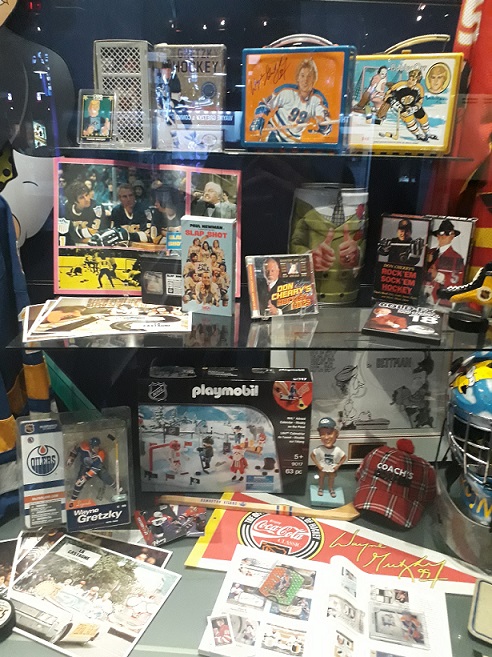
Show de bola! Muito lindo mesmo!
Fico muito feliz que tenha gostado, Alan!!!! Muito obrigada!!!!???
Thank you very much!!! ??